Users Manual
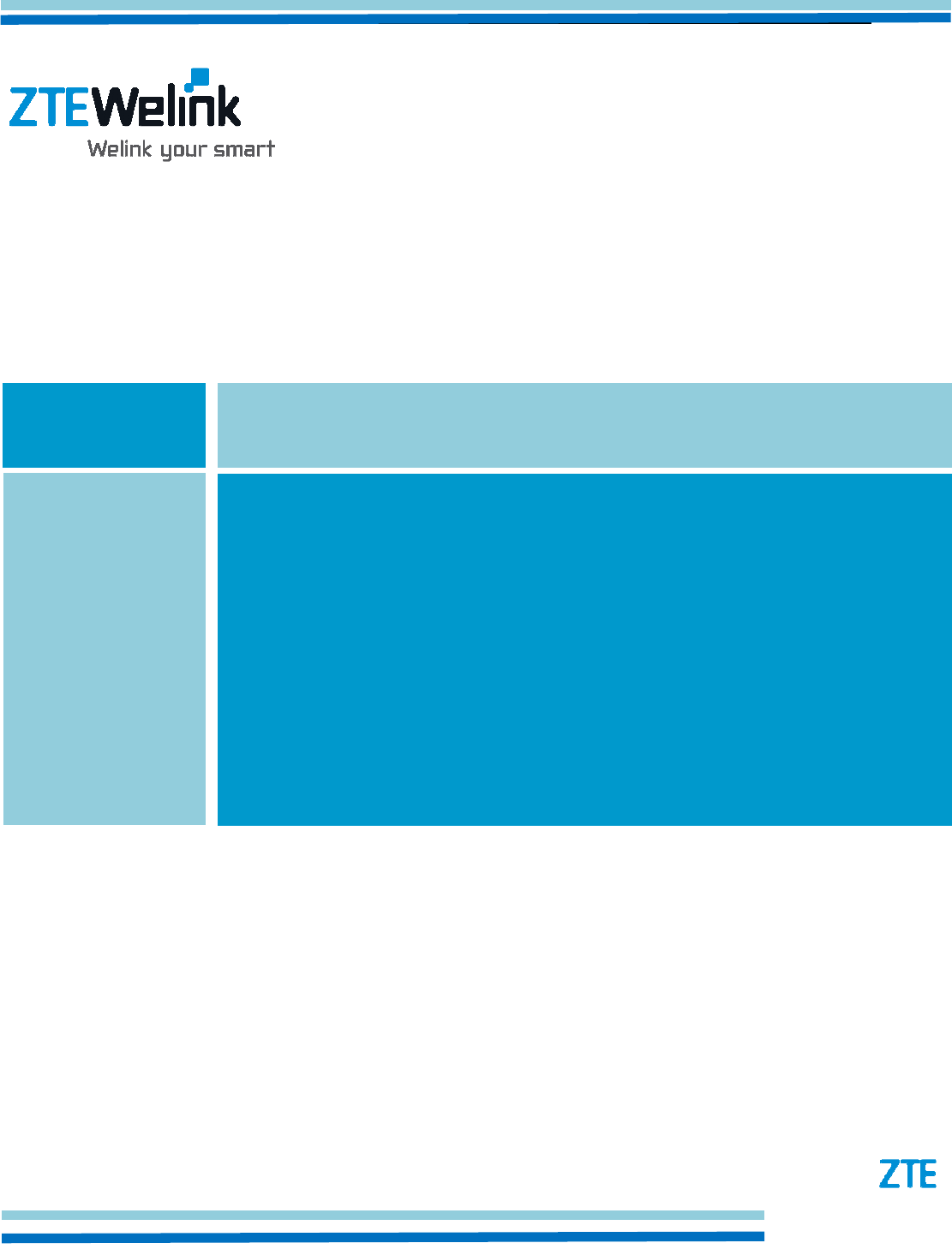
H
ARDWARE
D
EVELOPMENT
G
UIDE
Version: V1.0
Date: 2016-02-26
LTE Module Series
ME36
3
0
Website: www.ztewelink.com
E-mail: ztewelink@zte.com.cn
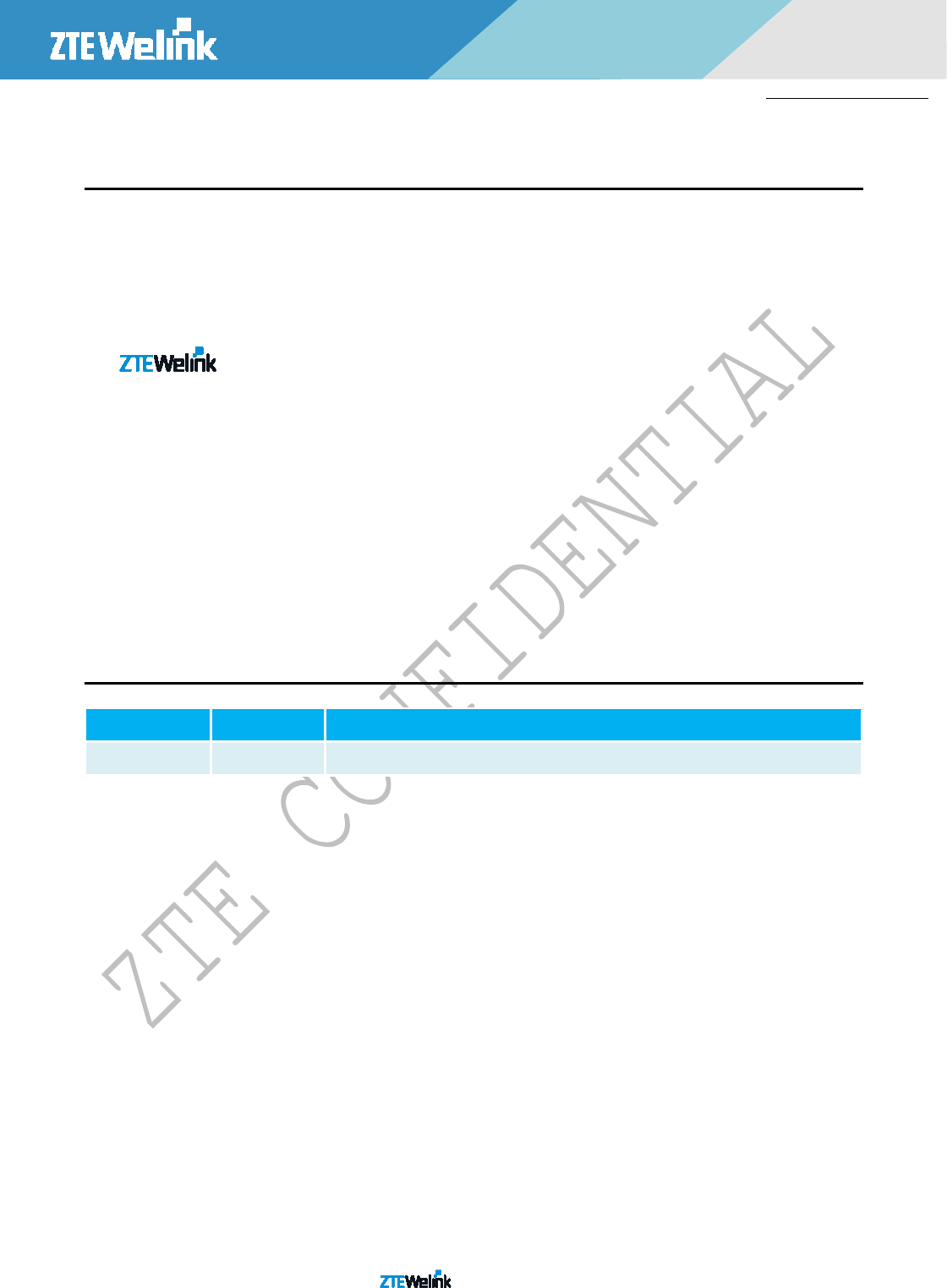
All Rights reserved, No Spreading abroad without Permission I
ME3630
Hardware Development Guide
L
EGAL
I
NFORMATION
By receiving the document from Shenzhen ZTEWelink Technology Co., Ltd (shortly referred to as ZTEWelink), you are deemed
to have agreed to the following terms. If you don’t agree to the following terms, please stop using the document.
Copyright © 2015 Shenzhen ZTEWelink Technology Co., Ltd. All rights reserved. The document contains ZTEWelink’s
proprietary information. Without the prior written permission of ZTEWelink, no entity or individual is allowed to reproduce, transfer,
distribute, use and disclose this document or any image, table, data or other information contained in this document.
is the registered trademark of ZTEWelink. The name and logo of ZTEWelink are ZTEWelink’s trademark or
registered trademark. Meanwhile, ZTEWelink is granted to use ZTE Corporation’s registered trademark. The other products or
company names mentioned in this document are the trademark or registered trademark of their respective owner. Without the prior
written permission of ZTEWelink or the third-party oblige, no one is allowed to read this document.
The product meets the design requirements of environmental protection and personal security. The storage, use or disposal of
products should abide by the product manual, relevant contract or the laws and regulations of relevant country.
ZTEWelink reserves the right to make modifications on the product described in this document without prior notice, and keeps
the right to revise or retrieve the document any time.
If you have any question about the manual, please consult the company or its distributors promptly.
Copyright © ZTEWeLink Technology Co., LTD, All rights reserved.
R
EVISION
H
ISTORY
Version Date Description
1.0 2016-02-26 1
st
released version
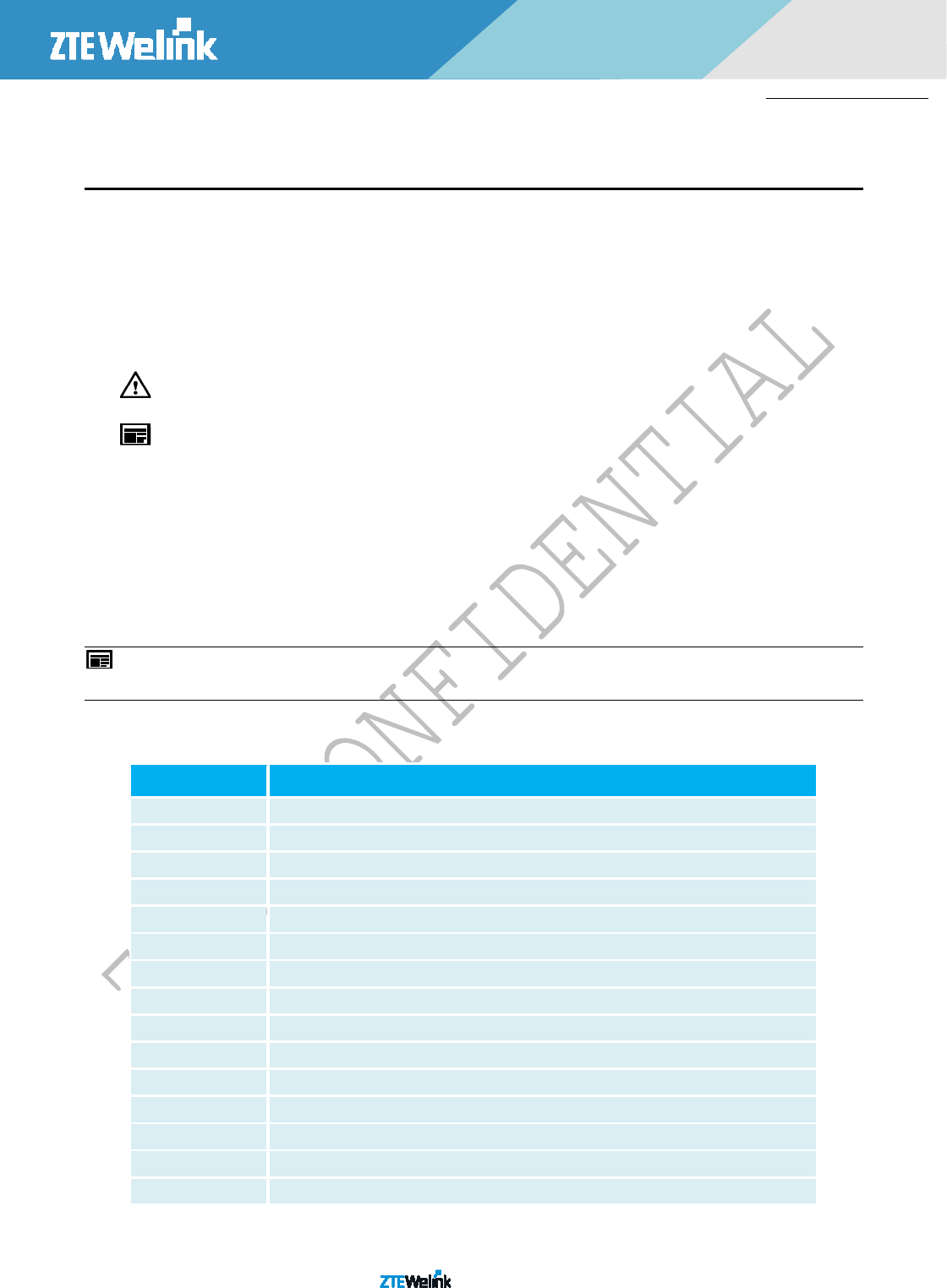
All Rights reserved, No Spreading abroad without Permission II
ME3630
Hardware Development Guide
A
BOUT
T
HIS
D
OCUMENT
A. Application Range
This document is the Product Technical Specification for the ME3630 GSM/CDMA/WCDMA/ TD-SCDMA/LTE TDD/LTE FDD
module. It defines the high level product features and illustrates the interface for these features. This document is intended to cover
the hardware aspects of the product, including electrical and mechanical.
B. Reading Note
The symbols below are the reading notes you should pay attention on:
: Warning or Attention
: Note or Remark
C. Purpose
This document provides the hardware solutions and development fundamentals for a product with the module. By reading this
document, the user can have an overall knowledge of the module and a clear understanding of the technical parameters. With this
document, the user can successfully fulfill the application and development of wireless Internet product or equipment.
Besides the product features and technical parameters, this document also provides the product reliability tests and related
testing standards, RF performance indexes and a guide on the design of user circuits, to provide the user with a complete design
reference.
NOTE: To ensure the module manufacturing and welding quality, do as the chapter 7 of Manufacturing Guide in this document. The force on
the squeegee should be adjusted so as to produce a clean stencil surface on a single pass and ensure the module soldering quality.
D. Abbreviations
Table below is a list of abbreviations involved in this document, as well as the English full names.
Abbreviations Full Name
3GPP Third Generation Partnership Project
AP Another name of DTE
CHAP Challenge Handshake Authentication Protocol
CE European Conformity
CMOS Complementary Metal Oxide Semiconductor
DCE Data Communication Equipment
DL Downlink
DTE Data Terminal Equipment
EIA Electronic Industries Association
EMC Electromagnetic Compatibility
ESD Electro-Static discharge
ESR Equivalent Series Resistance
FDD Frequency Division Duplex
GPIO General-purpose I/O
LCC Leadless Chip Carrier

All Rights reserved, No Spreading abroad without Permission III
ME3630
Hardware Development Guide
LDO Low-Dropout
LED Light Emitting Diode
LTE Long Term Evolution
ME Mobile Equipment
MO Mobile Origination Call
MT Mobile Termination Call
MSB Most Significant Bit
PC Personal Computer
PCB Printed Circuit Board
PDA Personal Digital Assistant
PDU Protocol Data Unit
PAP Password Authentication Protocol
PPP Point to Point Protocol
RTC Real Time Clock
SMS Short Messaging Service
SMT Surface Mount Technology
SPI Serial Peripheral Interface
TBD To Be Determined
TCP Transmission Control Protocol
TIS Total Isotropic Sensitivity
TRP Total Radiated Power
TVS Transient Voltage Suppressor
UART Universal Asynchronous Receiver-Transmitter
UDP User Datagram Protocol
UL Up Link
USB Universal Serial Bus
USIM Universal Subscriber Identity Module
URC Unsolicited result code
VIH Logic High level of input voltage
VIL Logic Low level of input voltage
VOH Logic High level of output voltage
VOL Logic Low level of output voltage
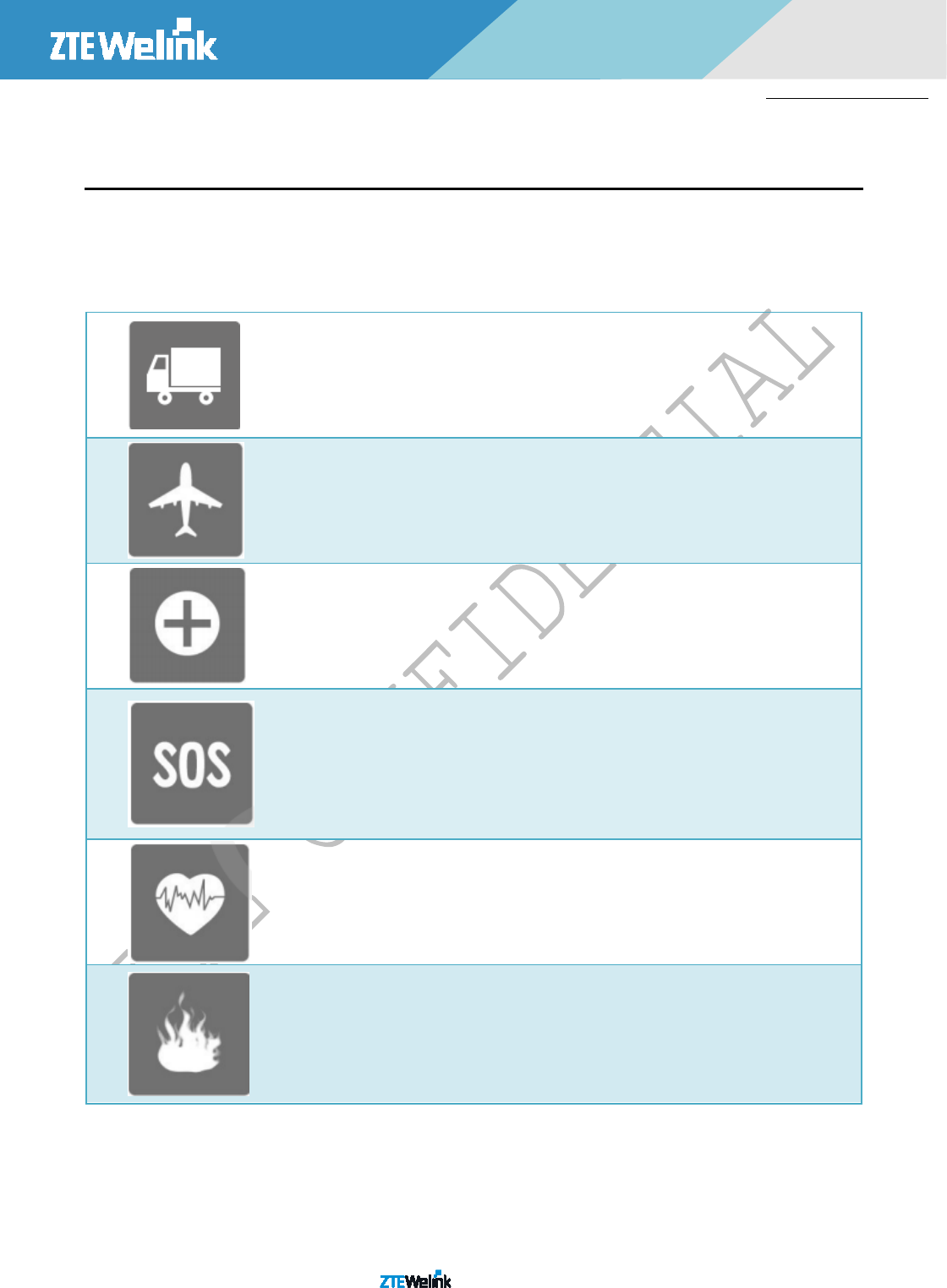
All Rights reserved, No Spreading abroad without Permission IV
ME3630
Hardware Development Guide
S
AFETY
I
NFORMATION
The following safety precautions must be observed during all phases of the operation, such as usage, service or repair of any
cellular terminal or mobile incorporating ME3610 module. Manufacturers of the cellular terminal should send the following safety
information to users and operating personnel and to incorporate these guidelines into all manuals supplied with the product. If not
so, ZTEWelink does not take on any liability for customer failure to comply with these precautions.
Full attention must be given to driving at all times in order to reduce the risk of an accident. Using a
mobile while driving (even with a hands free kit) cause distraction and can lead to an accident. You must
comply with laws and regulations restricting the use of wireless devices while driving.
Switch off the cellular terminal or mobile before boarding an aircraft. Make sure it switched off. The
operation of wireless appliances in an aircraft is forbidden to prevent interference with communication
systems. Consult the airline staff about the use of wireless devices on boarding the aircraft, if your device
offers a Airplane Mode which must be enabled prior to boarding an aircraft.
Switch off your wireless device when in hospitals or clinics or other health care facilities. These
requests are designed to prevent possible interference with sensitive medical equipment.
GSM cellular terminals or mobiles operate over radio frequency signal and cellular network and
cannot be guaranteed to connect in all conditions, for example no mobile fee or an invalid SIM card. While
you are in this condition and need emergent help, please remember using emergency call. In order to make
or receive call, the cellular terminal or mobile must be switched on and in a service area with adequate
cellular signal strength.
Your cellular terminal or mobile contains a transmitter and receiver. When it is on, it receives and
transmits radio frequency energy. RF interference can occur if it is used close to TV set, radio, computer or
other electric equipment.
In locations with potentially explosive atmospheres, obey all posted signs to turn off wireless devices
such as your phone or other cellular terminals. Areas with potentially explosive atmospheres including
fuelling areas, below decks on boats, fuel or chemical transfer or storage facilities, areas where the air
contains chemicals or particles such as grain, dust or metal powders.
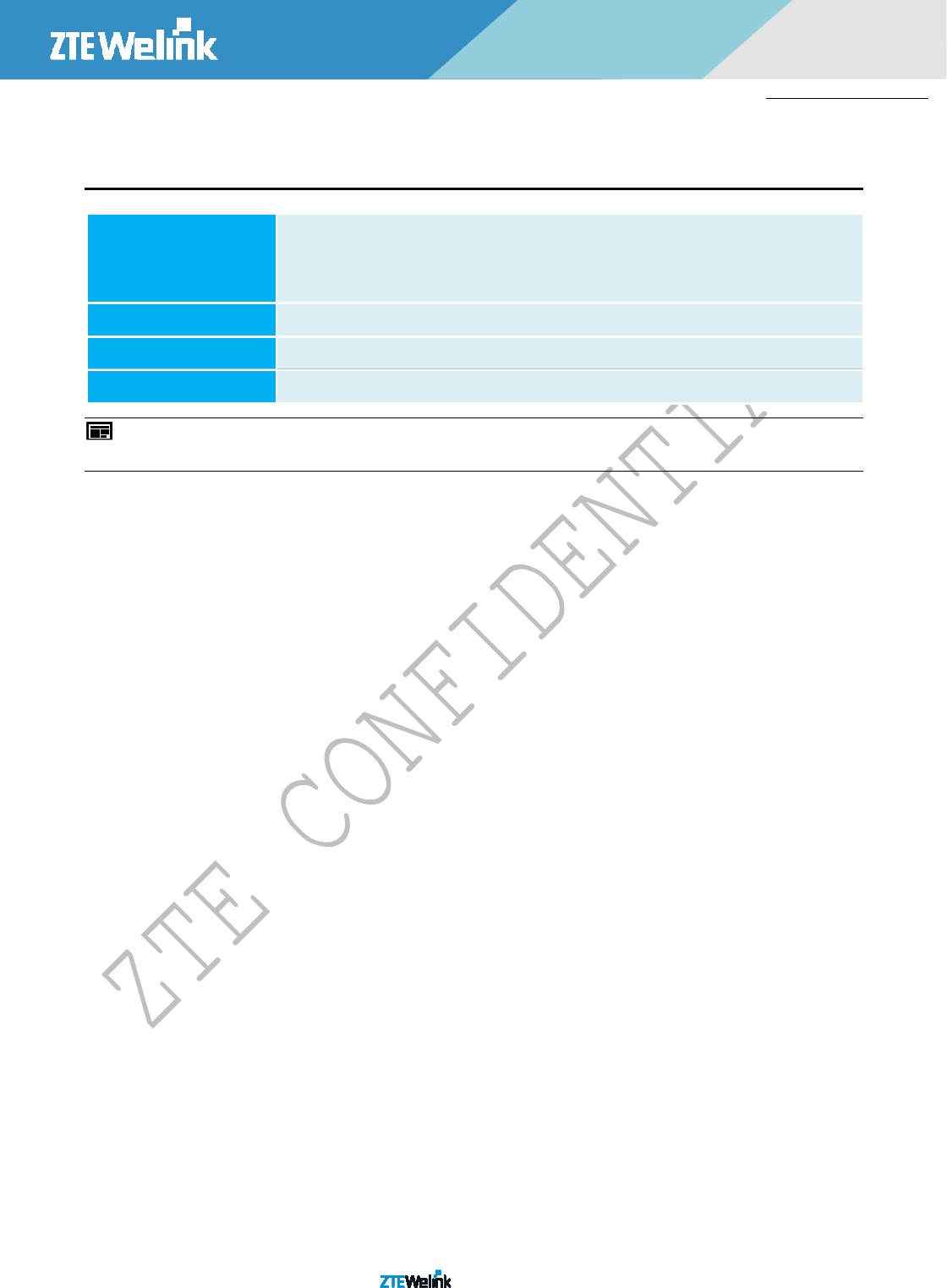
All Rights reserved, No Spreading abroad without Permission V
ME3630
Hardware Development Guide
C
ONTACT
I
NFORMATION
Post 9/F, Tower A, Hans Innovation Mansion,
North Ring Rd., No.9018, Hi-Tech Industrial Park,
Nanshan District, Shenzhen.
Web www.ztewelink.com
Phone +86-755-26902600
E-Mail ztewelink@zte.com.cn
Note: Consult our website for up-to-date product descriptions, documentation, application notes, firmware upgrades, troubleshooting tips,
and press releases
Besides, ZTEWelink provides various technical support ways to the customers, such as support by phone, website, instant
messaging, E-mail and on-site.
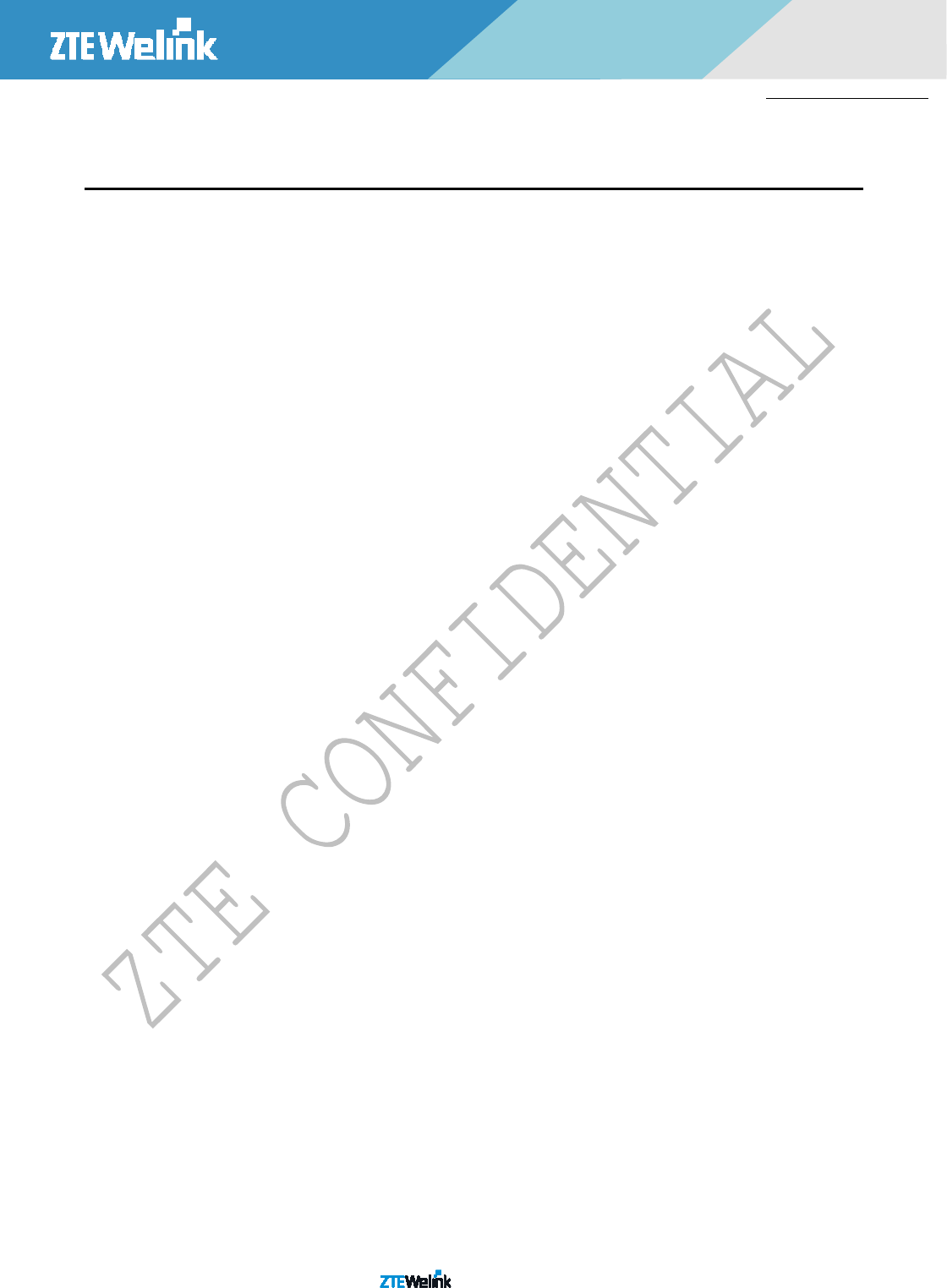
All Rights reserved, No Spreading abroad without Permission VI
ME3630
Hardware Development Guide
C
ONTENTS
1. Product Overview ......................................................................................................................................................................... 1
1.1. General Description....................................................................................................................................................................................................... 1
1.2. Key Features ........................................................................................................................................................................................................ 2
1.3. Function Diagram ........................................................................................................................................................................................................ 4
1.4. Evaluation Board ........................................................................................................................................................................................................ 5
2. Application Interface ..................................................................................................................................................................... 6
2.1. General Description ............................................................................................................................................................................. 6
2.2. Pin Assignment ................................................................................................................................................................................... 6
2.3. Pin Description ................................................................................................................................................................................... 7
2.4. Power Supply ................................................................................................................................................................................. 13
2.4.1. Power Supply Pins ................................................................................................................................................................... 13
2.4.2. Decrease Voltage Drop ............................................................................................................................................................ 13
2.4.3. Reference Circuit of Power Supply .......................................................................................................................................... 13
2.5. Turn on Scenarios .............................................................................................................................................................................. 14
2.6. USIM Card Interface........................................................................................................................................................................... 15
2.6.1. Description of PINs .................................................................................................................................................................. 15
2.6.2. Design Considerations for USIM Card Holder .......................................................................................................................... 17
2.7. USB Interface ................................................................................................................................................................................. 18
2.8. UART Interface ................................................................................................................................................................................. 20
2.9. Network Status Indication ................................................................................................................................................................. 22
2.10. ADC Interface ................................................................................................................................................................................. 22
2.11. WAKEUP_OUT Signal ....................................................................................................................................................................... 23
2.12. GPIO Interface ............................................................................................................................................................................... 23
3. Antenna Interface ....................................................................................................................................................................... 24
3.1. Pin Definition ................................................................................................................................................................................. 24
3.2. Reference Design ............................................................................................................................................................................... 24
3.3. Reference PCB Layout of Antenna ..................................................................................................................................................... 24
3.4. Suggestions for EMC & ESD Design .................................................................................................................................................... 25
3.4.1. EMC Design Requirements ...................................................................................................................................................... 25
3.4.2. ESD Design Requirements ....................................................................................................................................................... 25
3.5. Test Methods for Whole-Set Antenna OTA ....................................................................................................................................... 26
4. Electrical, Reliability and Radio Characteristics ............................................................................................................................ 27
4.1. Absolute Maximum Ratings ............................................................................................................................................................... 27
4.2. Operating Temperature ..................................................................................................................................................................... 27
4.3. Current Consumption ........................................................................................................................................................................ 27
4.4. RF Output Power ............................................................................................................................................................................... 28
4.5. RF Receiving Sensitivity ...................................................................................................................................................................... 28
4.6. GNSS Technical Parameters ............................................................................................................................................................... 29
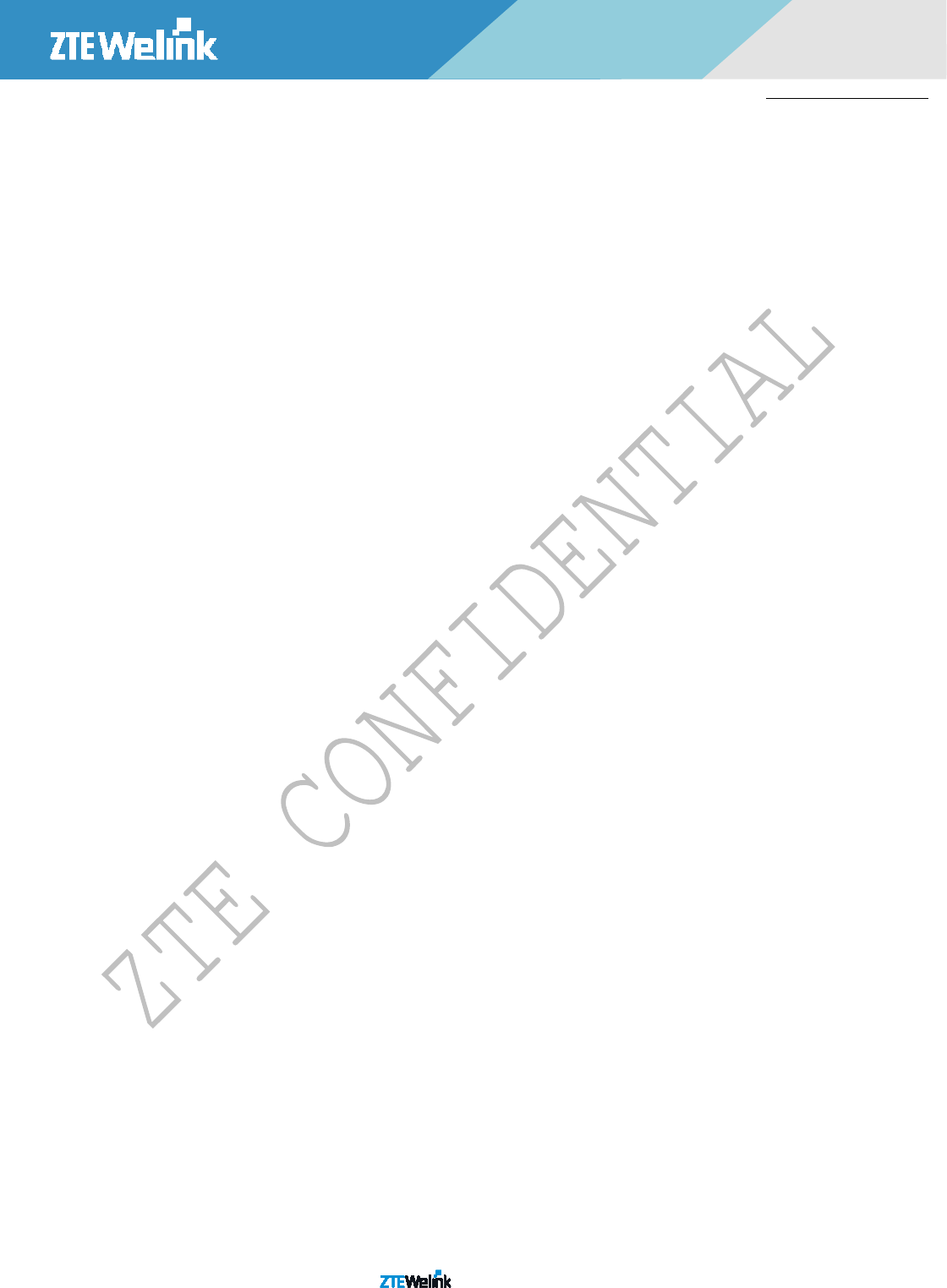
All Rights reserved, No Spreading abroad without Permission VII
ME3630
Hardware Development Guide
4.7. Electrostatic Discharge ...................................................................................................................................................................... 29
5. Mechanical Dimensions .............................................................................................................................................................. 30
5.1. Mechanical Dimensions of the Module ............................................................................................................................................. 30
5.2. Footprint of Recommendation .......................................................................................................................................................... 31
5.3. Top View of the Module .................................................................................................................................................................... 32
5.4. Bottom View of the Module .............................................................................................................................................................. 32
6. Related Test & Test Standard ...................................................................................................................................................... 33
6.1. Testing Reference .............................................................................................................................................................................. 33
6.2. Description of Testing Environment .................................................................................................................................................. 34
6.3. Reliability Testing Environment ......................................................................................................................................................... 35
7. SMT Process and Baking Guide .................................................................................................................................................... 36
7.1. Storage Requirements ....................................................................................................................................................................... 36
7.2. Module Plainness Standard ............................................................................................................................................................... 36
7.3. Process Routing Selection .................................................................................................................................................................. 36
7.3.1. Solder Paste Selection ............................................................................................................................................................. 36
7.3.2. Design of module PAD’s steel mesh opening on main board .................................................................................................. 36
7.3.3. Module Board’s SMT process .................................................................................................................................................. 37
7.3.4. Module Soldering Reflow Curve .............................................................................................................................................. 38
7.3.5. Reflow method ........................................................................................................................................................................ 39
7.3.6. Maintenance of defects .......................................................................................................................................................... 39
7.4. Module’s Baking Requirements ......................................................................................................................................................... 40
7.4.1. Module’s Baking Environment ................................................................................................................................................ 40
7.4.2. Baking device and operation procedure ................................................................................................................................. 40
7.4.3. Module Baking Conditions ...................................................................................................................................................... 40
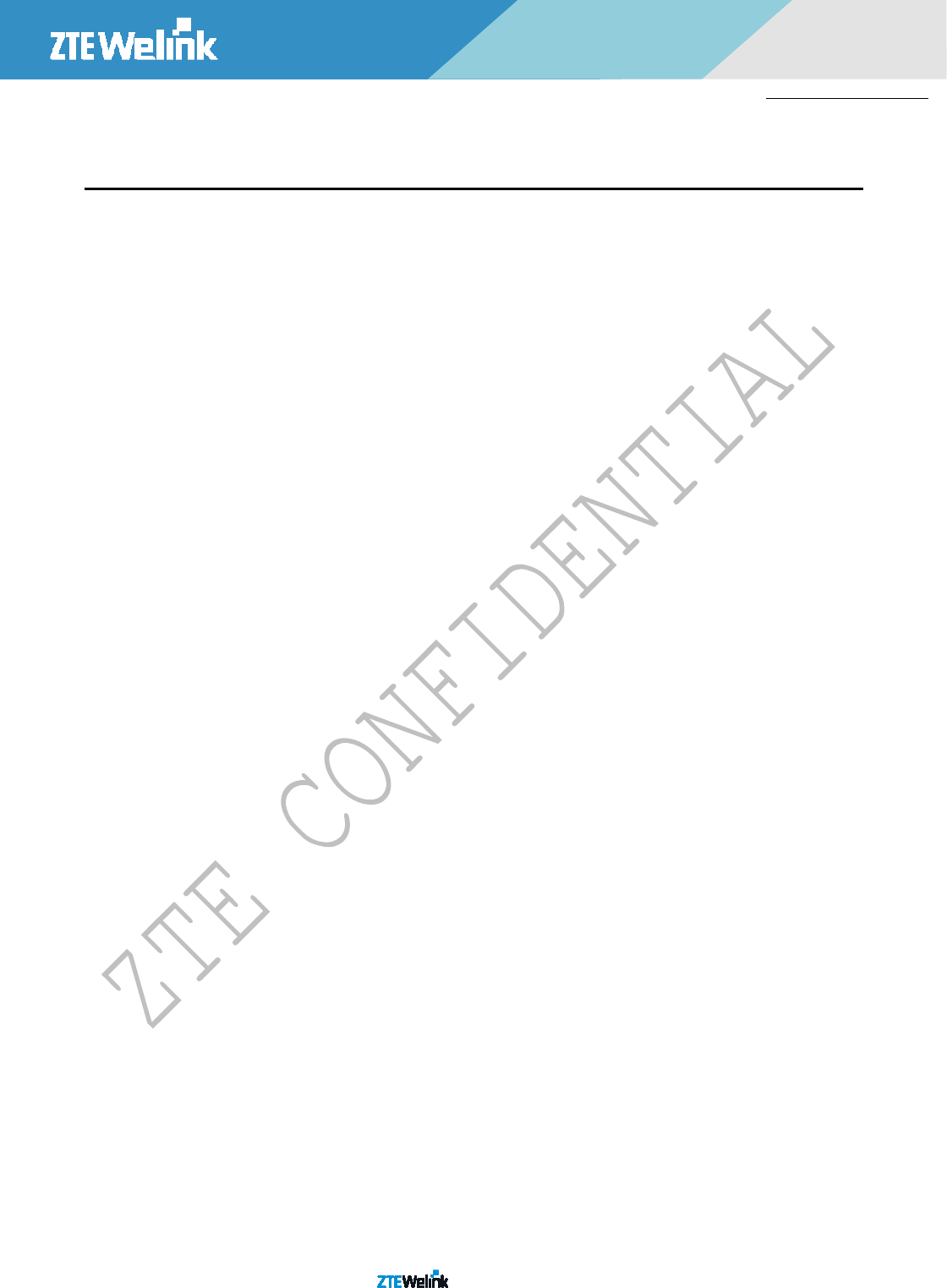
All Rights reserved, No Spreading abroad without Permission VIII
ME3630
Hardware Development Guide
T
ABLES
Table 1-1 ME3630 Reference Using Area .................................................................................................................................................. 1
Table 1-2 ME3630 Supported Band ........................................................................................................................................................... 1
Table 1-3 ME3630 Key Features ............................................................................................................................................................. 3
Table 2-1 IO Parameters Definition ........................................................................................................................................................ 7
Table 2-2 Logic levels Description ........................................................................................................................................................... 8
Table 2-3 Pin Description ........................................................................................................................................................................ 8
Table 2-4 Power Supply ........................................................................................................................................................................ 13
Table 2-5 POWER_ON/OFF Pin Description .......................................................................................................................................... 14
Table 2-6 Power-on Time...................................................................................................................................................................... 15
Table 2-7 Pin Definition of the USIM Interface ..................................................................................................................................... 15
Table 2-8 Pin Description of Molex USIM Card Holder ......................................................................................................................... 17
Table 2-9 Pin Description of Amphenol USIM Card Holder .................................................................................................................. 18
Table 2-10 USB Pin Description ............................................................................................................................................................ 19
Table 2-11 Pin Definition of the Main UART Interface .......................................................................................................................... 20
Table 2-12 Pin Definition of the Debug UART Interface ....................................................................................................................... 20
Table 2-13 Pin Definition of Network Indicator .................................................................................................................................... 22
Table 2-14 Working State of the Network Indicator ............................................................................................................................. 22
Table 2-15 Pin Definition of the ADC .................................................................................................................................................... 22
Table 2-16 Characteristic of the ADC .................................................................................................................................................... 23
Table 2-17 Pin Definition of WAKEUP_OUT .......................................................................................................................................... 23
Table 2-18 Pin Definition of GPIO ......................................................................................................................................................... 23
Table 3-1 Pin Definition of GPIO ........................................................................................................................................................... 24
Table 4-1 Absolute Maximum Ratings .................................................................................................................................................. 27
Table 4-2 Operating Temperature ........................................................................................................................................................ 27
Table 4-3 Averaged standby DC power consumption [1] ..................................................................................................................... 27
Table 4-4 Averaged standby DC power consumption [2] ..................................................................................................................... 27
Table 4-5 Averaged standby DC power consumption [3] ..................................................................................................................... 28
Table 4-6 Conducted RF Output Power ................................................................................................................................................ 28
Table 4-7 Conducted RF Receiving Sensitivity [1] ................................................................................................................................. 28
Table 4-8 Conducted RF Receiving Sensitivity [2] ................................................................................................................................. 28
Table 4-9 GNSS Technical Parameters .................................................................................................................................................. 29
Table 4-10 ESD ...................................................................................................................................................................................... 29
Table 6-1 Testing Standard ................................................................................................................................................................... 33
Table 6-2 Testing Environment ............................................................................................................................................................. 34
Table 6-3 Testing Instrument & Device ................................................................................................................................................ 34
Table 6-4 Reliability Features ............................................................................................................................................................... 35
Table 7-1 Baking parameters ................................................................................................................................................................ 36
Table 7-2 LCC module PAD’s steel mesh opening ................................................................................................................................. 36
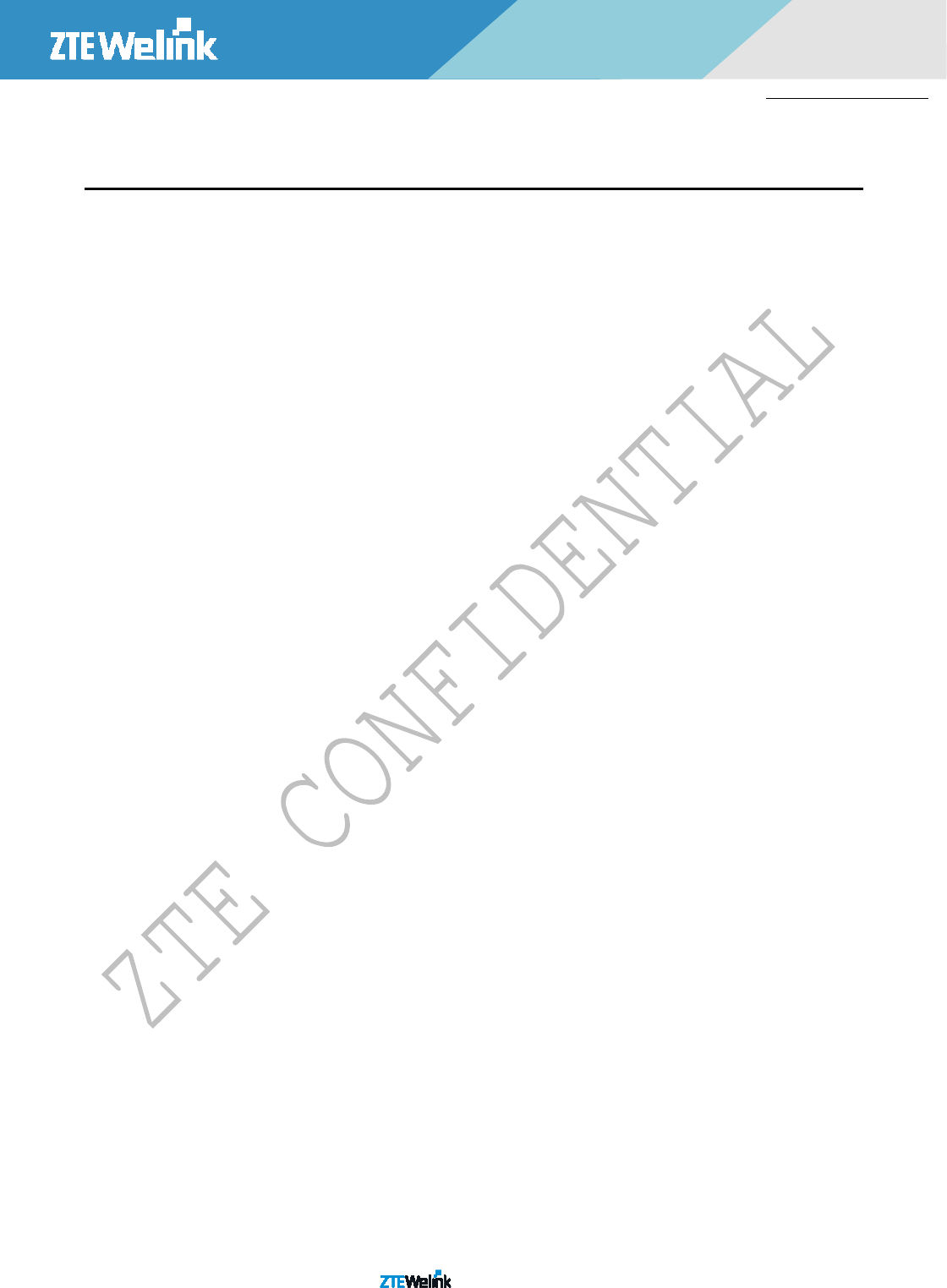
All Rights reserved, No Spreading abroad without Permission IX
ME3630
Hardware Development Guide
F
IGURES
Figure 1-1 System Connection Structure ................................................................................................................................................ 5
Figure 2-1 Pin Assignment ...................................................................................................................................................................... 7
Figure 2-2 Structure of the Power Supply ............................................................................................................................................. 13
Figure 2-3 Reference circuit of AAT2138 .............................................................................................................................................. 14
Figure 2-4 Reference circuit of LDO ...................................................................................................................................................... 14
Figure 2-5 Timing of Turning on Mode ................................................................................................................................................. 15
Figure 2-6 Reference Circuit of the 8 Pin USIM Card ............................................................................................................................ 15
Figure 2-7 Reference Circuit of the 6 Pin USIM Card ............................................................................................................................ 16
Figure 2-8 Molex 91228 USIM Card Holder .......................................................................................................................................... 17
Figure 2-9 Amphenol C707 10M006 512 2 USIM Card Holder ............................................................................................................. 18
Figure 2-10 Reference Circuit of USB Application ................................................................................................................................. 19
Figure 2-11 Reference Circuit of USB Communication between module and AP ................................................................................. 19
Figure 2-12 Reference Circuit of Logic Level Translator........................................................................................................................ 21
Figure 2-13 RS232 Level Match Circuit ................................................................................................................................................. 21
Figure 2-14 Reference Circuit of Main UART with 4 Line Level Translator ........................................................................................... 21
Figure 2-15 Reference Circuit of UART with 2 Line Level Translator .................................................................................................... 21
Figure 2-16 Reference Circuit of the Network Indicator ....................................................................................................................... 22
Figure 2-17 The output signal of WAKEUP_OUT .................................................................................................................................. 23
Figure 3-1 Reference Circuit of Antenna Interface ............................................................................................................................... 24
Figure 3-2 The OTA test system of CTIA................................................................................................................................................ 26
Figure 5-1 ME3630 Top and Side Dimensions ...................................................................................................................................... 30
Figure 5-2 ME3630 Bottom Dimensions (Bottom view) ....................................................................................................................... 30
Figure 5-3 Recommended Footprint (Top view) ................................................................................................................................... 31
Figure 5-4 Location and dimension of test points ................................................................................................................................ 31
Figure 5-5 Top View of the Module ...................................................................................................................................................... 32
Figure 5-6 Bottom View of the Module ................................................................................................................................................ 32
Figure 7-1 Module Board’s Steel Mesh Diagram .................................................................................................................................. 37
Figure 7-2 Material Module Pallet ........................................................................................................................................................ 37
Figure 7-3 Tape Reel Dimension ........................................................................................................................................................... 38
Figure 7-4 Module Furnace Temperature Curve Reference Diagram ................................................................................................... 39
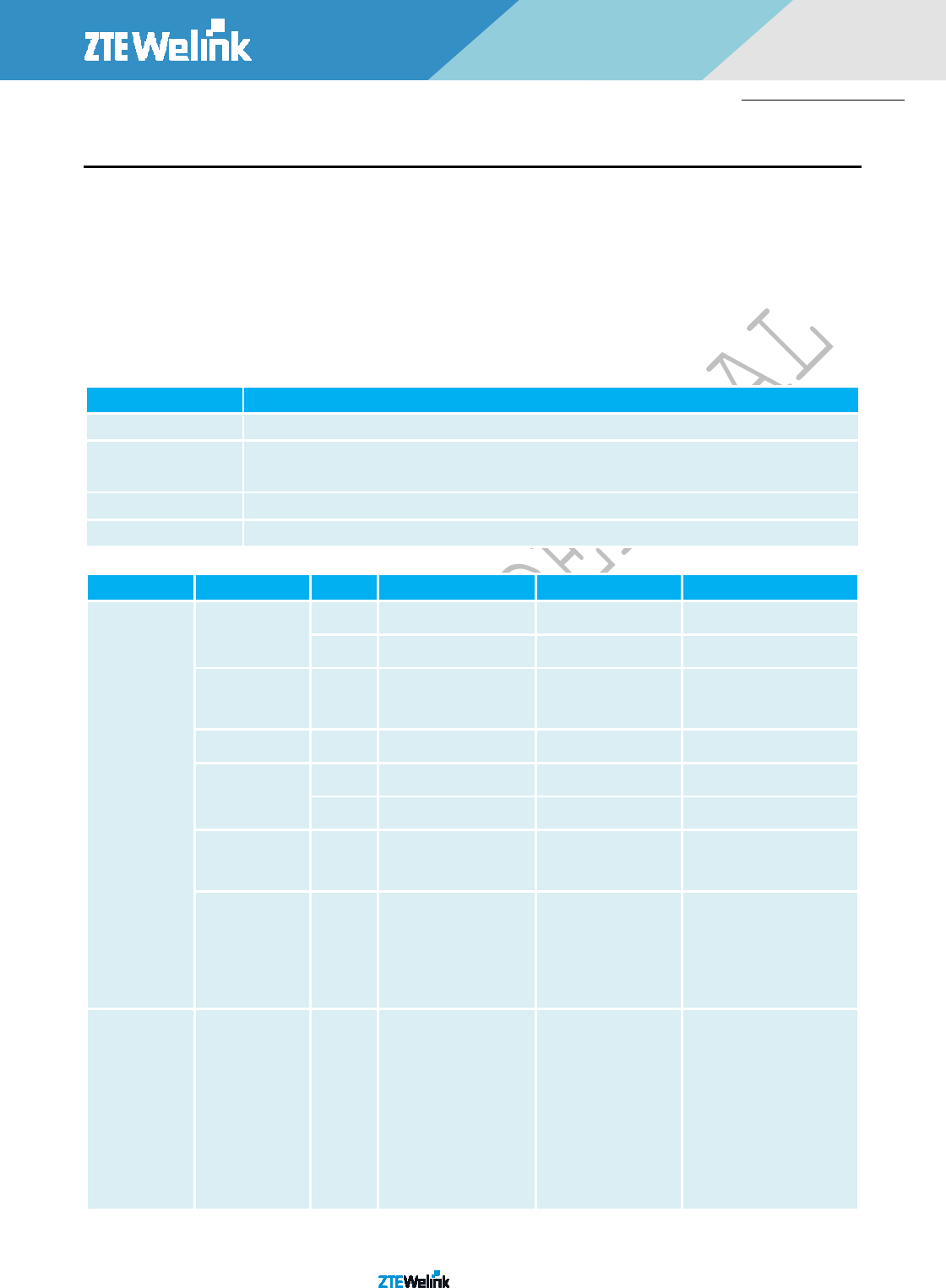
All Rights reserved, No Spreading abroad without Permission 1
ME36
3
0
Hardware Development Guide
1. P
RODUCT
O
VERVIEW
1.1. G
ENERAL
D
ESCRIPTION
ME3630 is a GSM/CDMA/ WCDMA/ TD-SCDMA/LTE TDD/LTE FDD wireless communication module with LCC interface. It is
widely applied to but not limited to the various products and equipment such as laptops, vehicle-mounted terminals, and electric
devices, by providing data services.
ME3630 a GSM/CDMA/ WCDMA/ TD-SCDMA/LTE TDD/LTE FDD wireless communication module. ME3630 contains three
variants ME3630-C1A, ME3630-C1B, ME3630-U1A, ME3630-E1A. Customer can choose the dedicated type based on the wireless
network configuration. The following tables show entire radio band configuration of ME3630 series.
Table 1-1 ME3630 Reference Using Area
Variants Description
ME3630-C1A GSM B3/8,CDMA1X CDMA EVDO,WCDMA B1,TD-SCDMA B34/39,LTE FDD B1/3,LTE TDD B38/39/40/41 for China
ME3630-C1B GSM B3/8,CDMA1X CDMA EVDO,WCDMA B1,TD-SCDMA B34/39,LTE FDD B1/3,LTE TDD
B38/39/40/41 (GNSS and Rx-diversity are not supported yet)for China
ME3630-U1A WCDMA B2/5,LTE FDD B2/4/5/12/17 for America
ME3630-E1A GSM B3/8,WCDMA B1/8,LTE FDD B1/3/7/8/20 for Europe
Table 1-2 ME3630 Supported Band
PID RF support RF Band Transmit Frequency (TX) Receive Frequency (RX) Maximum Output Power
ME3630-C1A
GSM B3 1710 to 1785 MHz 1805 to 1880 MHz 30dBm±2dBm
B8 880 to 915 MHz 925 to 960 MHz 33dBm±2dBm
CDMA
(EVDO/CDMA1X)
BC0 824 to 849MHz 869 to 894 MHz 23dBm~30dBm
WCDMA B1 1920 to 1980 MHz 2110 to 2170 MHz 24dBm+1/-3dBm
TD-SCDMA B34 2010 to 2025 MHz 2010 to 2025 MHz 24dBm+1/-3dBm
B39 1880 to 1920 MHz 1880 to 1920 MHz 24dBm+1/-3dBm
LTE FDD B1
B3
1920 to 1980 MHz
1710 to 1785 MHz
2110 to 2170 MHz
1805 to 1880MHZ
23dBm±2.7dBm
23dBm±2.7dBm
LTE TDD B38
B39
B40
B41
2570 to 2620MHZ
1880 to 1920MHZ
2300 to 2400MHZ
2496 to 2690MHZ
2570 to 2620MHZ
1880 to 1920MHZ
2300 to 2400MHZ
2496 to 2690MHZ
23dBm±2.7dBm
23dBm±2.7dBm
23dBm±2.7dBm
23dBm±2.7dBm
ME3630-U1A
LTE FDD
WCDMA
B2
B4
B5
B12
B17
B2
B5
1850 to 1910 MHz
1710 to 1755 MHz
824 to 849 MHz
698 to 716 MHz
704 to 716 MHz
1850 to 1910 MHz
824 to 849 MHz
1930 to 1990 MHz
2110 to 2155 MHz
869 to 894 MHz
728 to 746 MHz
734 to 746 MHz
1930 to 1990 MHz
869 to 894 MHz
23dBm±2.7dBm
23dBm±2.7dBm
23dBm±2.7dBm
23dBm±2.7dBm
23dBm±2.7dBm
24dBm+1/-3dBm
24dBm+1/-3dBm
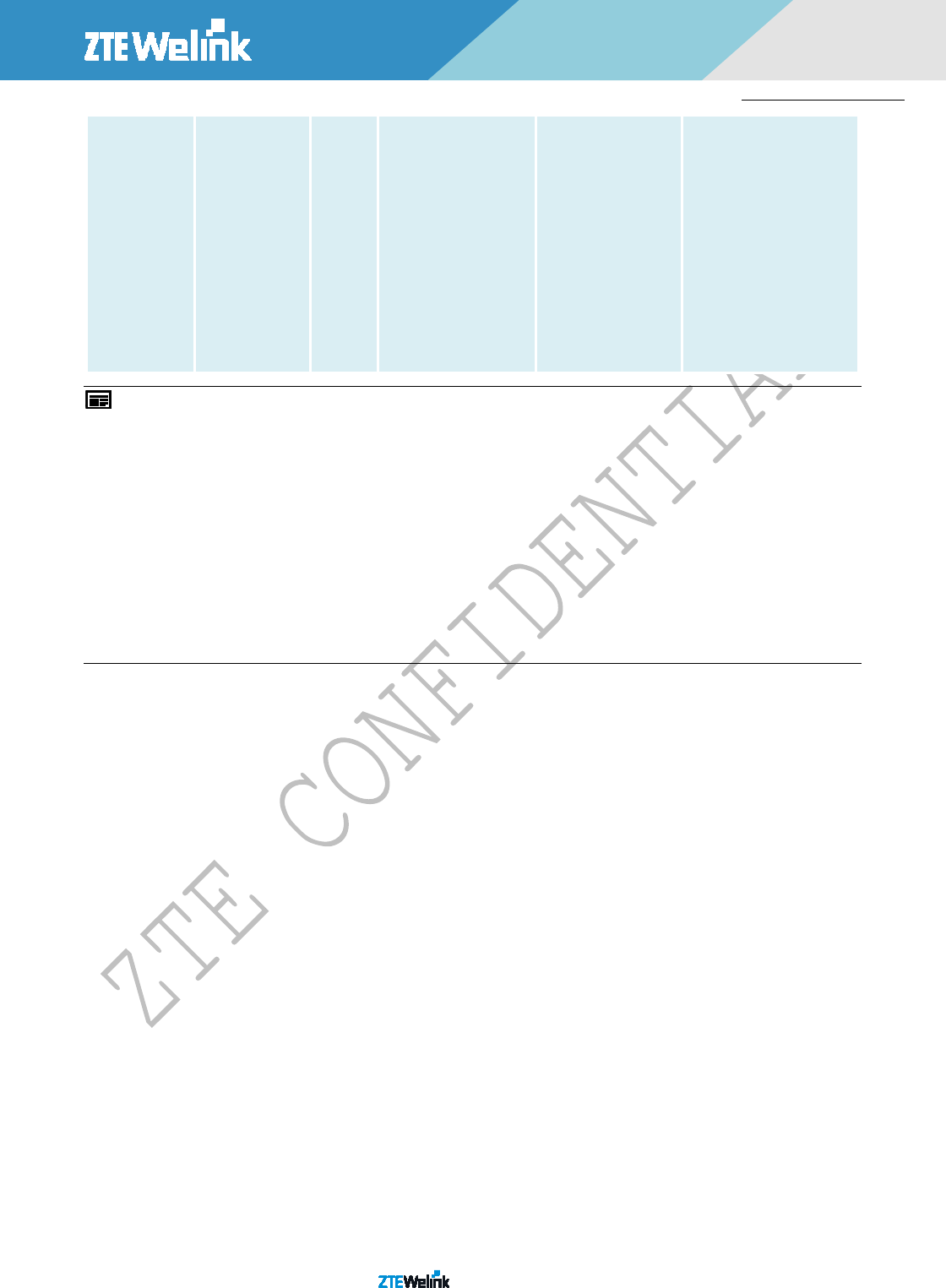
All Rights reserved, No Spreading abroad without Permission 2
ME36
3
0
Hardware Development Guide
ME3630-E1A
LTE FDD
WCDMA
GSM
B1
B3
B7
B8
B20
B1
B8
B3
B8
1920 to 1980 MHz
1710 to 1785 MHz
2500 to 2570 MHz
880 to 915 MHz
832 to 862 MHz
1920 to 1980 MHz
880 to 915MHZ
1710 to 1785 MHz
880 to 915 MHz
2110 to 2170 MHz
1805 to 1880 MHz
2620 to 2690 MHz
925 to 960 MHz
791 to 821 MHz
2110 to 2170 MHz
925 to 960MHZ
1805 to 1880 MHz
925 to 960 MHz
23dBm±2.7dBm
23dBm±2.7dBm
23dBm±2.7dBm
23dBm±2.7dBm
23dBm±2.7dBm
24dBm+1/-3dBm
24dBm+1/-3dBm
30dBm±2dBm
33dBm±2dBm
NOTE:
For convenience of description, in the next content, the “ME3630” means the “ME3630 product serials”.
With a tiny profile of 30.0mm×30.0mm×2.3mm (without label, the label is 0.1mm), ME3630 can meet almost all requirements for M2M
application such as automotive, metering, tracking system, security solutions, routers, wireless POS, mobile computing devices, PDA phone
and tablet PC, etc.
ME3630 is an SMD type module, which can be embedded in customer application through its 96-pin pads including 80 LCC signal pads and
16 ground pads.
ME3630 is integrated with internet service protocols like TCP/UDP and PPP. Extended AT commands have been developed for customer to
use these internet service protocols easily.
1.2. K
EY
F
EATURES
The table below describes the detailed features of the ME3630 module.
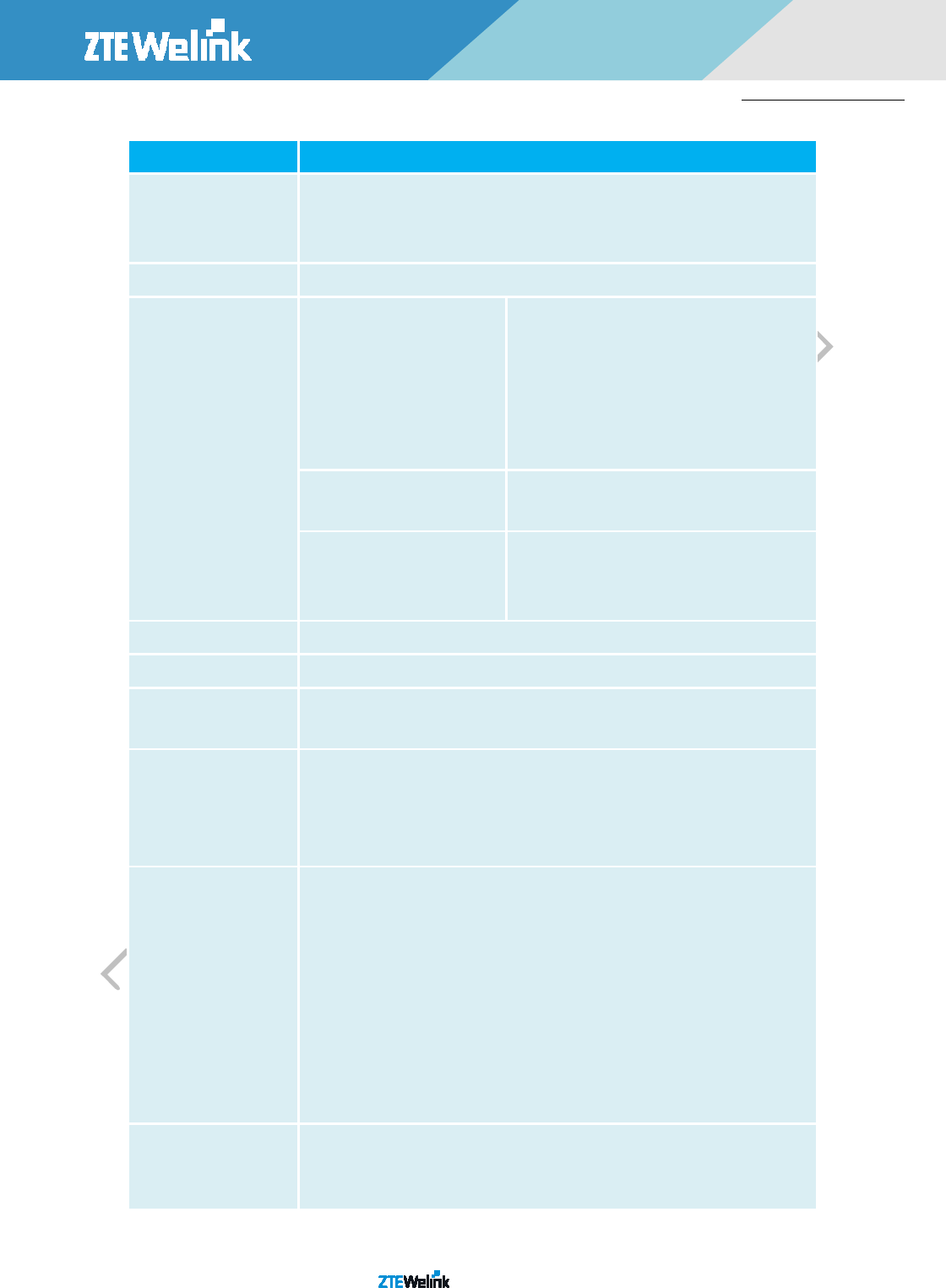
All Rights reserved, No Spreading abroad without Permission 3
ME36
3
0
Hardware Development Guide
Table 1-3 ME3630 Key Features
Feature Description
Physical
Small form factor-30 mm × 30 mm × 2.3mm
RF connection pads (RF main interface)
LCC with 80 pins
Power Supply The range of voltage supply is 3.4V-4.2V, typical value is 3.8V
Frequency Bands
C1A/C1B
LTE FDD B1/B3
LTE TDD B38/B39/B40/B41
WCDMA B1
CDMA BC0
TD-SCDMA B34/B39
GSM B3/B8
U1A LTE FDD B2/B4 /B5/B12/B17
WCDMA B2/B5
E1A LTE FDD B1/B3 /B7/B8/B20
WCDMA B1/B8
GSM B3/B8
Transmission Date LTE : Max 150Mbps(DL)/Max 50Mbps(UL)
Transmitting Power Class 3 (23dBm±2.7dBm) for LTE
Internet Protocol Features Support TCP/PPP/UDP protocols
Support the protocols PAP and CHAP usually used for PPP connections
USIM Interface 1.8v/3v support
SIM extraction/hot plug detection
Support SIM and USIM
Supports SIM application tool kit with proactive SIM commands
UART Interface Support two UART interface: main UART interface and debug UART interface
Main UART interface:
Eight lines on main UART interface
Support RTS and CTS hardware flow control
Baud rate can reach up to 921600 bps,115200 bps by default
Used for AT command, data transmission or firmware upgrade
Multiplexing function
Debug UART interface:
Two lines on debug UART interface, can be used for software debug, firmware upgrade
USB Interface Compliant with USB 2.0 specification (slave only)
Used for AT command communication, data transmission, software debug and firmware upgrade.
USB Driver: Support Windows XP, Windows Vista, Windows 7, Windows 8, Windows
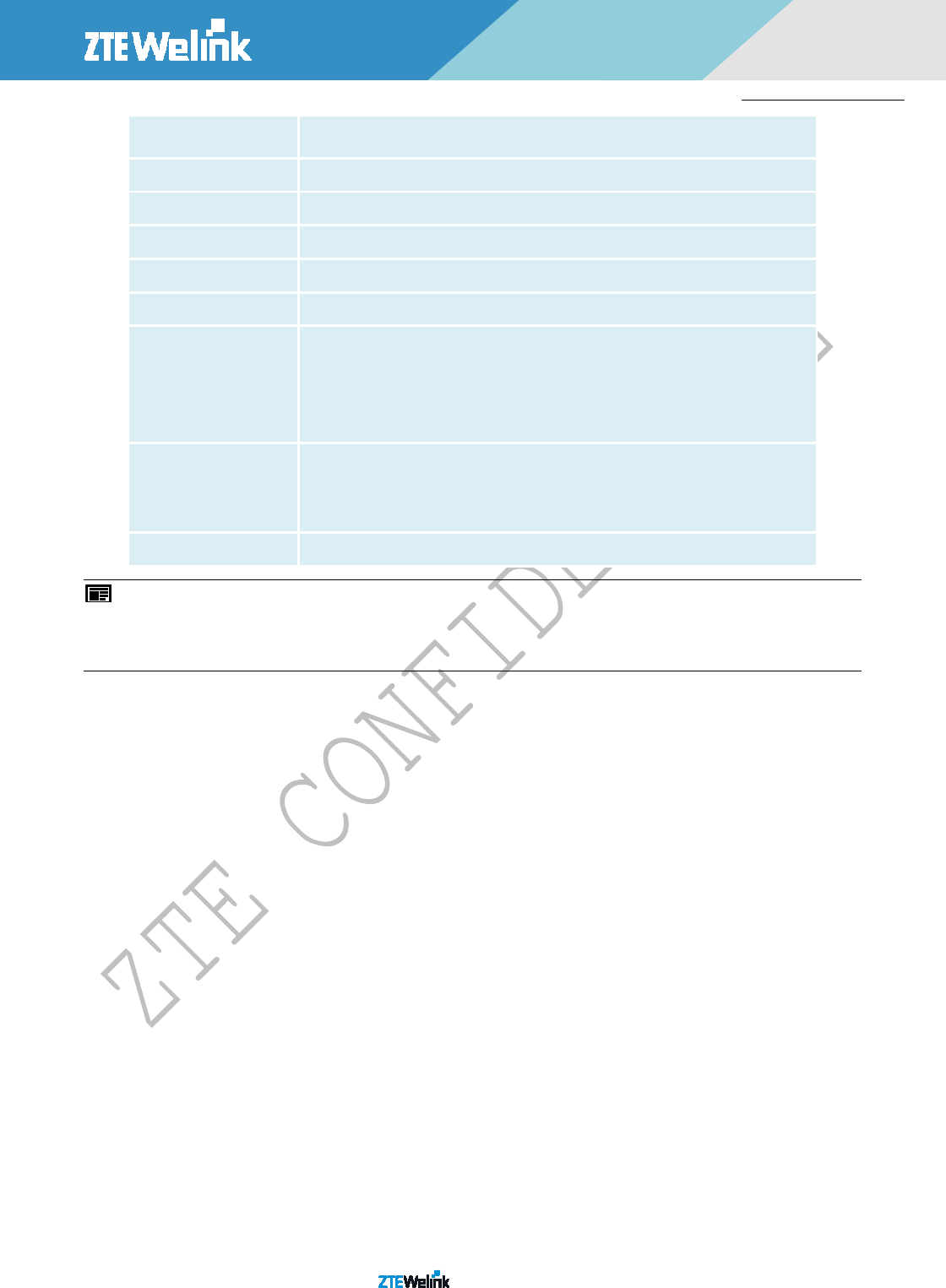
All Rights reserved, No Spreading abroad without Permission 4
ME36
3
0
Hardware Development Guide
10,Windows CE5.0/6.0 and later, Linux 2.6.20 and later, Android 2.3/4.X/5.X
SDIO interface 1.8v support (full speed) 4bits,SDIO compatible to WLAN (802.11)
Antenna Interface Include main antenna ,diversity antenna and GPS antenna(C1B is not included)
Rx-diversity Support WCDMA/LTE Rx-diversity(C1B is not included)
AT commands Compliant with 3GPP TS 27.007,27.005 and ZTEWelink enhanced AT commands
Network Indication Use LED_MODE to indicate network connectivity status
SMS Text and PDU mode
Point to point MO and MT
SMS saving/reading to SIM card or ME storage
SMS cell broadcast
Temperature Range Normal operation: -30°C to +75°C
Restricted operation
1)
: -40°C~ -30°C and +75°C~ +85°C
1)
Storage temperature: -40°C to +85°C
Firmware Upgrade USB interface or main UART interface, debug UART interface
NOTE:
1.
1)
means when the module works within this temperature range, RF performance might degrade. For example, the frequency error and the phase
error would increase.
1.3. F
UNCTION
D
IAGRAM
The figure below shows a block diagram of the ME3630 and illustrates the major functional parts.
Power management
Baseband
Memory (512MB flash + 256MB LPDDR2)
Radio frequency
Peripheral interface
--UART interface
--USIM card interface
--USB interface
--SDIO interface
--SPI interface
--I2C interface
--ADC interface
--Status interface (LED)
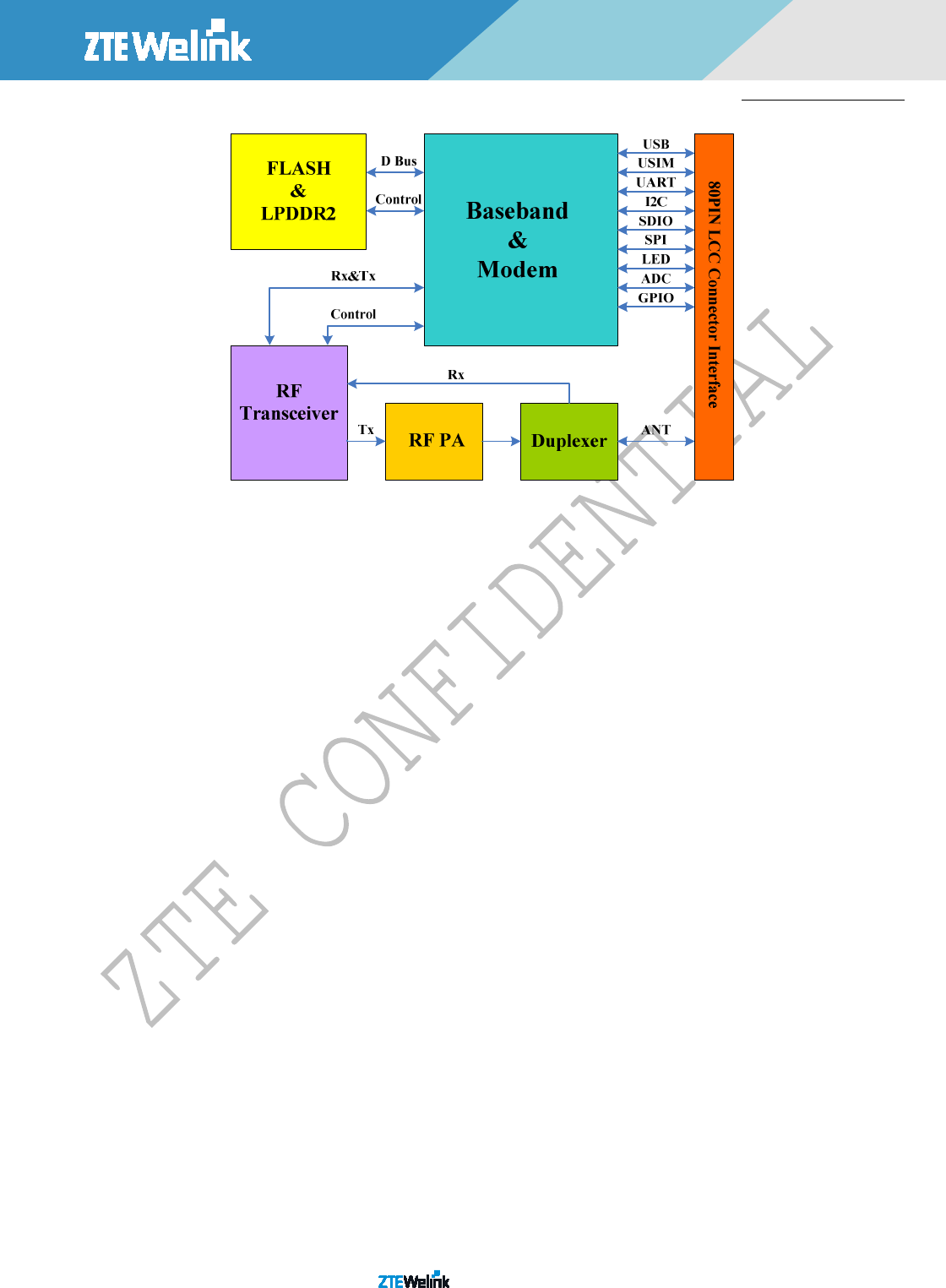
All Rights reserved, No Spreading abroad without Permission 5
ME36
3
0
Hardware Development Guide
Figure 1-1 System Connection Structure
1.4. E
VALUATION
B
OARD
In order to help you to develop applications with ME3630, ZTEWelink supplies an evaluation board (G2000), RS-232 to USB
cable, USB data cable, power adapter, antenna and other peripherals to control or test the module. For details, please refer to the
related document [ZTEWelink G2000 Dev Board User Guide_V1.2].
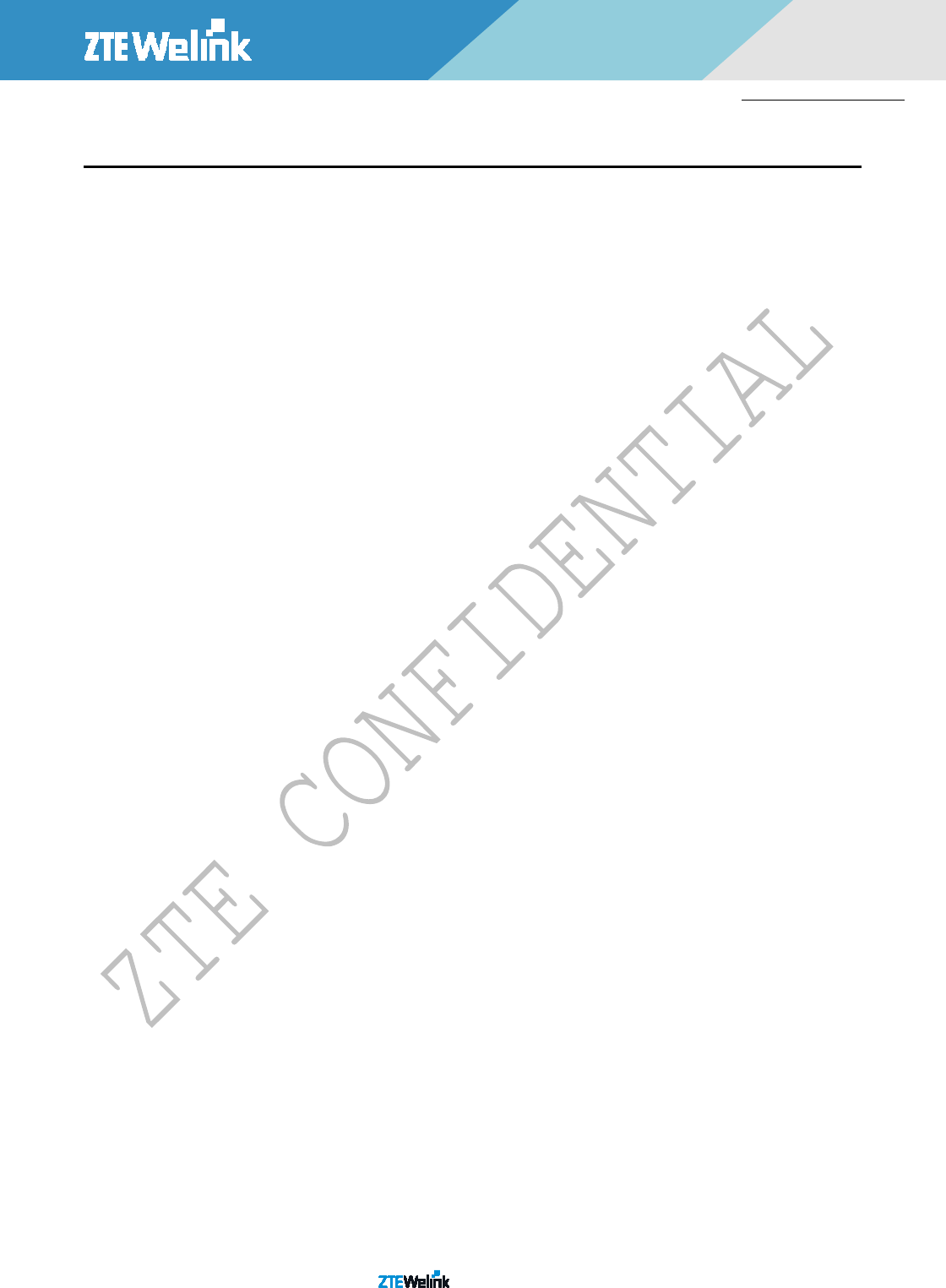
All Rights reserved, No Spreading abroad without Permission 6
ME36
3
0
Hardware Development Guide
2. A
PPLICATION
I
NTERFACE
2.1. G
ENERAL
D
ESCRIPTION
ME3630 is equipped with an 80-pin 0.72mm pitch SMT pads plus 16-pin ground pads and reserved pads that connect to
customer’s cellular application platform. Sub-interface included in these pads is described in detail in the following chapters:
Pin assignment
Pin description
Power supply
Turn on/off scenarios
USIM interface
USB interface
HSIC interface
UART interface
SDIO interface
SPI interface
Network status interface (LED)
ADC interface
WAKEUP_OUT signal
GPIO interface
2.2. P
IN
A
SSIGNMENT
The following figure shows the pin assignment of the ME3630 module.
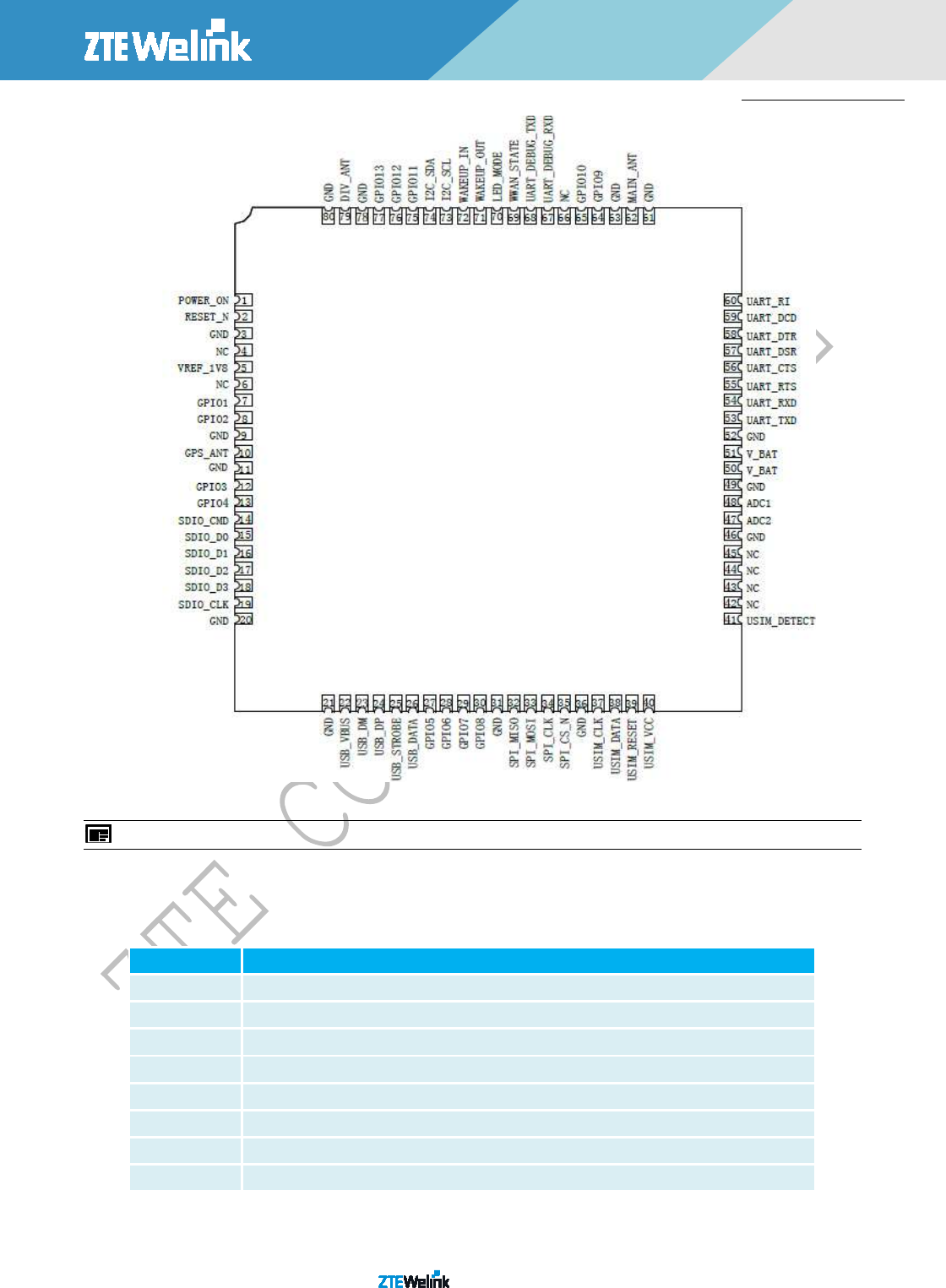
All Rights reserved, No Spreading abroad without Permission 7
ME36
3
0
Hardware Development Guide
Figure 2-1 Pin Assignment
NOTE: Keep all reserved pins and unused pins unconnected.
2.3. P
IN
D
ESCRIPTION
The following table shows the IO Parameters Definition.
Table 2-1 IO Parameters Definition
Type Description
IO Bidirectional input/output
DI Digital input
DO Digital output
PI Power input
PO Power output
AI Analog input
AO Analog output
OD Open drain
The logic levels are described in the following table.
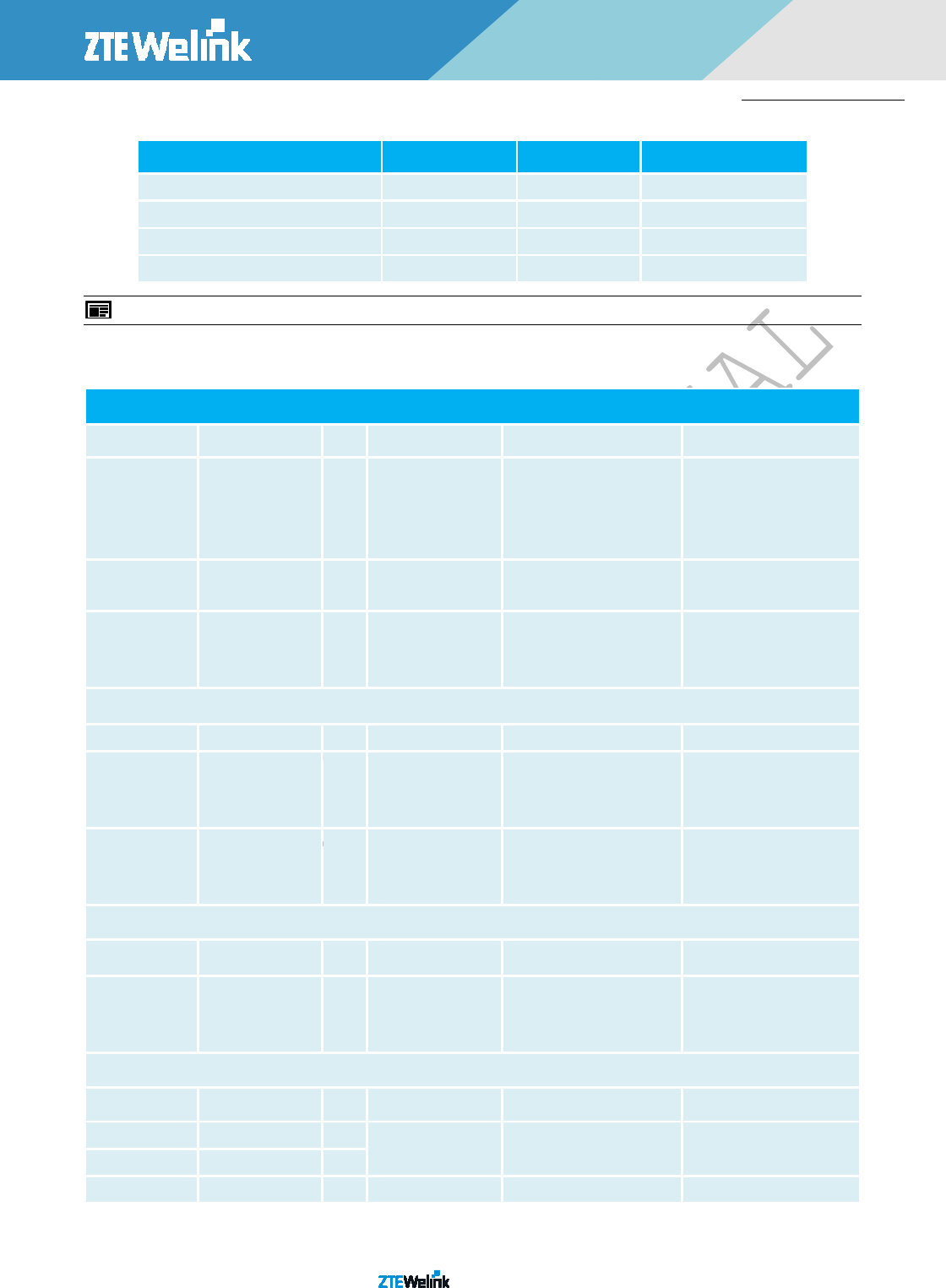
All Rights reserved, No Spreading abroad without Permission 8
ME36
3
0
Hardware Development Guide
Table 2-2 Logic levels Description
Parameter Min Max Unit
VIH 0.65*VDD_IO VDD_IO+0.3 V
VIL -0.3 0.35* VDD_IO V
VOH VDD_IO-0.45 VDD_IO V
VOL 0 0.45 V
NOTE: VDD_IO is the voltage level of pins.
The following tables show the ME3630’s pin definition.
Table 2-3 Pin Description
Power Supply
Pin Name Pin NO. I/O Description DC Characteristics Comment
V_BAT 50.51 PI Power supply for
module
Vmax = 4.2V
Vmin = 3.4V
Vnorm = 3.8V
It must be able to provide
sufficient current in a
transmitting burst which
typically rises to 2.0A
VREF_1V8 5 PO Provide 1.8V for
external circuit
Vnorm = 1.8V
Imax = 300mA
Power supply for external
GPIO’S pull up circuits
GND 3,9,11,20,21,31,36,
46,49,52, 61,63,78,
80,
Ground
Turn On/Off
Pin Name Pin NO. I/O Description DC Characteristics Comment
POWER_ON 1 DI Turn on/off module V
IH
max = 2.1V
V
IH
min = 1.17V
V
IL
max = 0.63V
Pull-up to 1.8V through 100K
resistance, active low
RESET_N 2 DI Reset module V
IH
max = 2.1V
V
IH
min = 1.17V
V
IL
max = 0.63V
Pull-up to 1.8V through 100K
resistance, active low
Status Indication
Pin Name Pin NO. I/O Description DC Characteristics Comment
LED_MODE 70 DO Indicate the module
network registration
mode
V
OH
min = 1.35V
V
OL
max = 0.45V
1.8V power domain
USB Interface
Pin Name Pin NO. I/O Description DC Characteristics Comment
USB_DP 24 IO USB differential data
bus
Compliant with USB
2.0 standard specification
Require differential impedance
of 90Ω
USB_DM 23 IO
USB_VBUS 22 PI USB power
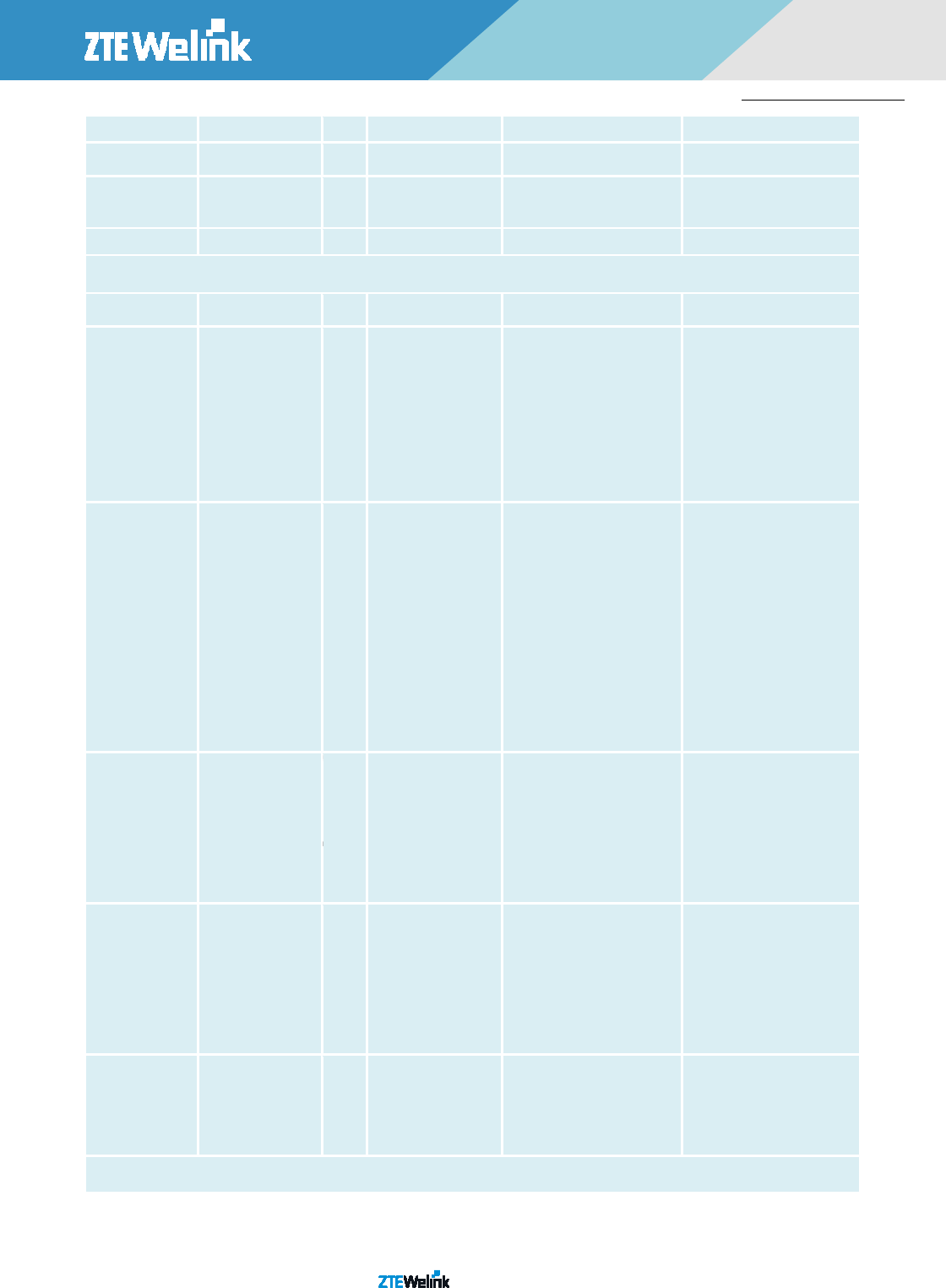
All Rights reserved, No Spreading abroad without Permission 9
ME36
3
0
Hardware Development Guide
HSIC Interface
Pin Name Pin NO. I/O Description DC Characteristics Comment
USB_STROBE 25 IO HSIC strobe InterChip USB(HSIC) Require differential impedance
of 90Ω
USB_DATA 26 IO HSIC data
USIM Interface
Pin Name Pin NO. I/O Description DC Characteristics Comment
USIM_VCC 40 PO Power supply for
USIM card
For 1.8V USIM:
Vmax = 1.9V
Vmin = 1.7V
For 3.0V USIM:
Vmax = 3.05V
Vmin = 2.7V
I
O
max = 50mA
Either 1.8V or 3V is supported
by the module automatically
USIM_DATA 38 IO Data signal of USIM
card
For 1.8V USIM:
V
IL
max = 0.63V
V
IH
min = 1.17V
V
OL
max = 0.45V
V
OH
min = 1.35V
For 3V USIM:
V
IL
max = 1.05V
V
IH
min = 1.95V
V
OL
max = 0.45V
V
OH
min = 2.6V
Pull-up to USIM_VCC with 10k
resistor internally
USIM_CLK 37 DO Clock signal of USIM
card
For 1.8V USIM:
V
OL
max = 0.45V
V
OH
min = 1.35V
For 3V USIM:
V
OL
max = 0.45V
V
OH
min = 2.6V
USIM_RST 39 DO Reset signal of USIM
card
For 1.8V USIM:
V
OL
max = 0.45V
V
OH
min = 1.35V
For 3V USIM:
V
OL
max = 0.45V
V
OH
min = 2.6V
USIM_DETECT 41 DI USIM card input
detection
V
IL
min = -0.3V
V
IL
max = 0.63V
V
IH
min = 1.17V
V
IH
max = 2.1V
1.8V power domain.
Pulled up by default.
Active low
ADC Interface
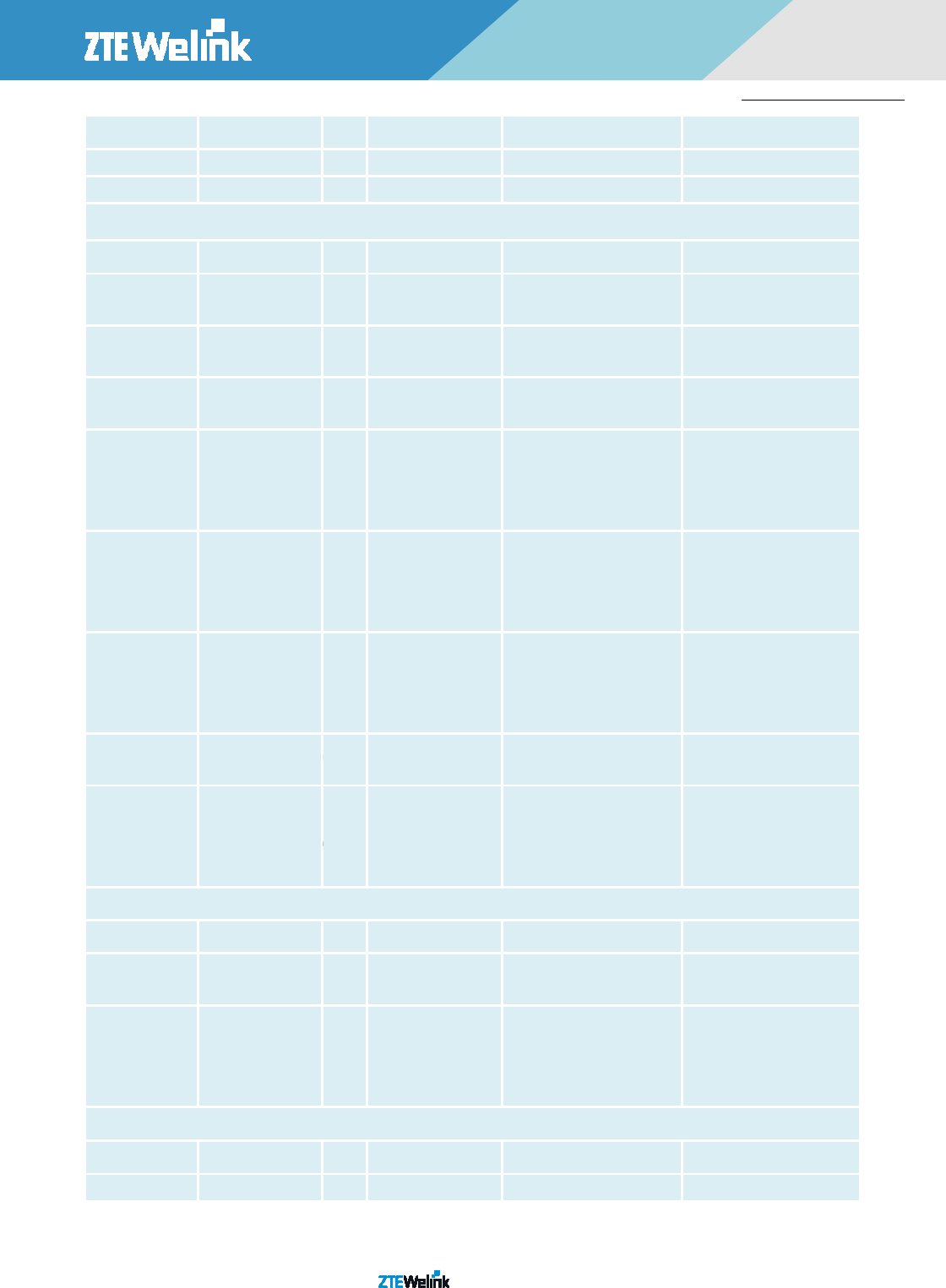
All Rights reserved, No Spreading abroad without Permission 10
ME36
3
0
Hardware Development Guide
Pin Name Pin NO. I/O Description DC Characteristics Comment
ADC1 48 AI Analog to digital 0.05V to 1.75V
ADC2 47 AI Analog to digital 0.05V to 1.75V
Main UART Interface
Pin Name Pin NO. I/O Description DC Characteristics Comment
UART_RI 60 DO Ring indicator V
OL
max = 0.45V
V
OH
min = 1.35V
1.8V power domain
UART_DCD 59 DO Data carrier
detection
V
OL
max = 0.45V
V
OH
min = 1.35V
1.8V power domain
UART_CTS 56 DO Clear to send V
OL
max = 0.45V
V
OH
min = 1.35V
1.8V power domain
UART_RTS 55 DI Request to send V
IL
min = -0.3V
V
IL
max = 0.63V
V
IH
min = 1.17V
V
IH
max = 2.1V
1.8V power domain
UART_DTR 58 DI Data terminal ready V
IL
min = -0.3V
V
IL
max = 0.63V
V
IH
min = 1.17V
V
IH
max = 2.1V
1.8V power domain.
UART_DSR 57 DI Data set ready V
IL
min = -0.3V
V
IL
max = 0.63V
V
IH
min = 1.17V
V
IH
max = 2.1V
1.8V power domain.
UART_TXD 53 DO Transmit data V
OL
max = 0.45V
V
OH
min = 1.35V
1.8V power domain
UART_RXD 54 DI Receive data V
IL
min = -0.3V
V
IL
max = 0.63V
V
IH
min = 1.17V
V
IH
max = 2.1V
1.8V power domain
Debug UART Interface
Pin Name Pin NO. I/O Description DC Characteristics Comment
UART_DEBUG_TX
D
68 DO Transmit data V
OL
max = 0.45V
V
OH
min = 1.35V
1.8V power domain
UART_DEBUG_RX
D
67 DI Receive data V
IL
min = -0.3V
V
IL
max = 0.63V
V
IH
min = 1.17V
V
IH
max = 2.1V
1.8V power domain
RF Interface
Pin Name Pin NO. I/O Description DC Characteristics Comment
MAIN_ANT 62 IO Main antenna 50Ω impedance
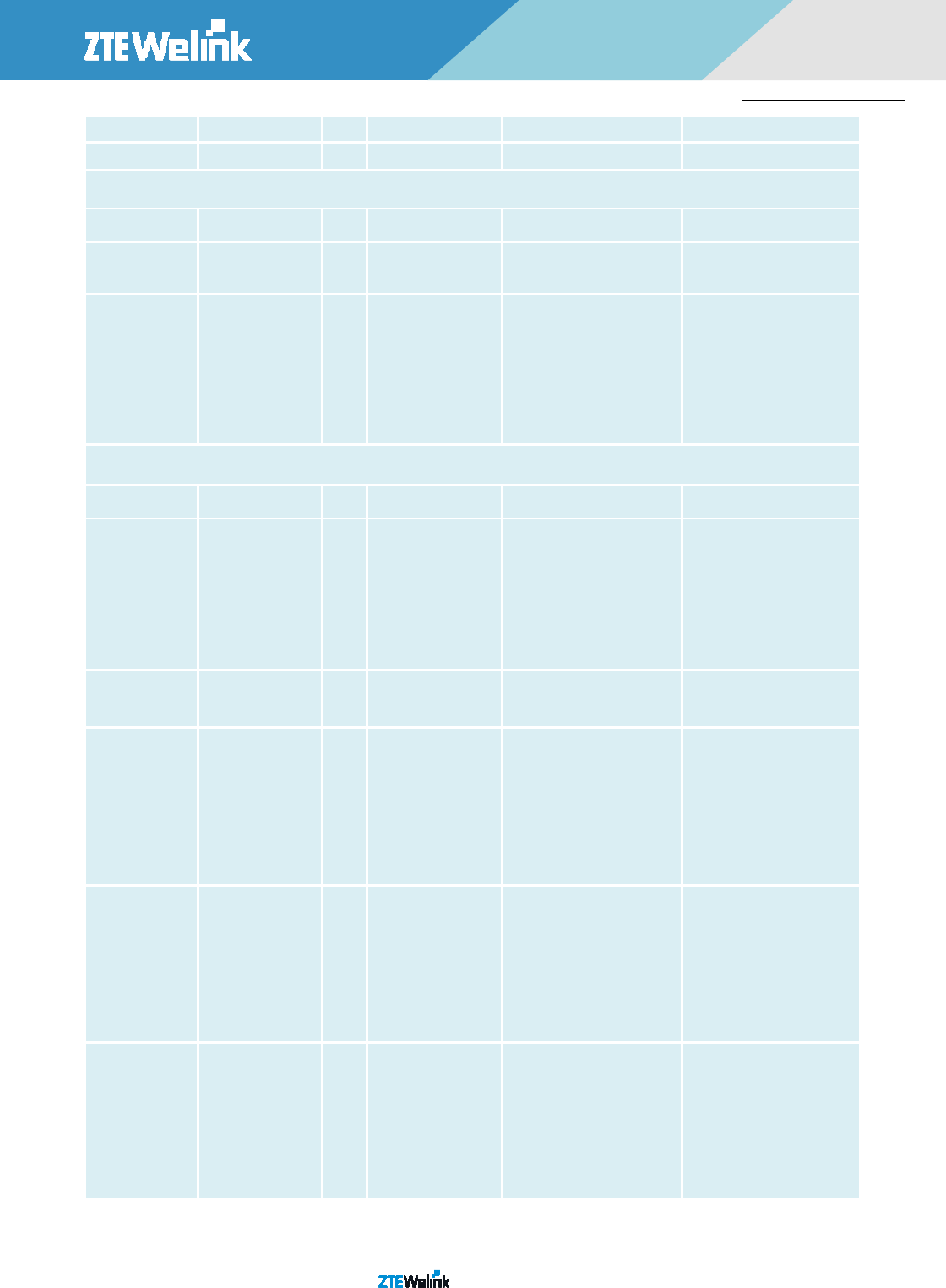
All Rights reserved, No Spreading abroad without Permission 11
ME36
3
0
Hardware Development Guide
DIV_ANT 79 AI Diversity antenna 50Ω impedance
GPS_ANT 10 IO GPS antenna 50Ω impedance
I2C Interface
Pin Name Pin NO. I/O Description DC Characteristics Comment
I2C_SCL 73 DO I2C serial clock V
OL
max = 0.45V
V
OH
min = 1.35V
External pull-up
resistor is required
I2C_SDA 74 IO I2C serial data V
OL
max = 0.45V
V
OH
min = 1.35V
V
IL
min = -0.3V
V
IL
max = 0.63V
V
IH
min = 1.17V
V
IH
max = 2.1V
External pull-up
resistor is required
SDIO Interface
Pin Name Pin NO. I/O Description DC Characteristics Comment
SDIO_CMD 14 IO Secure digital CMD V
OL
max = 0.45V
V
OH
min = 1.35V
V
IL
min = -0.3V
V
IL
max = 0.63V
V
IH
min = 1.17V
VIH max = 2.1V
1.8V power domain
External pull-up 10k resistor is
required
SDIO_CLK 19 DO Secure digital CLK V
OL
max = 0.45V
V
OH
min = 1.35V
1.8V power domain
SDIO_D0 15 IO Secure digital IO data
bit 0
V
OL
max = 0.45V
V
OH
min = 1.35V
V
IL
min = -0.3V
V
IL
max = 0.63V
V
IH
min = 1.17V
VIH max = 2.1V
1.8V power domain
SDIO_D1 16 IO Secure digital IO data
bit 1
V
OL
max = 0.45V
V
OH
min = 1.35V
V
IL
min = -0.3V
V
IL
max = 0.63V
V
IH
min = 1.17V
VIH max = 2.1V
1.8V power domain
SDIO_D2 17 IO Secure digital IO data
bit 2
V
OL
max = 0.45V
V
OH
min = 1.35V
V
IL
min = -0.3V
V
IL
max = 0.63V
V
IH
min = 1.17V
VIH max = 2.1V
1.8V power domain
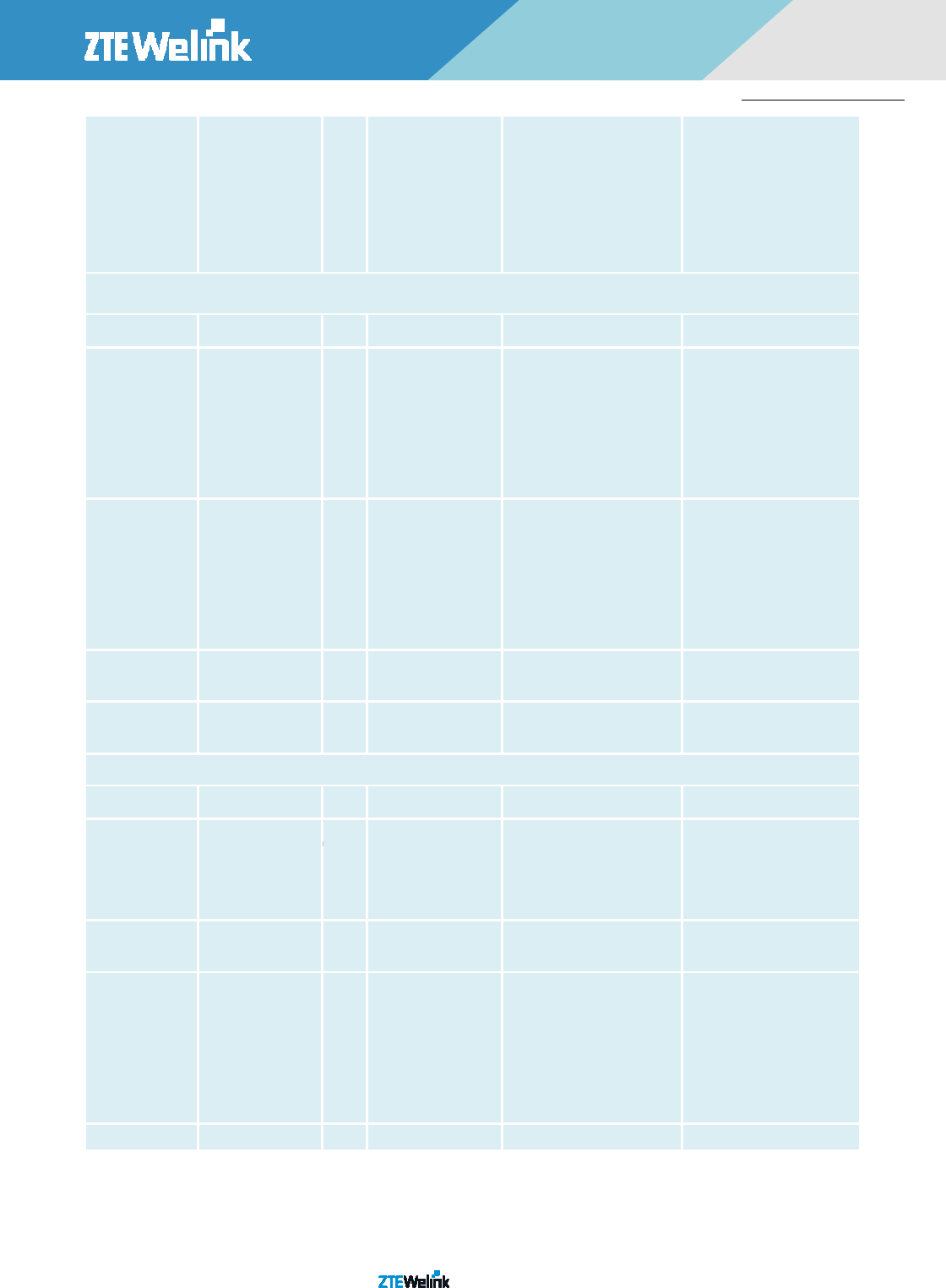
All Rights reserved, No Spreading abroad without Permission 12
ME36
3
0
Hardware Development Guide
SDIO_D3 18 IO Secure digital IO data
bit 3
V
OL
max = 0.45V
V
OH
min = 1.35V
V
IL
min = -0.3V
V
IL
max = 0.63V
V
IH
min = 1.17V
VIH max = 2.1V
1.8V power domain
SDIO Interface
Pin Name Pin NO. I/O Description DC Characteristics Comment
SPI_MISO 32 IO SPI main input slave
output
V
OL
max = 0.45V
V
OH
min = 1.35V
V
IL
min = -0.3V
V
IL
max = 0.63V
V
IH
min = 1.17V
VIH max = 2.1V
1.8V power domain
SPI_MOSI 33 IO SPI main output slave
input
V
OL
max = 0.45V
V
OH
min = 1.35V
V
IL
min = -0.3V
V
IL
max = 0.63V
V
IH
min = 1.17V
VIH max = 2.1V
1.8V power domain
SPI_CLK 34 DO SPI clock V
OL
max = 0.45V
V
OH
min = 1.35V
1.8V power domain
SPI_CS_N 35 DO SPI segment V
OL
max = 0.45V
V
OH
min = 1.35V
1.8V power domain
Other Pins
Pin Name Pin NO. I/O Description DC Characteristics Comment
WAKEUP_IN 72 DI Sleep mode control V
IL
min = -0.3V
V
IL
max = 0.45V
V
IH
min = 1.53V
V
IH
max = 2.1V
1.8V power domain. Pull-up by
default. Low level wakes up
the module
WAKEUP_OUT 71 DO Output wakeup signal V
OL
max = 0.8V
V
OH
min = 1.35V
Wakeup external circuits
GPIO 7, 8, 12, 13, 27, 28,
29, 30, 64, 65, 75,
76,7 7
IO General input/output V
OL
max = 0.45V
V
OH
min = 1.35V
V
IL
min = -0.3V
V
IL
max = 0.63V
V
IH
min = 1.17V
VIH max = 2.1V
If unused, keep them floating.
NC 4,6,66,42,43,44,45 No connection NC
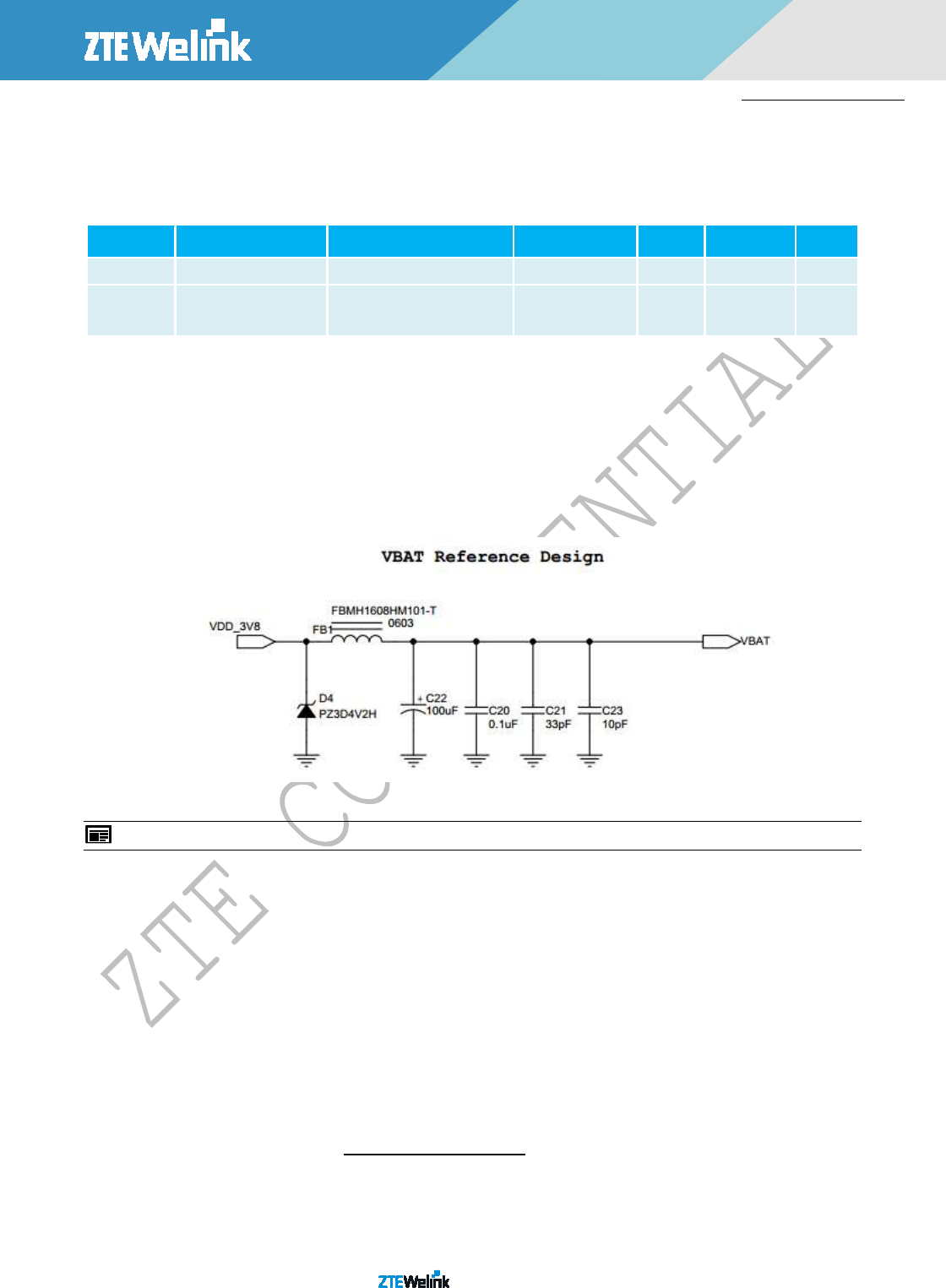
All Rights reserved, No Spreading abroad without Permission 13
ME36
3
0
Hardware Development Guide
2.4. P
OWER
S
UPPLY
2.4.1. P
OWER
S
UPPLY
P
INS
The ME3630 is supplied through the V_BAT signal with the following characteristics.
Table 2-4 Power Supply
Pin Name Pin NO. Description Minimum Typical Maximum Unit
V_BAT 50,51 Power supply for module 3.4 3.8 4.2 V
GND 3, 9, 11, 20, 21, 31, 36,
46, 49, 52, 61, 63, 78, 80,
Ground - -
GND signal (Pin No: 3/9/11/20/21/31/36/46/49/52/61/63/78/80) is the power and signal ground of the module, which needs
to be connected to the ground on the system board. If the GND signal is not connected completely, the performance of module will
be affected.
2.4.2. D
ECREASE
V
OLTAGE
D
ROP
The power supply range of the module is 3.4V~ 4.2V. Because of the voltage drop during the transmitting time, a bypass
capacitor of about 100 µF with low ESR should be used. Multi -layer ceramic chip (MLCC) capacitor can provide the best combination
of low ESR. Three ceramic capacitors (100nF, 33pF, 10pF) are recommended to be applied to the V_BAT pins. The capacitors should
be placed close to the ME3630’s V_BAT pins. The following figure shows structure of the power supply.
Figure 2-2 Structure of the Power Supply
NOTES: The rated current of FB1 should be more than 2.5A.
The PCB traces from the V_BAT pins to the power source must be wide enough to ensure that there isn’t too much voltage
drop occurs in the transmitting procedure. The width of V_BAT trace should be no less than 2mm, and the principle of the V_BAT
trace is the longer, the wider.
In poor situation of the network is, the antenna will transmit at the maximum power, and the transient maximum peak current
can reach as high as 2A. So the power supply capacity of system board needs to be above 2.5A to satisfy the requirement of module
peak current; and the average current on the system side needs to be above 0.9A.
2.4.3. R
EFERENCE
C
IRCUIT OF
P
OWER
S
UPPLY
Option One: DC\DC switching
The over-current capability requirement of DC/DC switching power supply needs to be above 2.5A. The reference circuit of
AAT2138 shows as figure below. Place a tantalum capacitor of 330uF at the input of the chip. Place a 220uF and 33uF capacitor
tantalum capacitors at the output of the chip. This circuit fully meets the module power requirements. The current capacity of
inductance L5 is greater than 3A,Please visit http://www.analogictech.com for more information of AAT2138.
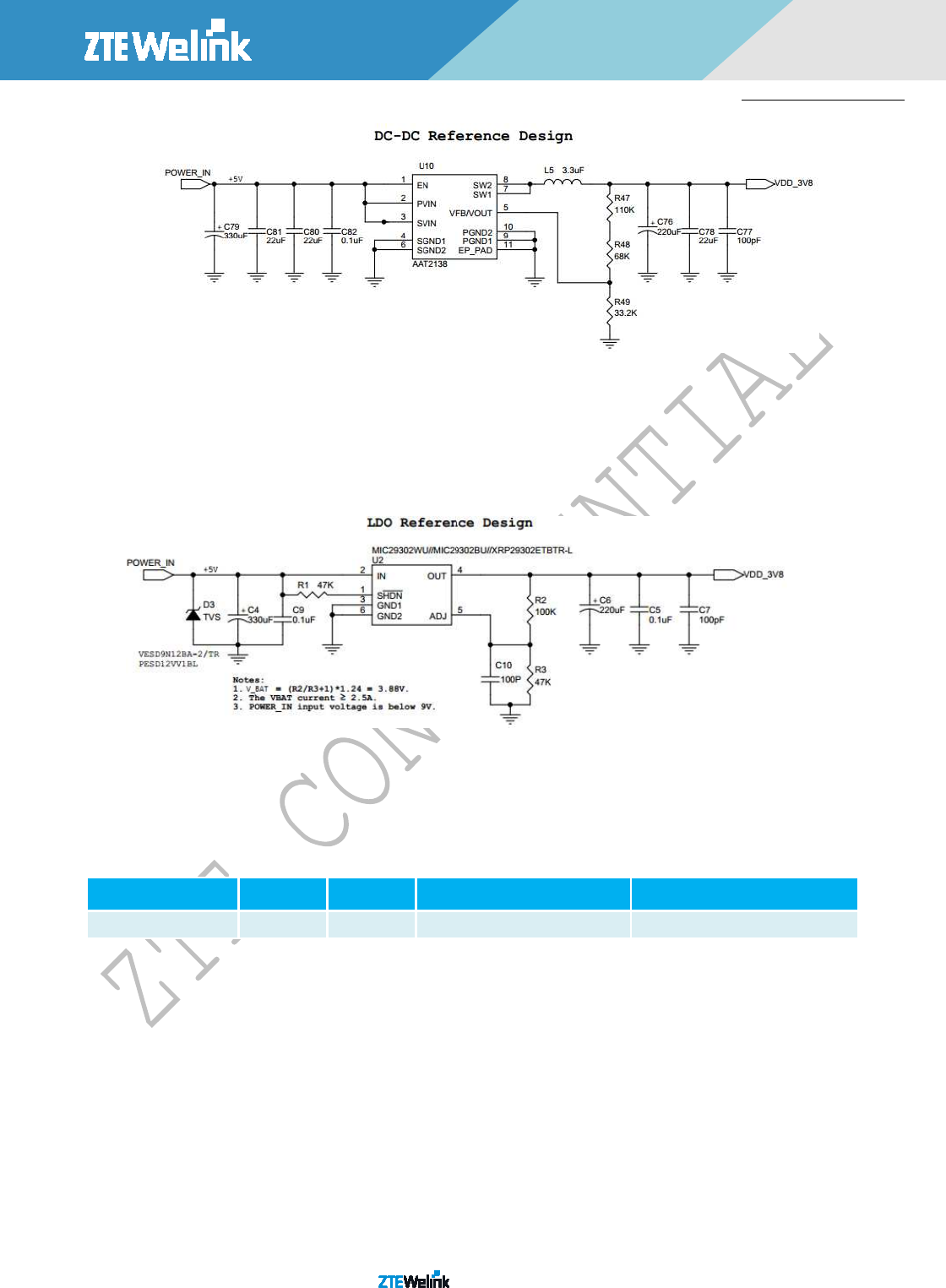
All Rights reserved, No Spreading abroad without Permission 14
ME36
3
0
Hardware Development Guide
Figure 2-3 Reference circuit of AAT2138
Option Two: LDO
The over-current capability of LDO is above 2.5A.
As the poor transient response of linear regulator, large capacitors should be placed at the input and output of LDO, place a
capacitor above 100uF at output of LDO,R2、R3 recommend 1% accuracy. The reference power supply circuit design with LDO is
shown as figure below:
Figure 2-4 Reference circuit of LDO
2.5. T
URN ON
S
CENARIOS
The following table shows the pin definition of POWER_ON/OFF.
Table 2-5 POWER_ON/OFF Pin Description
Pin Name Pin NO. I/O Description Comment
POWER_ON 1 DI Turn on/off the module 1.8V power domain,low active
The power on scenarios is illustrated as the following figure, the module power on and running when the POWER_ON pin keep
in low level.
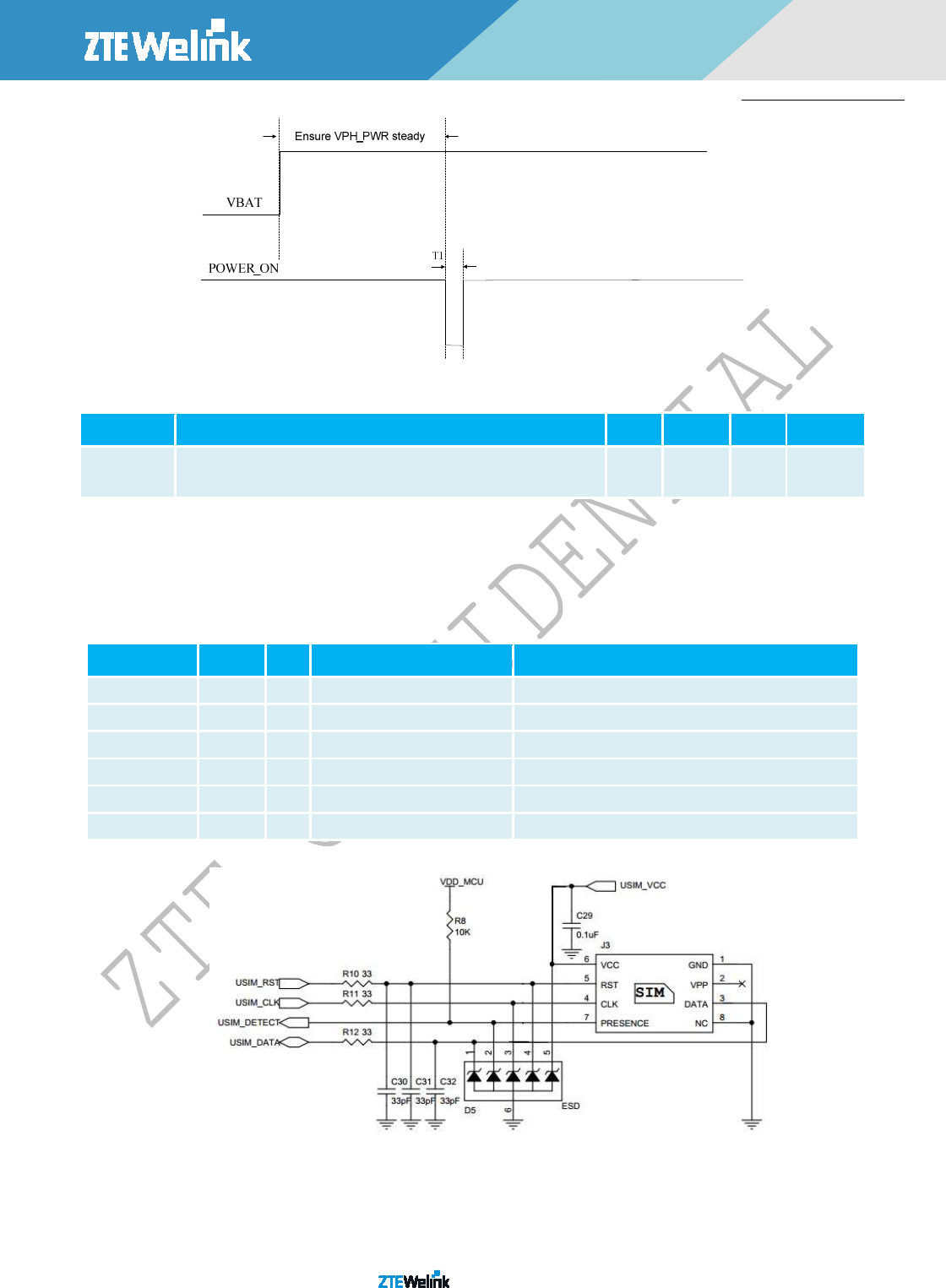
All Rights reserved, No Spreading abroad without Permission 15
ME36
3
0
Hardware Development Guide
Figure 2-5 Timing of Turning on Mode
Table 2-6 Power-on Time
Parameter Description Min Typical Max Unit
T1 The period that the Power-on signal for power on operation is kept on the low
PWL
0.1 0.5 -- second
2.6. USIM
C
ARD
I
NTERFACE
2.6.1. D
ESCRIPTION OF
PIN
S
The USIM card interface circuitry meets ETSI and IMT-2000 SIM interface requirements. Both 1.8V and 3.0V USIM cards are
supported.
Table 2-7 Pin Definition of the USIM Interface
Pin Name Pin NO. I/O Description Comment
USIM_VCC 40 PO Power supply for USIM card Either 1.8V or 3V is supported by the module automatically
USIM_DATA 38 IO Data signal of USIM card Pull-up to USIM_VDD with 10k resistor internally
USIM_CLK 37 DO Clock signal of USIM card
USIM_RST 39 DO Reset signal of USIM card
USIM_DETECT 41 DI USIM card input detection 1.8V power domain
GND 36 Ground
The following figure shows the reference design of the 8-pin USIM card.
Figure 2-6 Reference Circuit of the 8 Pin USIM Card
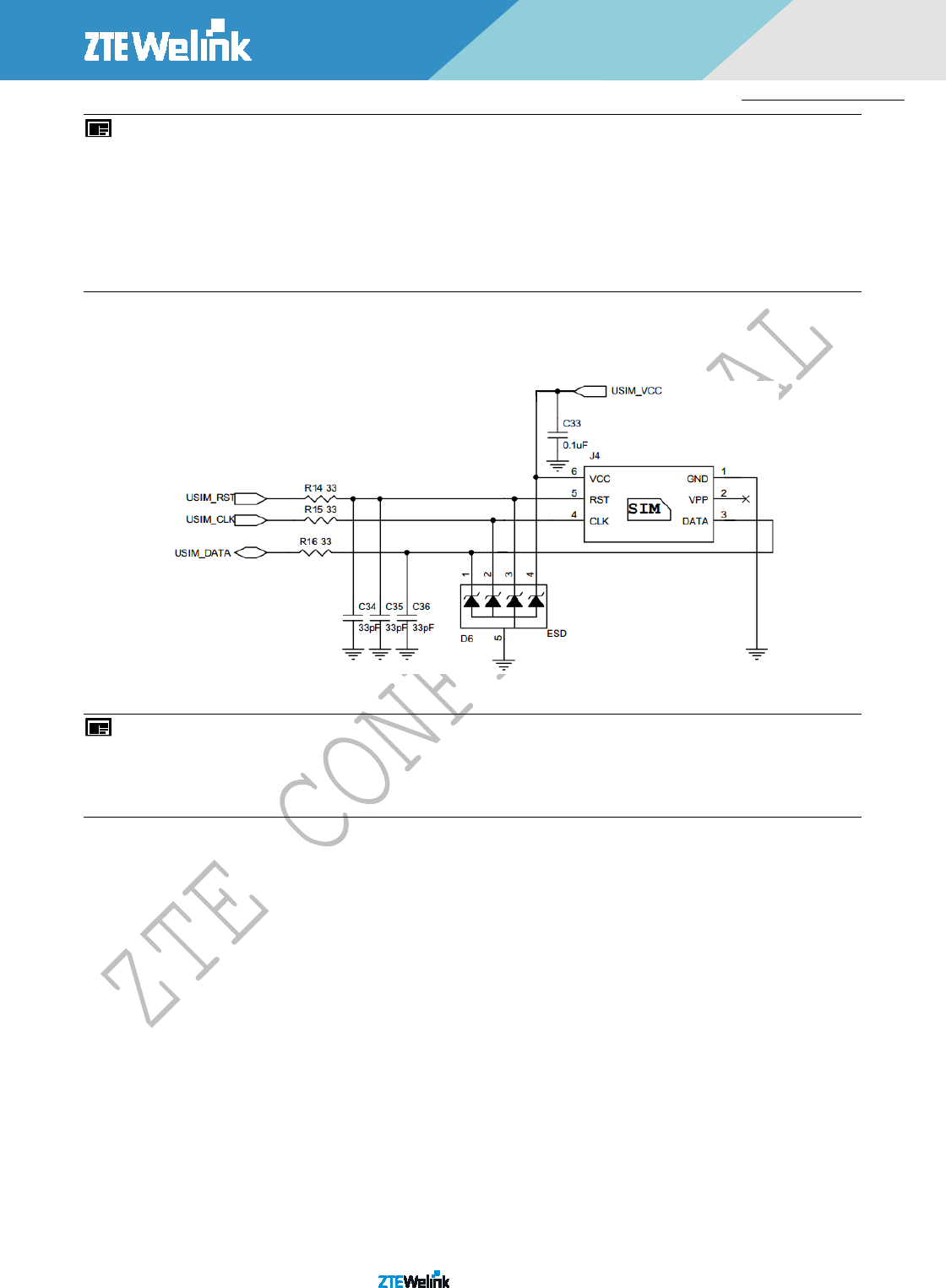
All Rights reserved, No Spreading abroad without Permission 16
ME36
3
0
Hardware Development Guide
NOTES:
1. R10~R12 and D5 are applied to suppress the EMI spurious transmission and enhance the ESD protection.Should be closed to J3.
2.USIM_DETECT is used to detect USIM card, which will be low when the USIM card is inserted.
3.The value of C29 shoule be less than 1uF
4.USIM_DETECT is 1.8V power domain,VDD_MCU should be 1.8V.
ME3630 supports USIM card hot-plugging via the USIM_ DETECT pin. For details, refer to document
[ME3630_AT_Commands_Manual_V1.0]. If you do not need the USIM card detect function, keep USIM_ DETECT unconnected.
The reference circuit for using a 6-pin USIM card socket is illustrated as the following figure.
Figure 2-7 Reference Circuit of the 6 Pin USIM Card
NOTES:
1. R14~R16 and D6 are applied to suppress the EMI spurious transmission and enhance the ESD protection.D6 should be closed to J4
2.The value of C33 shoule be less than 1uF.
In order to enhance the reliability and availability of the USIM card in customer’s application, please follow the following
criterion in the USIM circuit design:
Keep layout of USIM card as close as possible to the module. Assure the possibility of the length of the trace is less than
50mm.
Keep USIM card signal away from RF and V_BAT alignment.
Assure the ground between module and USIM cassette short and wide. Keep the width of ground and USIM_VCC no less
than 0.5mm to maintain the same electric potential. The decouple capacitor of USIM_VCC should be less than 1uF and
must be near to USIM cassette.
To avoid cross-talk between USIM_DATA and USIM_CLK, keep them away with each other and shield them with
surrounded ground.
In order to offer good ESD protection, it is recommended to add TVS such as WILL (http://www.willsemi.com)
ESDA6V8AV6. The 33Ω resistors should be added in series between the module and the USIM card so as to suppress the
EMI spurious transmission and enhance the ESD protection. Please note that the USIM peripheral circuit should be close
to the USIM card socket.
The pull-up resistor on USIM_DATA line can improve anti-jamming capability when long layout trace and sensitive
occasion is applied.
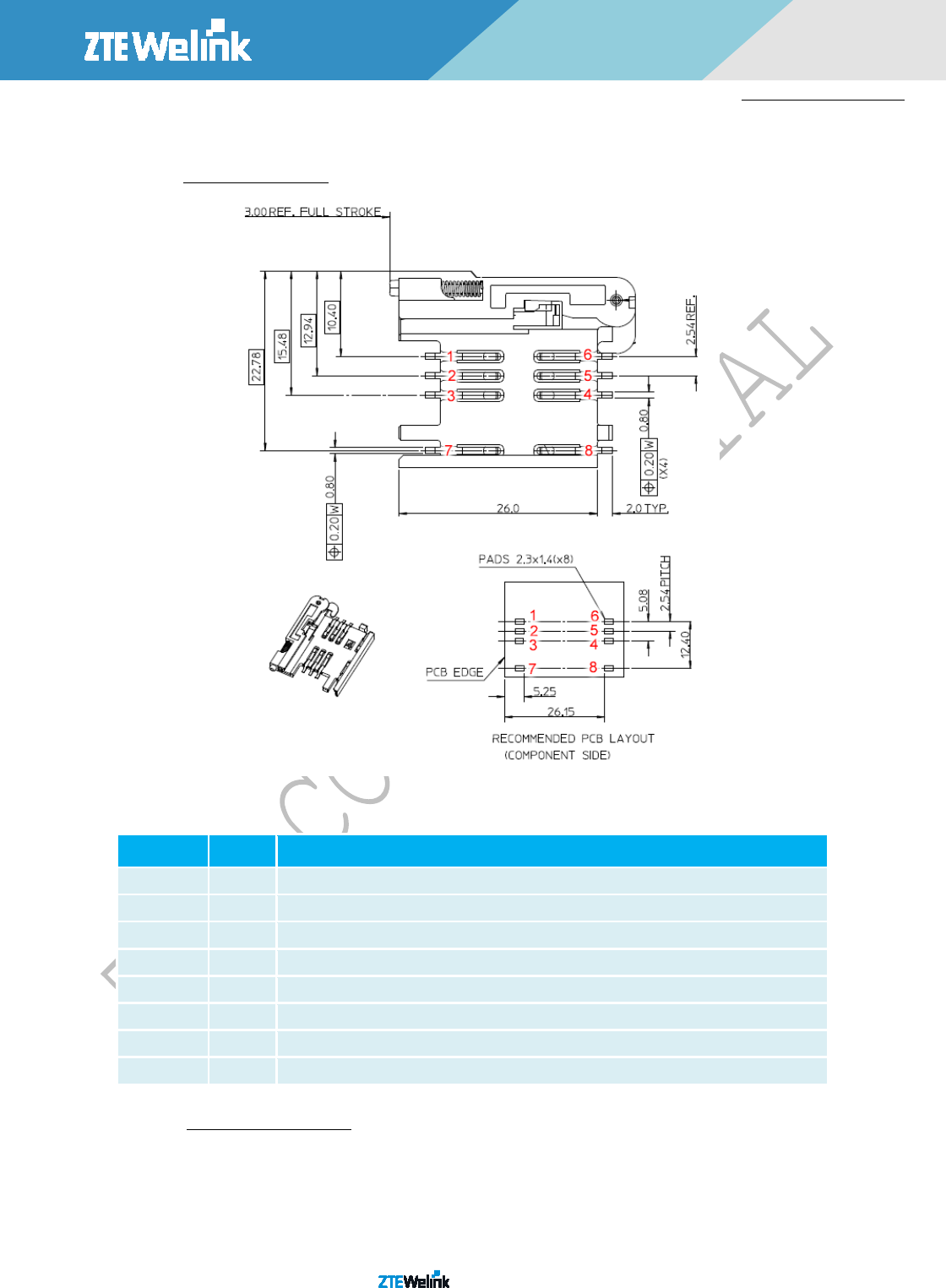
All Rights reserved, No Spreading abroad without Permission 17
ME36
3
0
Hardware Development Guide
2.6.2. D
ESIGN
C
ONSIDERATIONS FOR
USIM
C
ARD
H
OLDER
For 8-pin USIM card holder, it is recommended to use Molex 91228.
Please visit http://www.molex.com for more information.
Figure 2-8 Molex 91228 USIM Card Holder
Table 2-8 Pin Description of Molex USIM Card Holder
Pin Name Pin NO. Function
GND 1 Ground
VPP 2 Not connected
DATA I/O 3 USIM card data
CLK 4 USIM card clock
RST 5 USIM card reset
VDD 6 USIM card power supply
/ 7 Pull-down GND with external circuit. When the tray is present, 4 is connected to 5
/ 8 Not defined
For 6-pin USIM card holder, it is recommended to use Amphenol C707 10M006 512 2.
Please visit http://www.amphenol.com for more information.
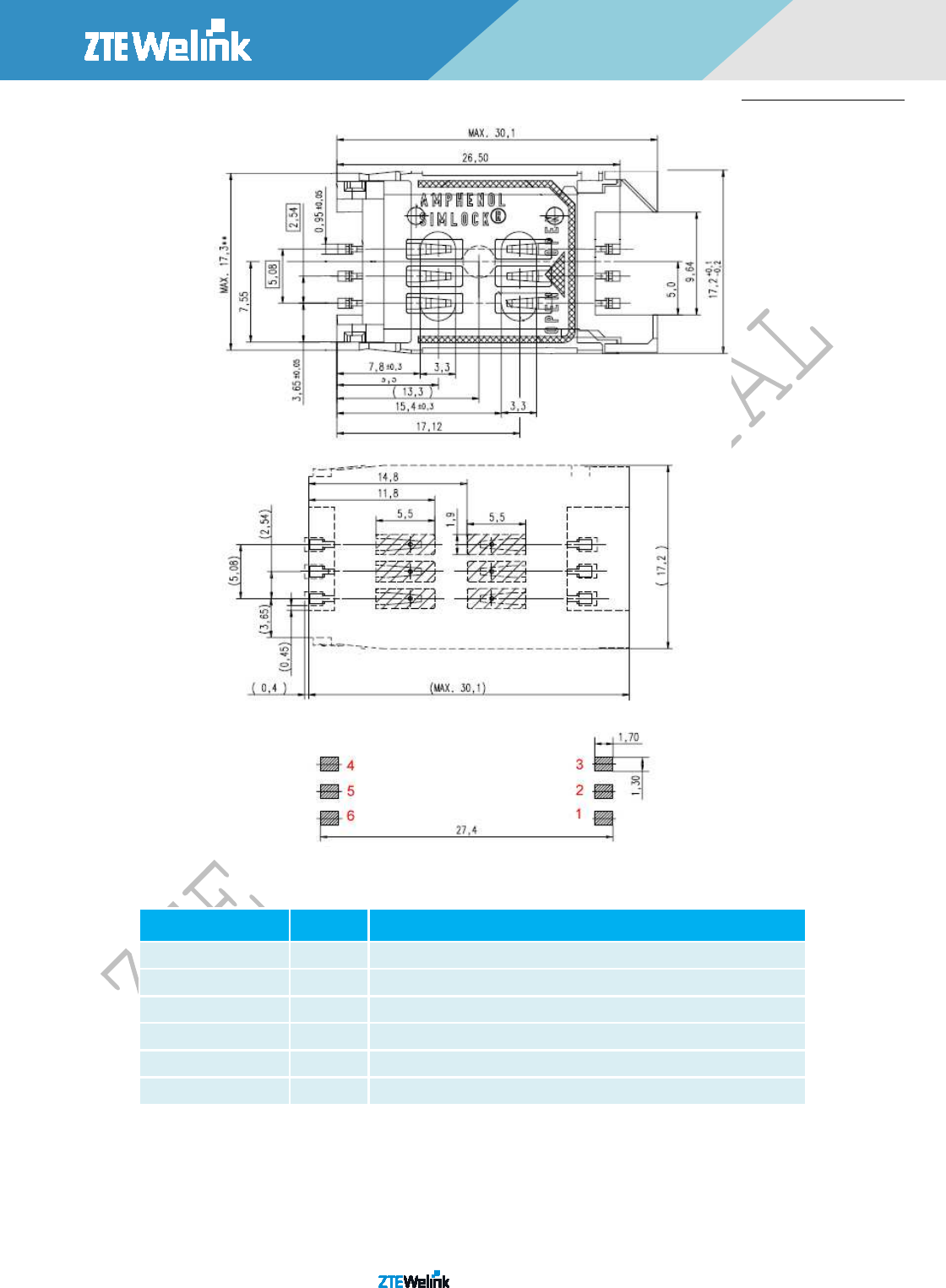
All Rights reserved, No Spreading abroad without Permission 18
ME36
3
0
Hardware Development Guide
Figure 2-9 Amphenol C707 10M006 512 2 USIM Card Holder
Table 2-9 Pin Description of Amphenol USIM Card Holder
Pin Name Pin NO. Function
GND 1 Ground
VPP 2 Not connected
DATA I/O 3 USIM card data
CLK 4 USIM card clock
RST 5 USIM card reset
VDD 6 USIM card power supply
2.7. USB
I
NTERFACE
ME3630 contains one integrated USB transceiver which complies with the USB 2.0 specification and supports high speed (480
Mbps), full speed (12 Mbps) and low speed (1.5 Mbps) mode. The USB interface is primarily used for AT command, data transmission,
software debug and firmware upgrade. The following table shows the pin definition of USB interface.
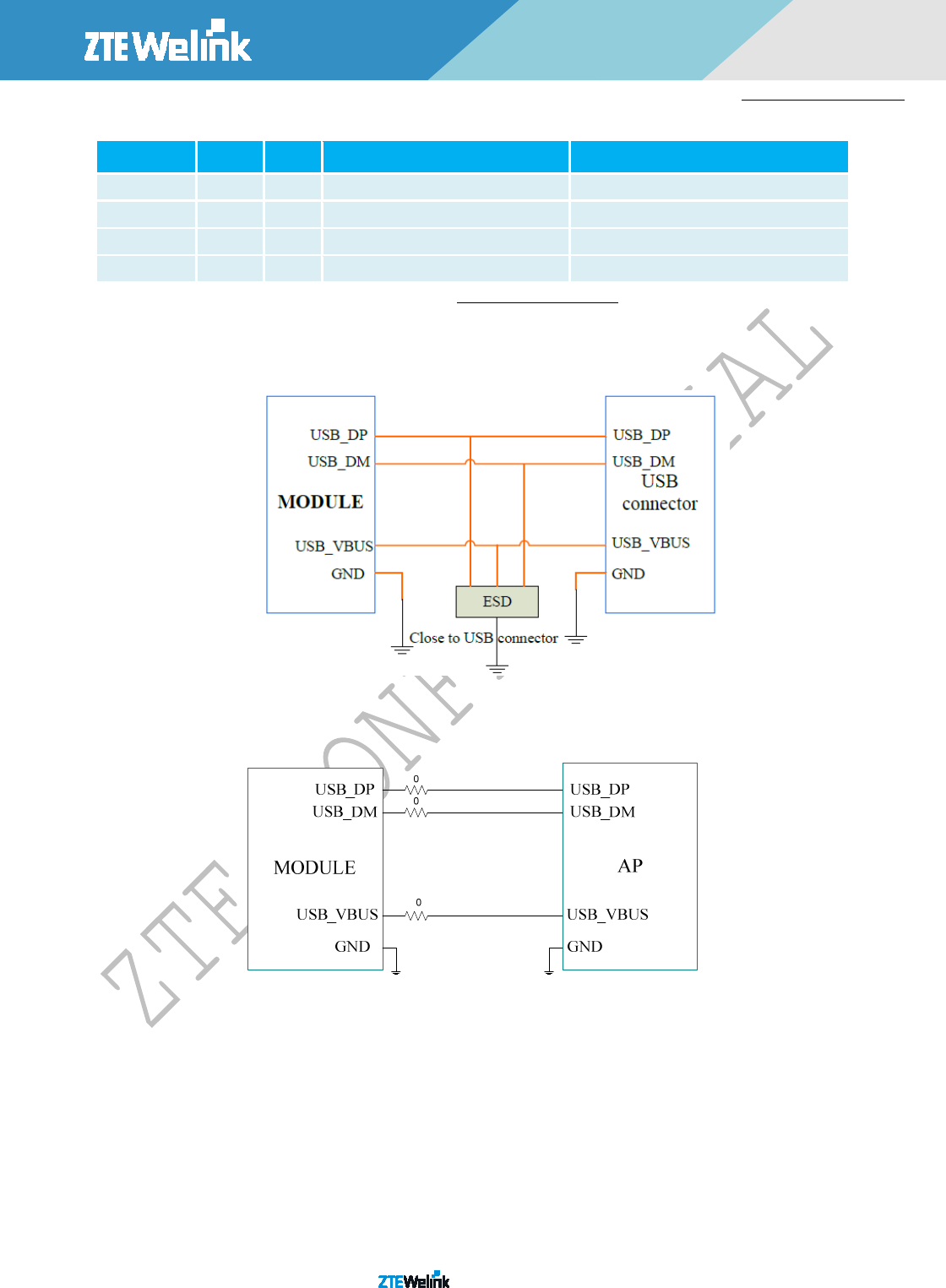
All Rights reserved, No Spreading abroad without Permission 19
ME36
3
0
Hardware Development Guide
Table 2-10 USB Pin Description
Pin Name Pin NO. I/O Description Comment
USB_DP 24 IO USB differential data bus (positive) Require differential impedance of 90Ω
USB_DM 23 IO USB differential data bus (negative) Require differential impedance of 90Ω
USB_VBUS 22 PI USB power USB plug detect
GND 21 Ground
More details about the USB 2.0 specifications, please visit http://www.usb.org/home.
For different use purposes, different designs can be referred to:
When USB is not the desired function, connect differential signal, power and GND via test points.
Connect USB interface to USB connector directly. The following figure shows the reference circuit of USB interface.
Figure 2-10 Reference Circuit of USB Application
Reference Circuit of USB Communication between module and AP is the one below. The 0Ω in the figure should be
placed near pin.
Figure 2-11 Reference Circuit of USB Communication between module and AP
In order to ensure the USB interface design corresponding with the USB 2.0 specification, please comply with the following
principles.
It is important to route the USB signal traces as differential pairs with total grounding. The impedance of USB differential trace
is 90ohm.
Pay attention to the influence of junction capacitance of ESD component on USB data lines. Typically, the capacitance value
should be less than 2pF.
Do not route signal traces under crystals, oscillators, magnetic devices and RF signal traces. It is important to route the USB
differential traces in inner-layer with ground shielding not only upper and lower layer but also right and left side.
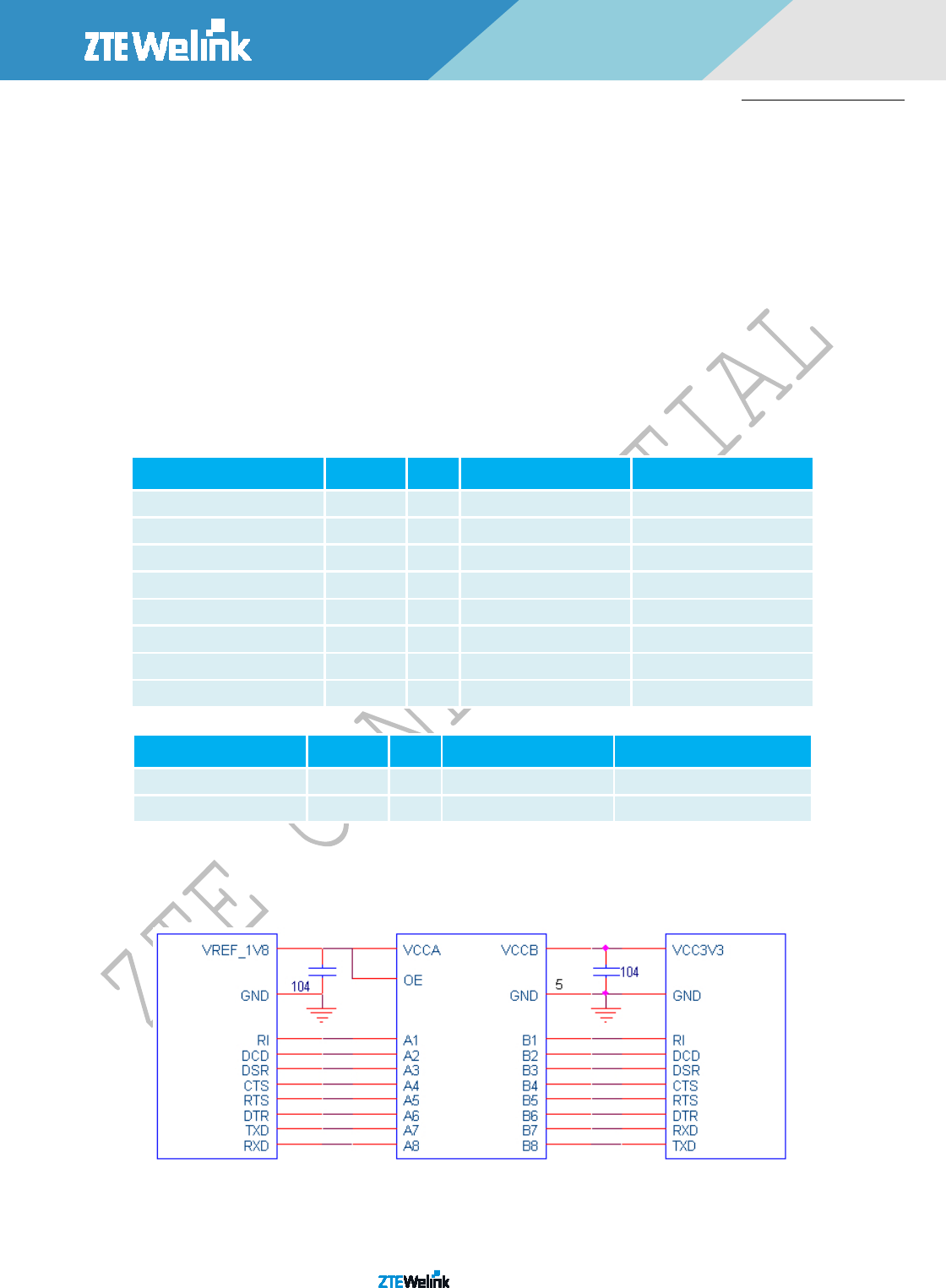
All Rights reserved, No Spreading abroad without Permission 20
ME36
3
0
Hardware Development Guide
Keep the ESD components as closer to the USB connector as possible.
2.8. UART
I
NTERFACE
The module provides two UART interfaces: Main UART Port and Debug UART Port. The Main UART Port can work in full
function mode while the Debug UART Port is used for software debugging or Firmware upgrade. The following show the different
features.
Main UART interface support 9600, 19200, 38400, 57600, 115200, 230400, 460800, 921600bps baud rate, the default is
115200bps, This interface can be used for data transmission; AT communication or firmware upgrade (upgrade is not supported
currently).
Debug UART interface supports 115200bps baud rate. It can be used for software debug and firmware upgrade. The module is
designed as the DCE (Data Communication Equipment), following the traditional DCE-DTE (Data Terminal Equipment) connection.
The following tables show the pin definition of these two UART interfaces.
Table 2-11 Pin Definition of the Main UART Interface
Pin Name Pin NO. I/O Description Comment
UART_RI 60 DO Ring indicator 1.8V power domain
UART_DCD 59 DO Data carrier detection 1.8V power domain
UART_CTS 56 DO Clear to send 1.8V power domain
UART_RTS 55 DI Request to send 1.8V power domain
UART_DTR 58 DI Data terminal ready 1.8V power domain.
UART_DSR 57 DI Data set ready 1.8V power domain.
UART_TXD 53 DO Transmit data 1.8V power domain
UART_RXD 54 DI Receive data 1.8V power domain
Table 2-12 Pin Definition of the Debug UART Interface
Pin Name Pin NO. I/O Description Comment
UART_DEBUG_TXD 68 DO Transmit data 1.8V power domain
UART_DEBUG_RXD 67 DI Receive data 1.8V power domain
Reference Circuit of Logic Level Translator
ME3630 provides you with a 1.8V UART interface. A level shifter should be used if your application is equipped with a 3.3V
UART interface. A level shifter TXB0108PWR provided by Texas Instruments is recommended. The following figure shows the
reference design of the TXB0108PWR.
Module TXB0108PWR MCU
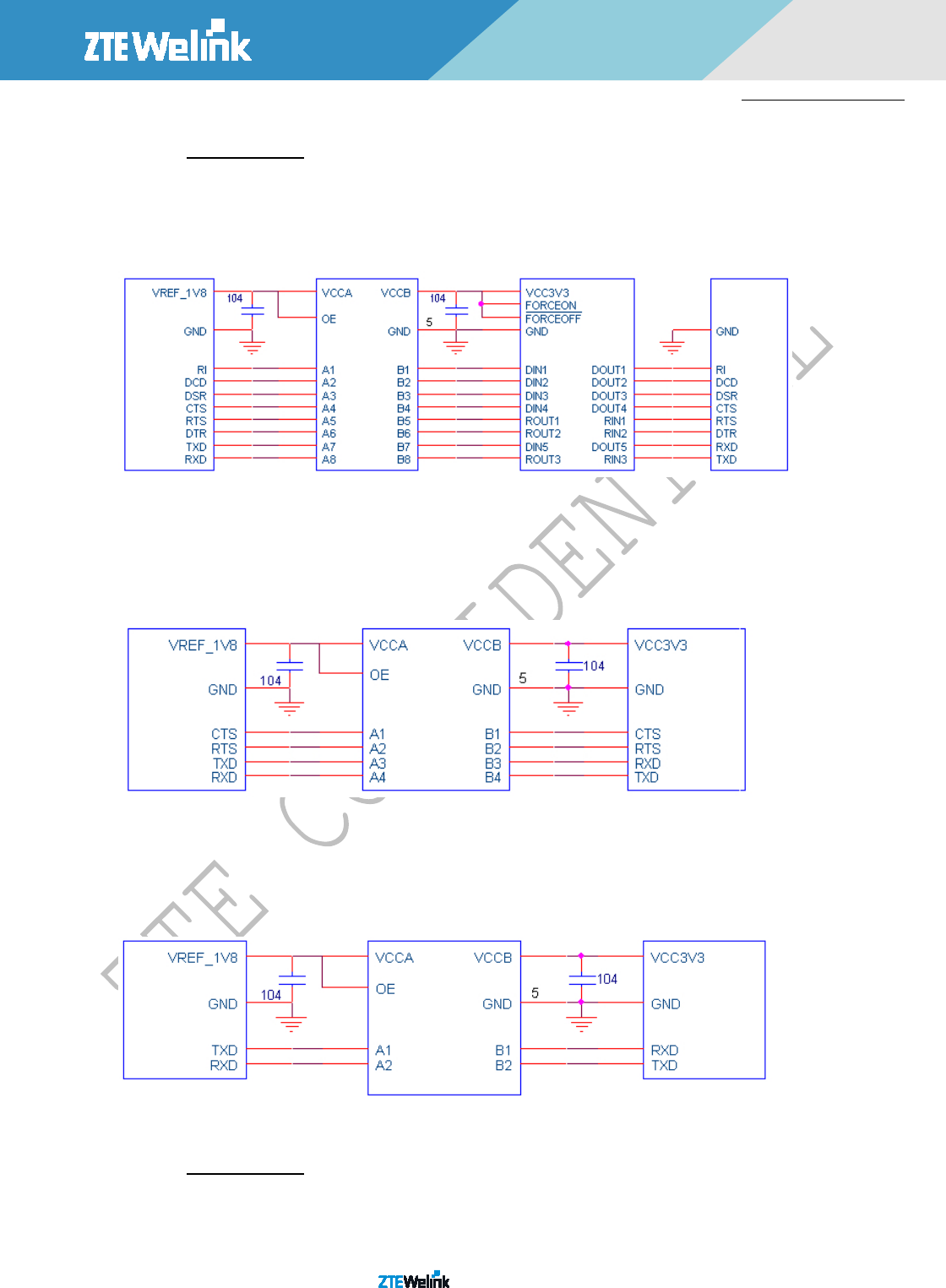
All Rights reserved, No Spreading abroad without Permission 21
ME36
3
0
Hardware Development Guide
Figure 2-12 Reference Circuit of Logic Level Translator
Please visit http://www.ti.com for more information.
A. Reference Circuit between ME3630 and PC
The following figure is an example of connection between ME3630 and PC. A voltage level translator and a RS-232 level
translator chip must be inserted between module and PC, since these two UART interfaces do not support the RS-232 level, while
support the 1.8V CMOS level only.
Module TXB0108PWR MAX3238 DB9 to PC
Figure 2-13 RS232 Level Match Circuit
B. Reference Circuit of Main URAT Port to 4 Line UART Port
The following figure shows the reference circuit of main UART interface with 4 line logic level translator. TXB0104PWR
provided by Texas Instruments is recommended.
Module TXB0104PWR MCU
Figure 2-14 Reference Circuit of Main UART with 4 Line Level Translator
Reference Circuit of URAT Port to 2 line UART Port
The following figure shows the reference circuit of UART interfaces with 2 line logic level translator. TXB0102DCU provided by
Texas Instruments is recommended.
Module TXB0102DCU MCU
Figure 2-15 Reference Circuit of UART with 2 Line Level Translator
Please visit http://www.ti.com for more information.
C. Debugging UART port
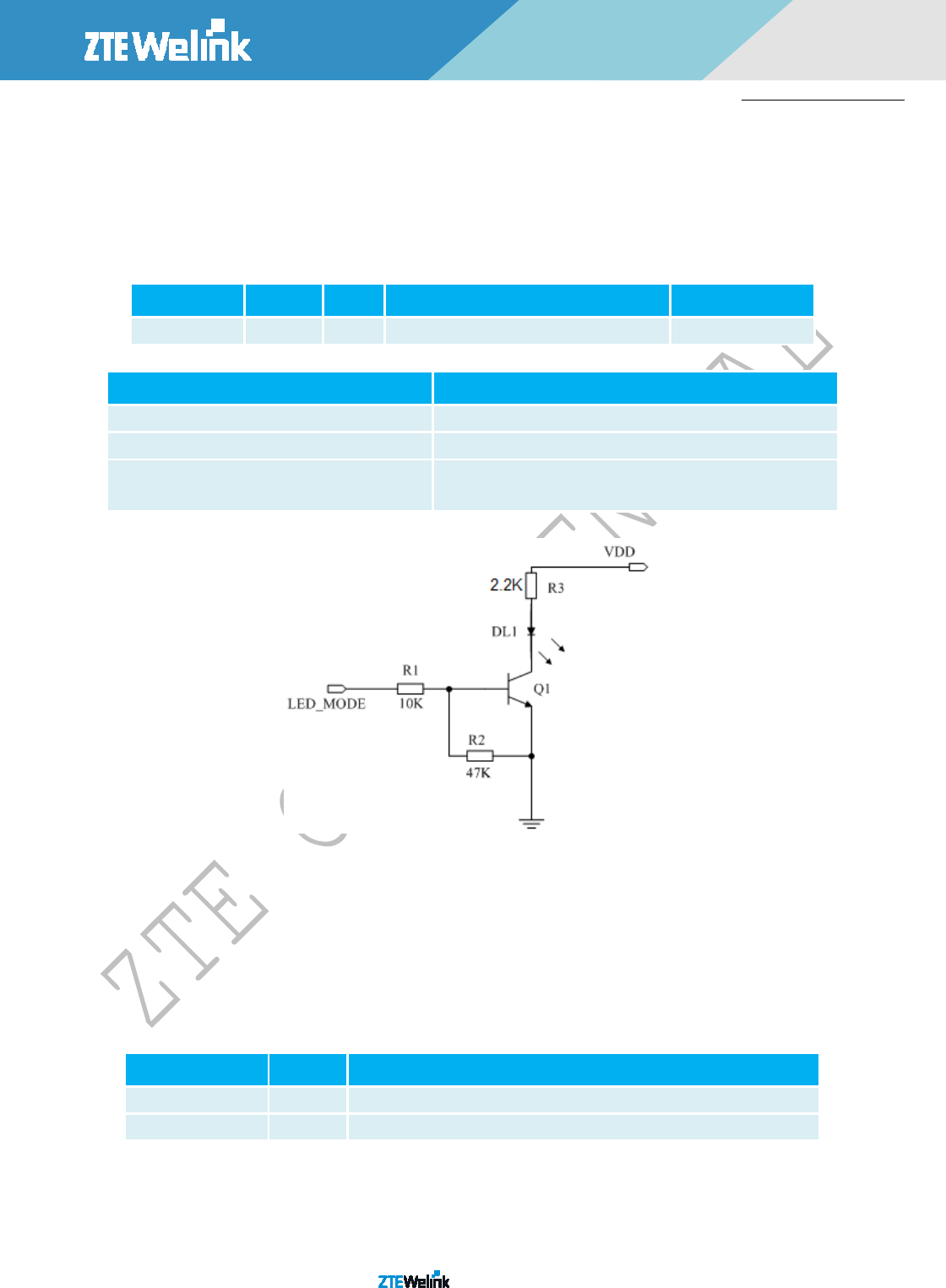
All Rights reserved, No Spreading abroad without Permission 22
ME36
3
0
Hardware Development Guide
Debugging UART port is a 2-wire interface. It should be connected with its test point or jumper pin during design.
2.9. N
ETWORK
S
TATUS
I
NDICATION
The network indication pin LED_MODE can be used to drive a network status indicator LED. The different modes of status
indicator flashing indicate different network statuses. The following tables describe pin definition and logic level changes in different
network status.
Table 2-13 Pin Definition of Network Indicator
Pin Name Pin NO. I/O Description Comment
LED_MODE 70 DO Indicate the module network registration mode 1.8V power domain
Table 2-14 Working State of the Network Indicator
LED Status Module status
High level, LED on Module is in the standby mode
Low level 1.8s(LED off), High level 0.2s(LED on) PDP activated, and get the IP address
Low level 0.2s(LED off), High level 1.8s(LED on) Socket established(when using External protocol stack, $MYSOCKETLED
should be sent by CMUX to control the LED)
Figure below is the reference circuit design diagram.
Figure 2-16 Reference Circuit of the Network Indicator
2.10. ADC
I
NTERFACE
The module provides two ADCs to digitize the analog signal to 10-bit digital data such as battery voltage, temperature and so
on. Using AT command “AT+ZADC1?” can read the voltage value on ADC1 pin. Using AT command “AT+ZADC2?” can read the voltage
value on ADC2 pin. The read value is expressed in mV. For more details of these AT commands, please refer to document
[ME3630_AT_Commands_Manual_V1.0].
In order to improve the accuracy of ADC, the trace of ADC should be surrounded by ground.
Table 2-15 Pin Definition of the ADC
Pin Name Pin NO. Description
ADC1 48 General purpose analog to digital converter.
ADC2 47 General purpose analog to digital converter.
The following table describes the characteristic of the ADC function.
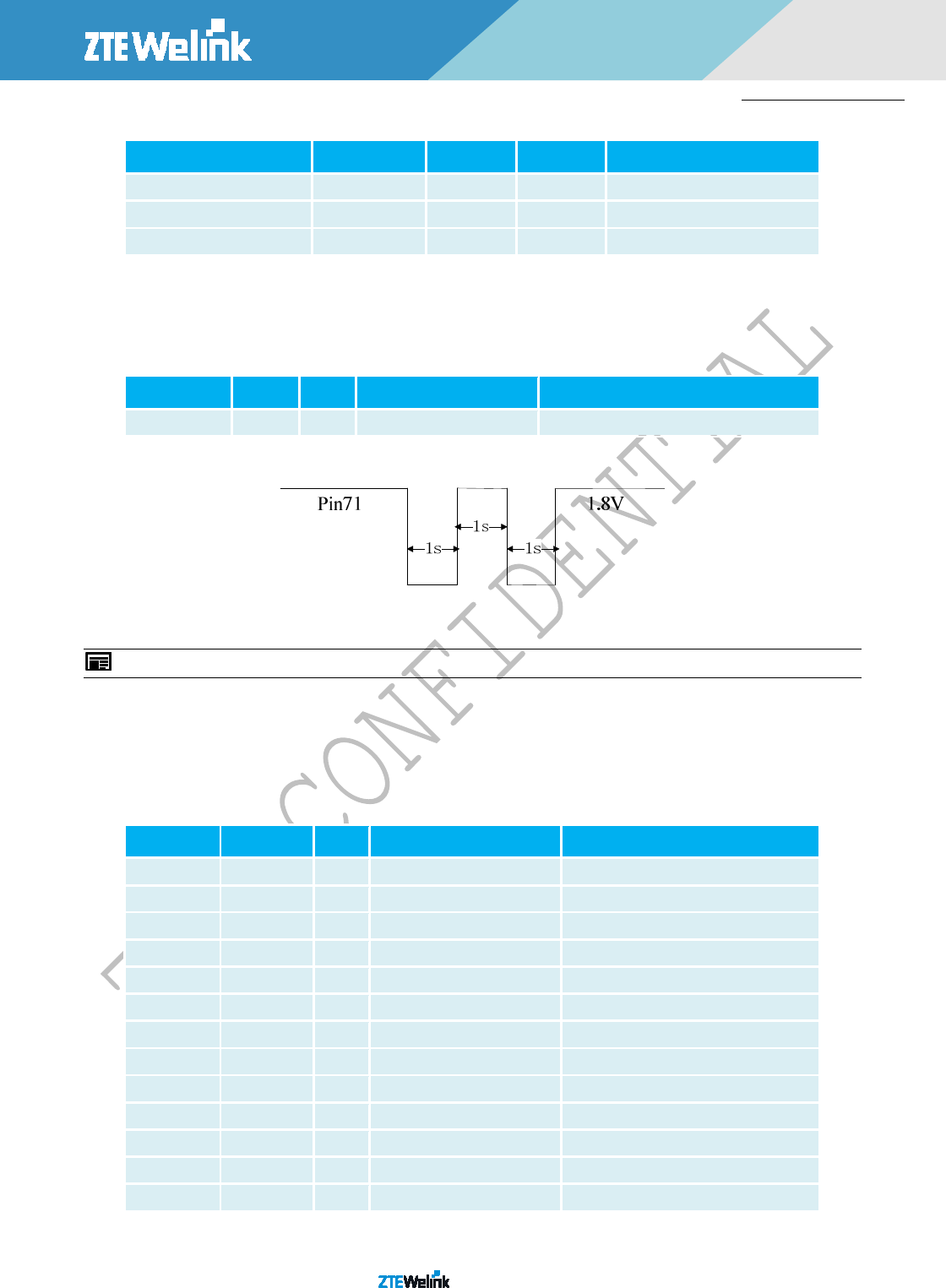
All Rights reserved, No Spreading abroad without Permission 23
ME36
3
0
Hardware Development Guide
Table 2-16 Characteristic of the ADC
Item Min Typ. Max Unit
ADC1 voltage range 0.05 1.75 V
ADC2 voltage range 0.05 1.75 V
ADC resolution 15 Bits
2.11. WAKEUP_OUT
S
IGNAL
The module provides an AP control interface for communicating with external Application Processor including WAKEUP_OUT.
The following table shows the pin definition of AP control interface.
Table 2-17 Pin Definition of WAKEUP_OUT
Pin Name Pin NO. I/O Description Comment
WAKEUP_OUT 71 DO Output wakeup signal 1.8V power domain
When there is a SMS received by the module, it will output the level shown as the figure below through pin 71.
Figure 2-17 The output signal of WAKEUP_OUT
NOTE: WAKEUP_OUT is only supported SMS by the firmware version of ME3630 currently.
2.12. GPIO
I
NTERFACE
Module provides 8 GPIO pins. The direction and output voltage level of the GPIO can be set by AT command “AT+ZGPIO”. The
input voltage level of the GPIO can also be read by AT command “AT+ZGPIO”. For more details of these AT commands, please refer to
document [ME3630_AT_Commands_Manual_V1.0].
Table 2-18 Pin Definition of GPIO
Pin Name Pin NO. I/O Description Comment
GPIO1 7 IO General input/output 1.8V power domain
GPIO2 8 IO General input/output 1.8V power domain
GPIO3 12 IO General input/output 1.8V power domain
GPIO4 13 IO General input/output 1.8V power domain
GPIO5 27 IO General input/output 1.8V power domain
GPIO6 28 IO General input/output 1.8V power domain
GPIO7 29 IO General input/output 1.8V power domain
GPIO8 30 IO General input/output 1.8V power domain
GPIO9 64 IO General input/output 1.8V power domain
GPIO10 65 IO General input/output 1.8V power domain
GPIO11 75 IO General input/output 1.8V power domain
GPIO12 76 IO General input/output 1.8V power domain
GPIO13 77 IO General input/output 1.8V power domain
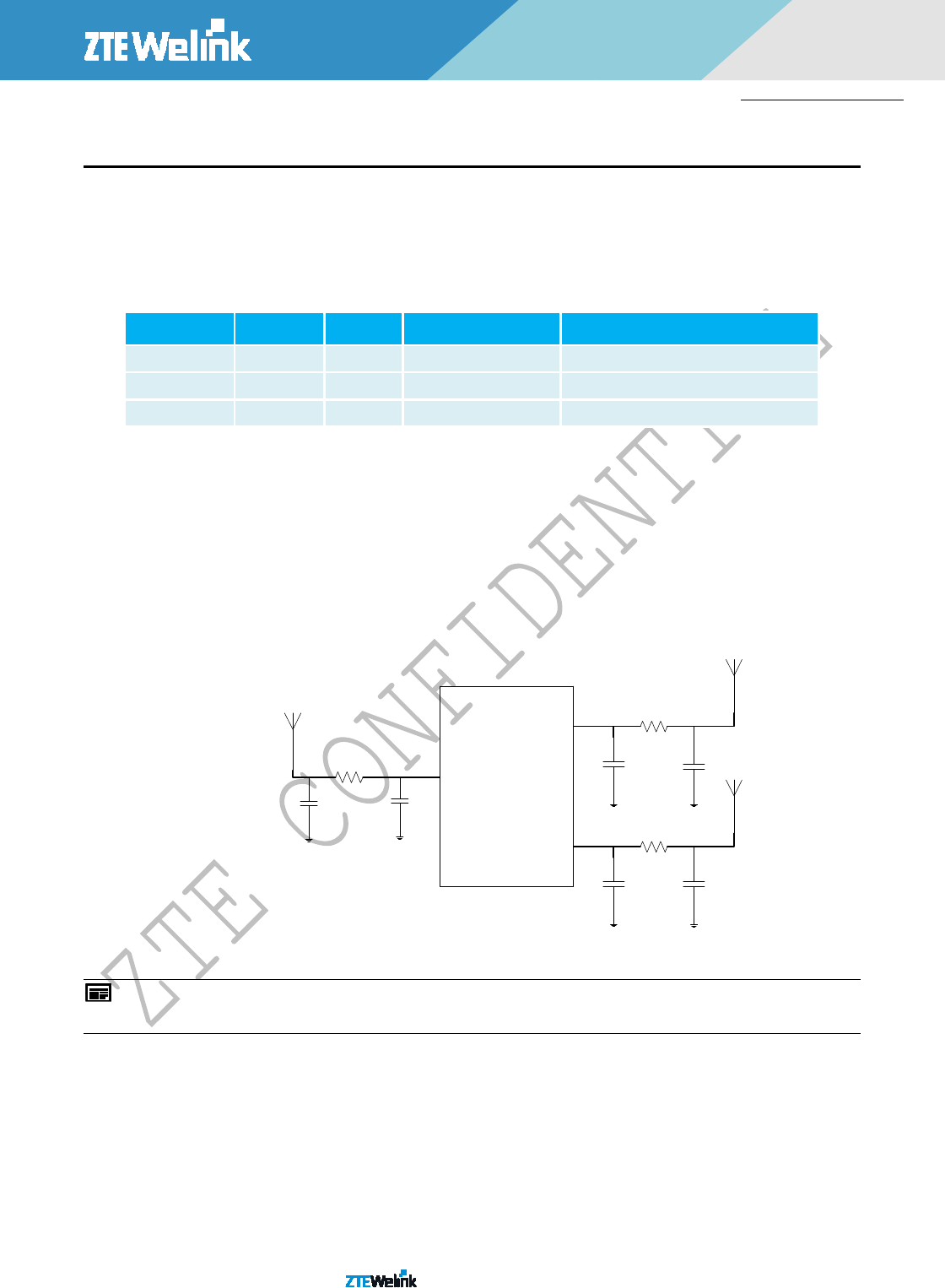
All Rights reserved, No Spreading abroad without Permission 24
ME36
3
0
Hardware Development Guide
3. A
NTENNA
I
NTERFACE
ME3630 antenna interface includes a main antenna, an optional Rx-diversity antenna, which is used for improve receiving
performance. The antenna interface has an impedance of 50Ω.
3.1. P
IN
D
EFINITION
The main antenna and Rx-diversity antenna pins definition are shown below.
Table 3-1 Pin Definition of GPIO
Pin Name Pin NO. I/O Description Comment
MAIN_ANT 62 IO Main antenna 50Ω impedance
DIV_ANT 79 AI Diversity antenna 50Ω impedance
GPS_ANT 10 IO GPS antenna 50Ω impedance
3.2. R
EFERENCE
D
ESIGN
The antenna is a sensitive device and its performance is greatly affected by external environments. The radiation performance
of the antenna is affected by the module dimensions, antenna position, occupied space size of the antenna, and the grounding of
surrounding components of the antenna. Besides, the fixed assembly of the antenna, the wiring of RF cables on the antenna, and the
fixed position of the antenna all affect the radiation performance of the antenna too.
The reference design of main antenna and Rx-diversity antenna is shown as below. It should reserve a π-type matching circuit
for better RF performance, and place these components as close as possible to the module. The capacitors are not mounted by
default.
MAIN_ANT
DIV_ANT
GPS_ANT
0
0
0
NC
NCNC
NC
NC
NC
Figure 3-1 Reference Circuit of Antenna Interface
NOTE: Keep a proper distance between main and diversity antenna to improve the receiving sensitivity. GNSS and Rx-diversity are not
supported by C1B, therefore GNNS antenna design is not concerned in C1B type.
3.3. R
EFERENCE
PCB
L
AYOUT OF
A
NTENNA
Please follow the following criterion in the process of antenna line PCB layout design:
Make sure that the transmission line’s characteristic impedance is 50ohm;
Keep line on the PCB as short as possible, since the antenna line loss shall be less than 0.3 dB;
Line geometry should have uniform characteristics, constant cross section, avoid meanders and abrupt curves;
It is wise to surround the PCB transmission line with ground, avoid having other signal tracks facing directly the antenna line
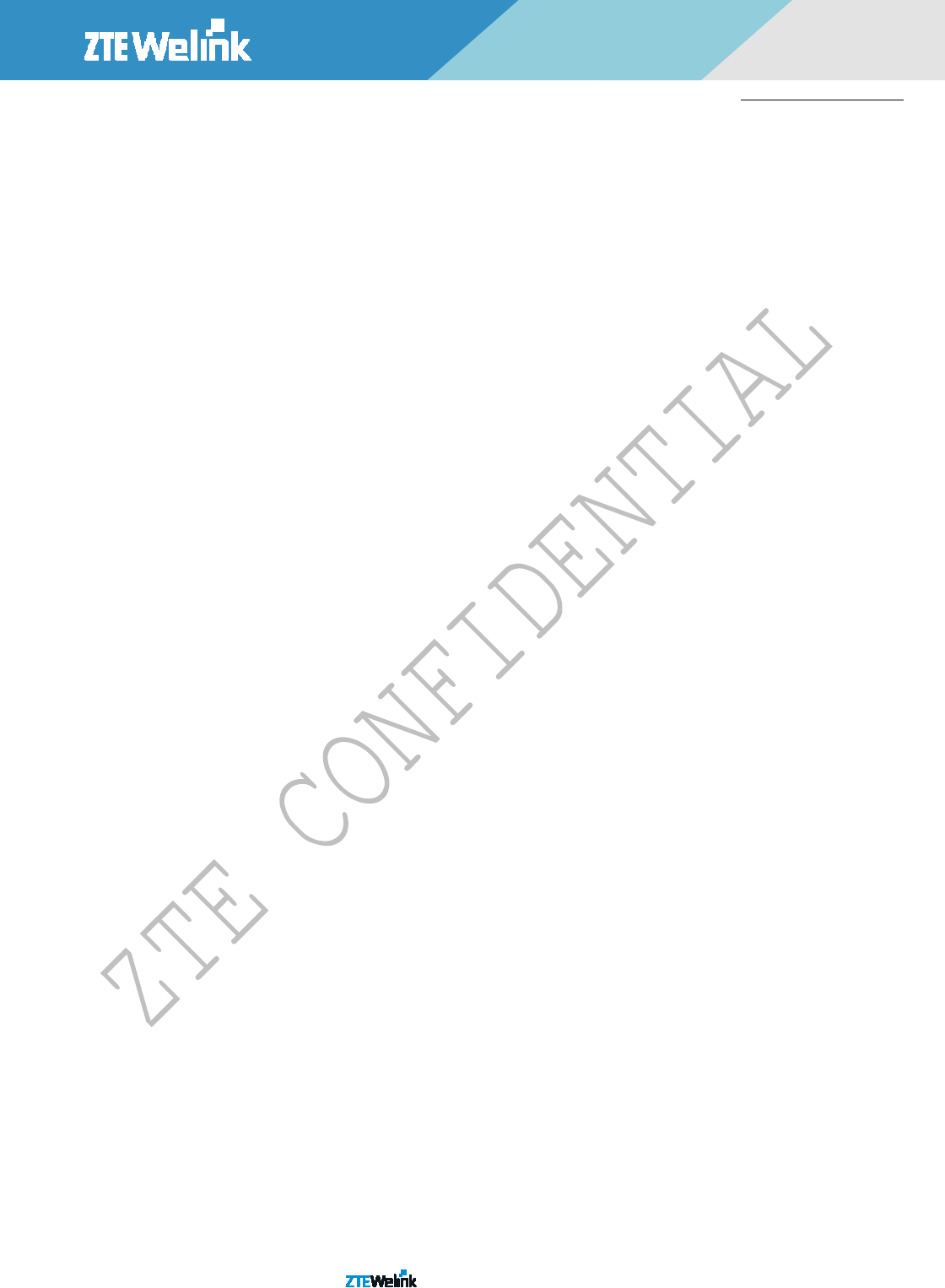
All Rights reserved, No Spreading abroad without Permission 25
ME36
3
0
Hardware Development Guide
track.
Keep at least one layer of the PCB used only for the ground plane; and use this layer as reference ground plane for the
transmission line;
The ground surrounding the antenna line on PCB has to be strictly connected to the main Ground Plane by means of via
holes (once per 2mm at least), placed close to the ground edges facing line track;
Place EMI noisy devices as far as possible from modules antenna line;
Keep the antenna line far away from the module power supply lines;
If EM noisy devices are present on the PCB hosting the Module, such as fast switching ICs, take care of the shielding of
the antenna line by burying it inside the layers of PCB and surround it with ground planes, or shield it with a metal frame
cover.
3.4. S
UGGESTIONS FOR
EMC
&
ESD
D
ESIGN
3.4.1. EMC
D
ESIGN
R
EQUIREMENTS
During the design of the whole device, the user needs to fully consider the EMC problem caused by the signal integrity and
power integrity.
During the product design, it is better to separate the module from the mainboard PCB, instead of installing the module on the
ground of the mainboard. If they cannot be separated, the module should be far from modules and components that might generate
EMI, such as chip and memory, power interface, and data cable interface.
Because the mainboard of PAD, CPE, and Internet laptops does not have a shielding cover, as that of mobile terminals, to shield
most circuits to avoid overflow of electromagnetic interference, you can spray conductive paint on the surface on non-antenna areas
within the structural components above and below the mainboard, and the conductive paint should be connected to the ground on
the mainboard by several points to shield electromagnetic interference.
Besides, data cables of the LCD and the camera might introduce interference signals, which affect the receiving performance of
the antenna. Thus, it is necessary to wrap conductive cloth around the two data cables and connected them to the ground.
RF cables of the antenna should be far from modules and components that might generate EMI, such as chip and memory,
power interface, and data cable interface. The wiring of RF cables should be close to the ground of the mainboard.
During the layout and wiring of peripheral circuits, for the wiring of power and signal cables, keep a distance of 2 times of the
line width, so as to effectively reduce the coupling between signals and keep a clean reflux path for the signal.
During the design of peripheral power circuits, the de-coupled capacitor should be placed closed to the module power PIN, the
high-frequency high-speed circuit and the sensitive circuit should be placed far away from the border of PCB. They should better be
separated during layout, so as to reduce the interference between them and protect the sensitive signal.
For the circuit or device on the side of system board that might interfere with the module, it should be shielded during design.
3.4.2. ESD
D
ESIGN
R
EQUIREMENTS
Module is embedded on the side of system board, so the user needs to make the ESD protection during design. For the key
input/output signal interface, such as the (U)SIM card signal interface, the ESD device should be placed closely for protection.
Besides, on the side of main board, the user should reasonably design the structure and PCB layout, guarantee that the metallic
shielding shell is fully grounded, so as to leave a smooth discharge channel for ESD.
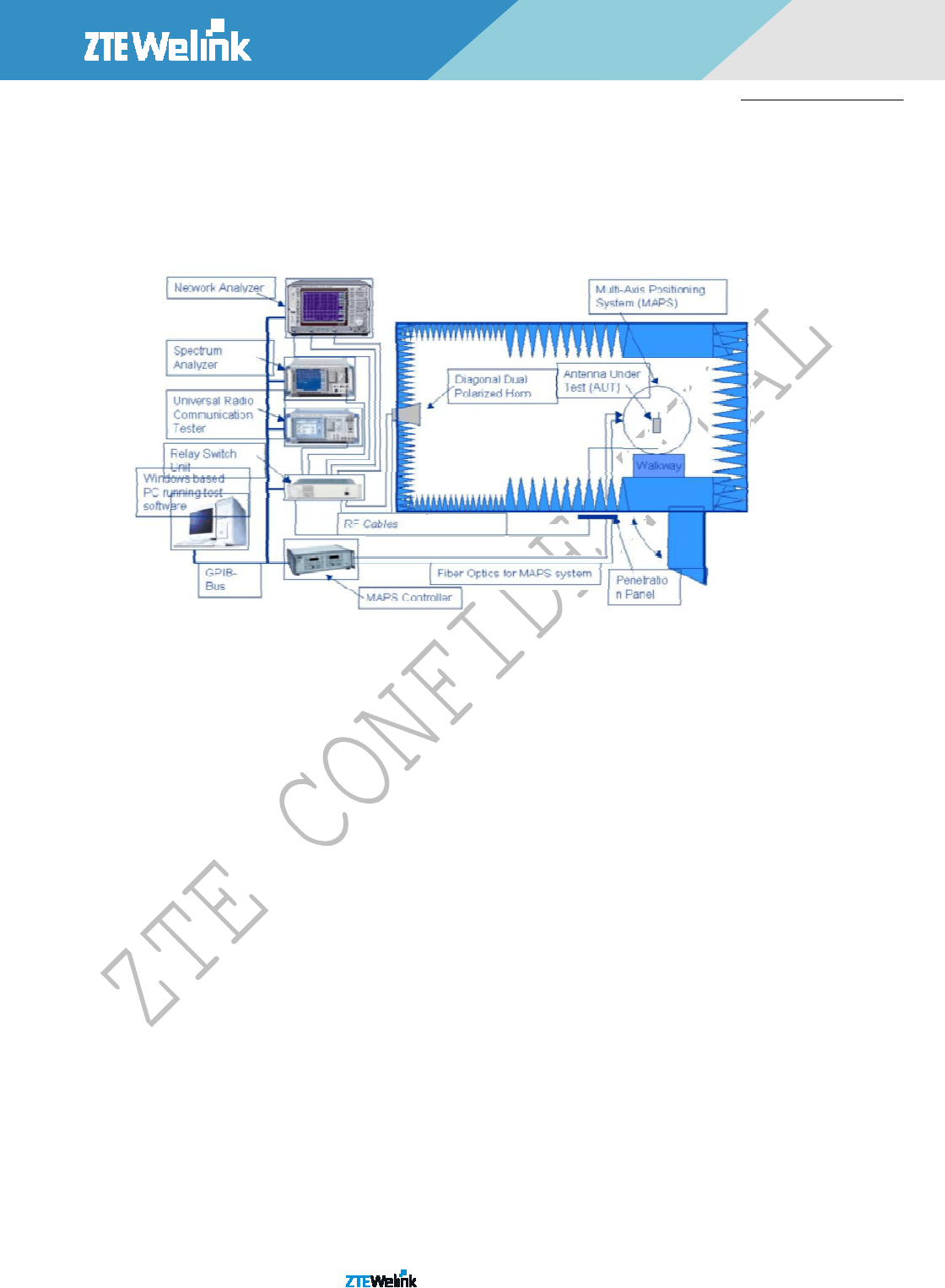
All Rights reserved, No Spreading abroad without Permission 26
ME36
3
0
Hardware Development Guide
3.5. T
EST
M
ETHODS FOR
W
HOLE
-S
ET
A
NTENNA
OTA
Figure below is the diagram of OTA test system of CTIA. The system is mainly composed of test chamber, high-precision
positioning system and its controller, Windows based PC running test software and RF test instruments with automatic test program.
The main RF instruments are integrated RF test equipment, Spectrum Analyzer, Network Analyzer.
The radio equipments, Relay Switch Unit and PC with automatic test software are communicated via GPIB interface.
Figure 3-2 The OTA test system of CTIA
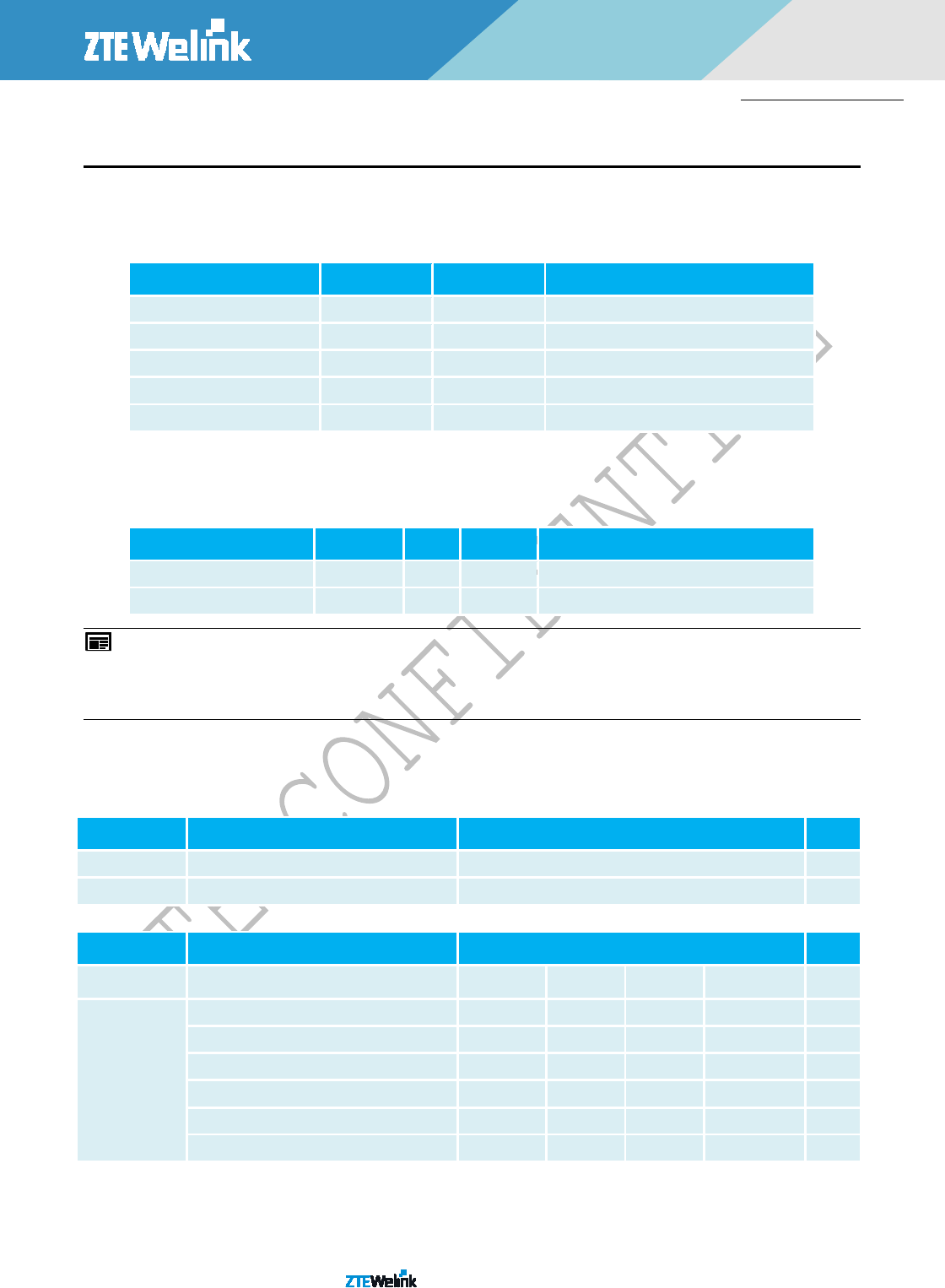
All Rights reserved, No Spreading abroad without Permission 27
ME36
3
0
Hardware Development Guide
4. E
LECTRICAL
,
R
ELIABILITY AND
R
ADIO
C
HARACTERISTICS
4.1. A
BSOLUTE
M
AXIMUM
R
ATINGS
Absolute maximum ratings for power supply and voltage on digital and analog pins of module are listed in the following table:
Table 4-1 Absolute Maximum Ratings
Parameter Min Max Unit
V_BAT -0.5 6.0 V
Peak current of V_BAT 0 2 A
Voltage at digital pin -0.3 2.1 V
Voltage at ADC1 0.05 1.75 V
Voltage at ADC2 0.05 1.75 V
4.2. O
PERATING
T
EMPERATURE
The operating temperature is listed in the following table.
Table 4-2 Operating Temperature
Parameter Min Typ. Max Unit
Normal Temperature -30 25 75 ℃
Storage Temperature -40 85 ℃
NOTE:
1)
When the module works within the temperature range, the deviations from the RF specification may occur. For example, the frequency error or
the phase error would increase.
4.3. C
URRENT
C
ONSUMPTION
The values of current consumption in different operating mode are shown below.
Table 4-3 Averaged standby DC power consumption [1]
Parameter Condition Typical Value Unit
OFF state Power down 45
Sleep All system is halted 1.5
Table 4-4 Averaged standby DC power consumption [2]
Parameter Condition Typical Value Unit
Bandwidth 5MHz 10MHz 15MHz 20MHz
LTE LTE FDD Band 1, Pout=23dBm 550 560 590 600 mA
LTE FDD Band 3, Pout=23dBm 500 520 580 590 mA
LTE TDD Band 38 ,Pout=23dBm 380 390 430 450 mA
LTE TDD Band 39 ,Pout=23dBm 300 310 360 390 mA
LTE TDD Band 40, Pout=23dBm 350 360 400 430 mA
LTE TDD Band 41, Pout=23dBm 380 390 430 450 mA
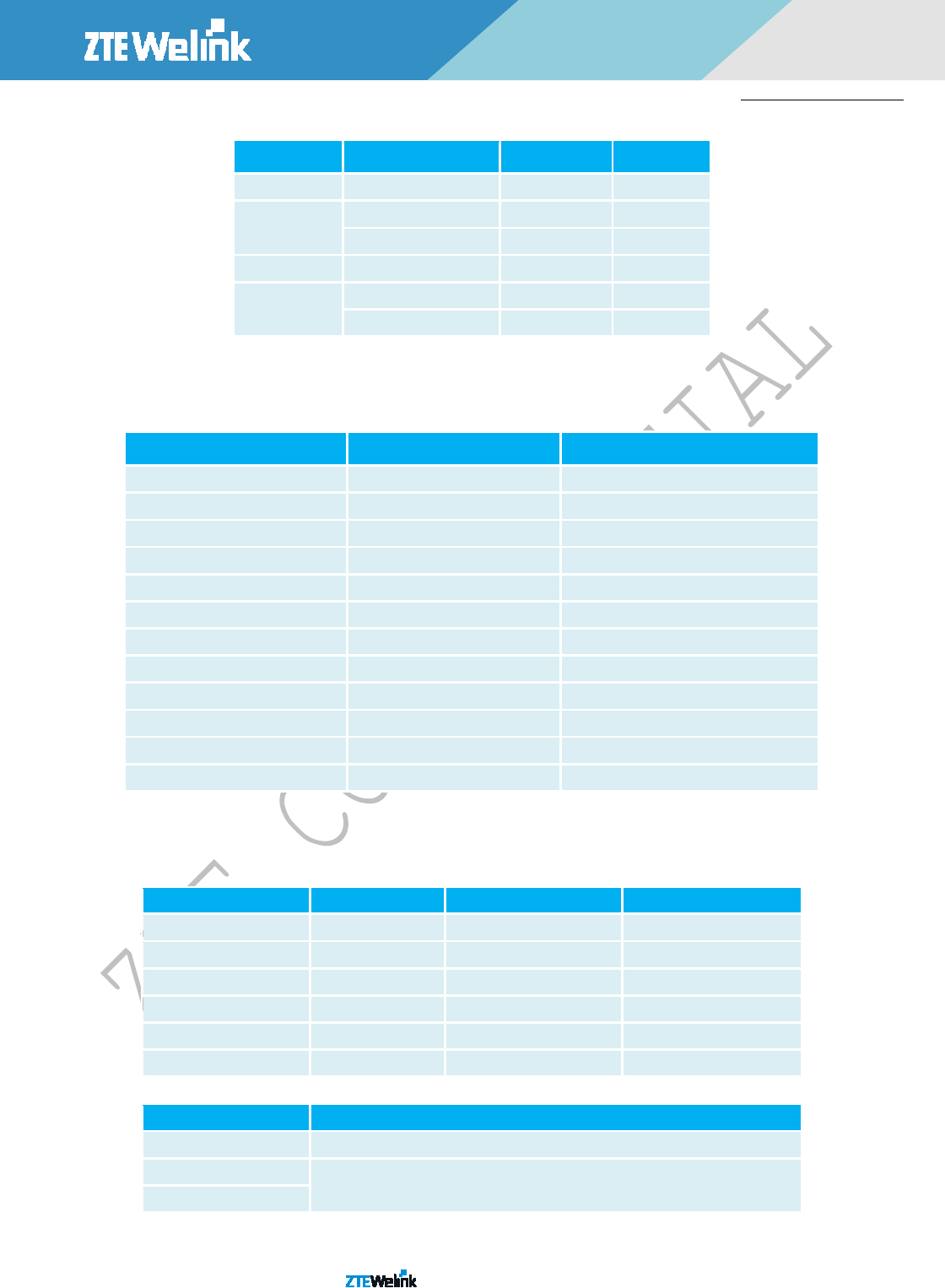
All Rights reserved, No Spreading abroad without Permission 28
ME36
3
0
Hardware Development Guide
Table 4-5 Averaged standby DC power consumption [3]
Parameter Condition Typical Value Unit
WCDMA Band1 ,Pout=24dBm 550 mA
TD-SCDMA Band34, Pout=24dBm 180 mA
Band39, Pout=24dBm 180 mA
CDMA BC0, Pout=23dBm 600 mA
GSM Band3, Pout=30dBm 200 mA
Band8, Pout=33dBm 300 mA
4.4. RF
O
UTPUT
P
OWER
The following table shows the RF output power of ME3630 module.
Table 4-6 Conducted RF Output Power
Frequency Max Min
LTE FDD Band 1 23dBm ±2.7dB <-39dBm
LTE FDD Band 3 23dBm ±2.7dB <-39dBm
LTE TDD Band38 23dBm ±2.7dB <-39dBm
LTETDD Band 39 23dBm ±2.7dB <-39dBm
LTE TDD Band40 23dBm ±2.7dB <-39dBm
LTE TDD Band 41 23dBm ±2.7dB <-39dBm
WCDMA Band1 24+1/-3 dBm <-50dBm
TD-SCDMA Band34 24+1/-3 dBm <-50dBm
TD-SCDMA Band39 24+1/-3 dBm <-50dBm
CDMA BC0 23~30 dBm <-50dBm
GSM Band3 30dBm ±2dB <-50dBm
GSM Band8 33dBm ±2dB <-50dBm
4.5. RF
R
ECEIVING
S
ENSITIVITY
The following table shows the conducted RF receiving sensitivity of ME3630 module.
Table 4-7 Conducted RF Receiving Sensitivity [1]
Band
5 MHz(dBm)
10 MHz(dBm)
20 MHz(dBm)
LTE FDD Band 1 -100 dBm -97 dBm -94 dBm
LTE FDD Band 3 -97 dBm -94dBm -91dBm
LTE TDD Band 38 -100 dBm -97 dBm -94 dBm
LTE TDD Band 39 -100 dBm -97 dBm -94 dBm
LTE TDD Band 40 -100 dBm -97 dBm -94 dBm
LTE TDD Band 41 -100 dBm -97 dBm -94 dBm
Table 4-8 Conducted RF Receiving Sensitivity [2]
Band Sensitivity
WCDMA Band1 -107 dBm
TD-SCDMA BAND34 -108 dBm
-108 dBm
TD-SCDMA BAND39
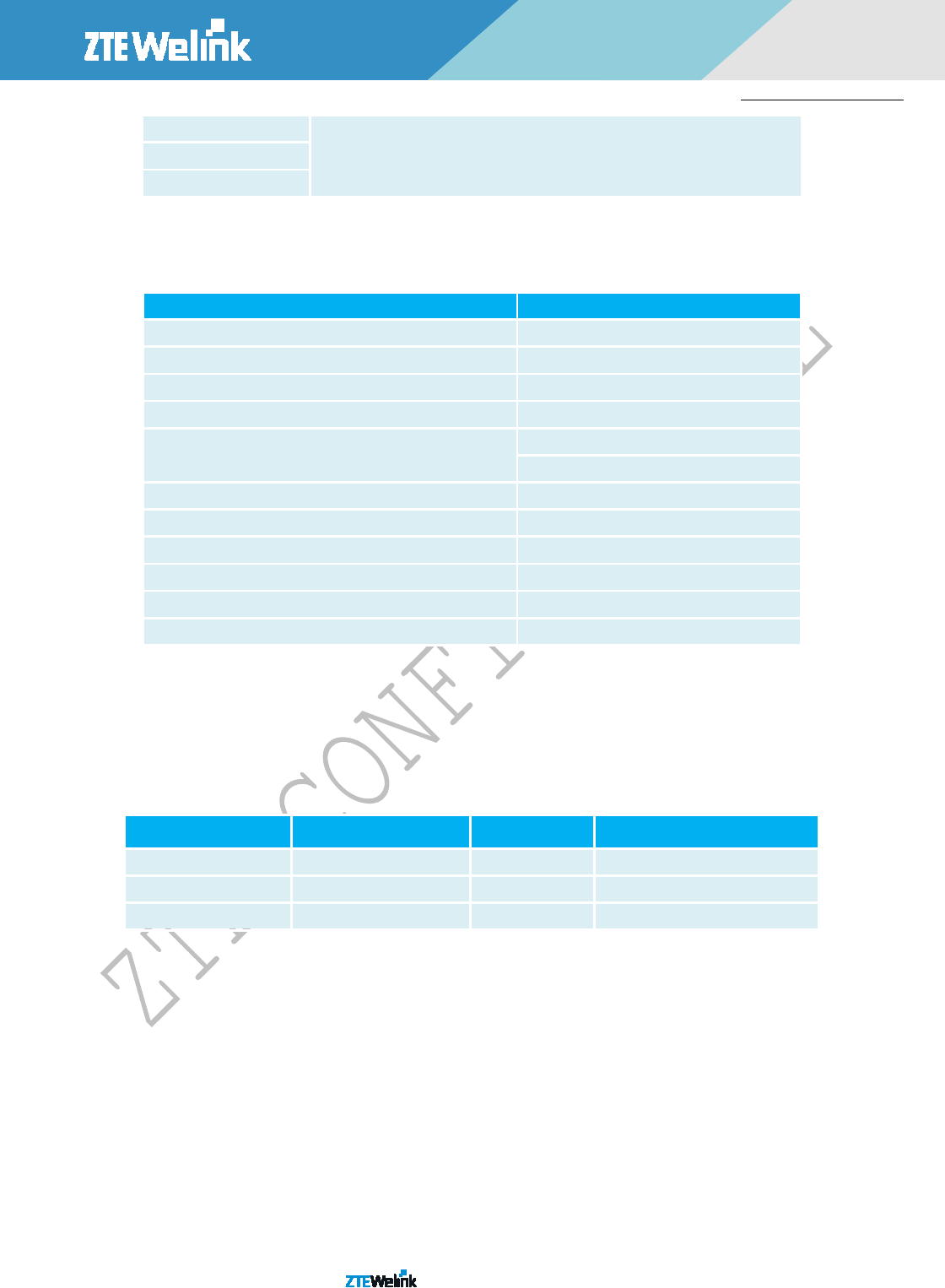
All Rights reserved, No Spreading abroad without Permission 29
ME36
3
0
Hardware Development Guide
CDMA BC0 -104 dBm
-102 dBm
-102 dBm
GSM Band3
GSM Band8
4.6. GNSS
T
ECHNICAL
P
ARAMETERS
The following table shows the GNSS techinical parameters of ME3630 module.
Table 4-9 GNSS Technical Parameters
GNSS (GPS/GLONASS) Technical specification
GPS Frequency 1575.42±1.023 MHz
Tracking sensitivity -155dbm
Cold-start sensitivity -143dbm
Accuracy (Open Sky) 2meter
TTFF (Open Sky) Hot start: 4s
Cold start: 55s
Receiver Type Qualcomm GPS Gen8C
GPS L1 Frequency 1575.42MHz
Update rate 2-4 HZ
GNSS (GPS/GLONASS) data format ZTE Loc API/ZTE auto-negotiation
GNSS (GPS/GLONASS) Current consumption 65mA
GNSS (GPS/GLONASS) antenna Passive/Active antenna
4.7. E
LECTROSTATIC
D
ISCHARGE
The module is not protected against electrostatics discharge (ESD) in general. Consequently, it is subject to ESD handling
precautions that typically apply to ESD sensitive components. Proper ESD handling and packaging procedures must be applied
throughout the processing, handling and operation of any application that incorporates the module.
The following table shows the module electrostatics discharge characteristics.
Table 4-10 ESD
Tested Points Contact discharge Air Discharge Unit
V_BAT ± 5 ± 10 kV
All antenna interfaces ± 4 ± 8 kV
Other interfaces ± 0.5 ± 1 kV
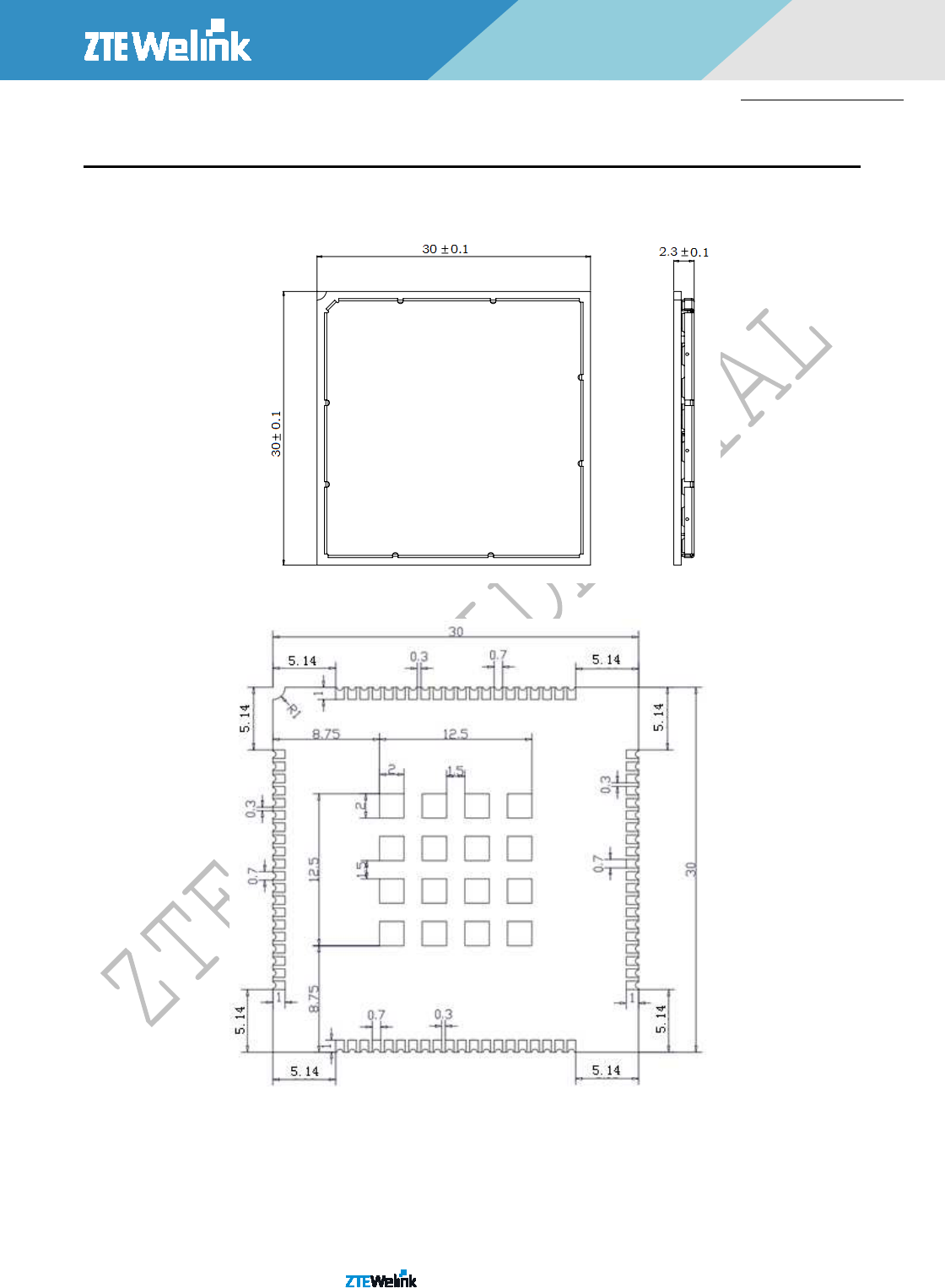
All Rights reserved, No Spreading abroad without Permission 30
ME36
3
0
Hardware Development Guide
5. M
ECHANICAL
D
IMENSIONS
This chapter describes the mechanical dimensions of the module. All dimensions are measured in mm.
5.1. M
ECHANICAL
D
IMENSIONS OF THE
M
ODULE
Figure 5-1 ME3630 Top and Side Dimensions
Figure 5-2 ME3630 Bottom Dimensions (Bottom view)
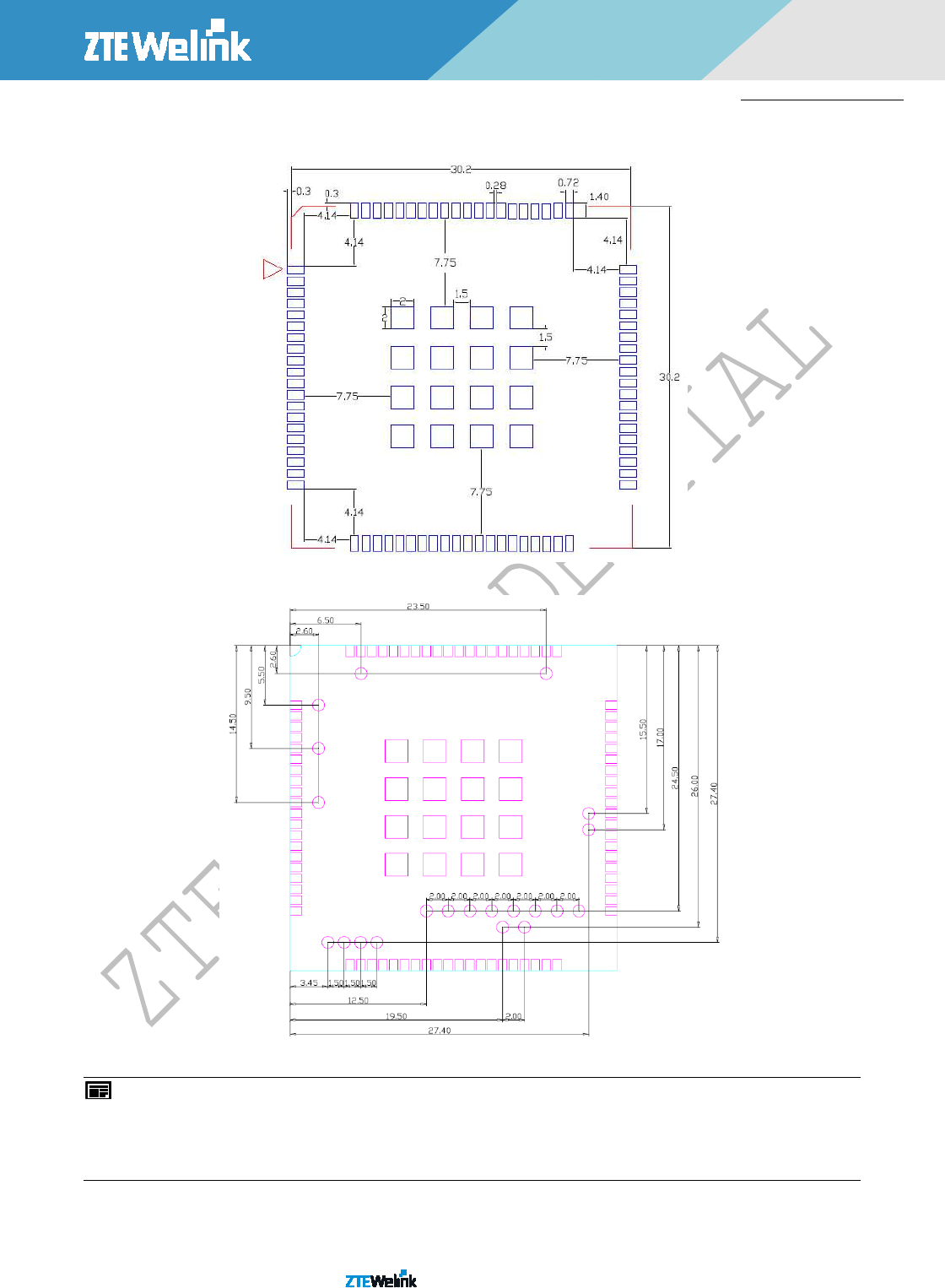
All Rights reserved, No Spreading abroad without Permission 31
ME36
3
0
Hardware Development Guide
5.2. F
OOTPRINT OF
R
ECOMMENDATION
Figure 5-3 Recommended Footprint (Top view)
Figure 5-4 Location and dimension of test points
NOTE:
1. Keep out the area below the test point (circular area on the above figure) in the host PCB.
2. In order to maintain the module, keep about 3mm between the module and other components in the host PCB.
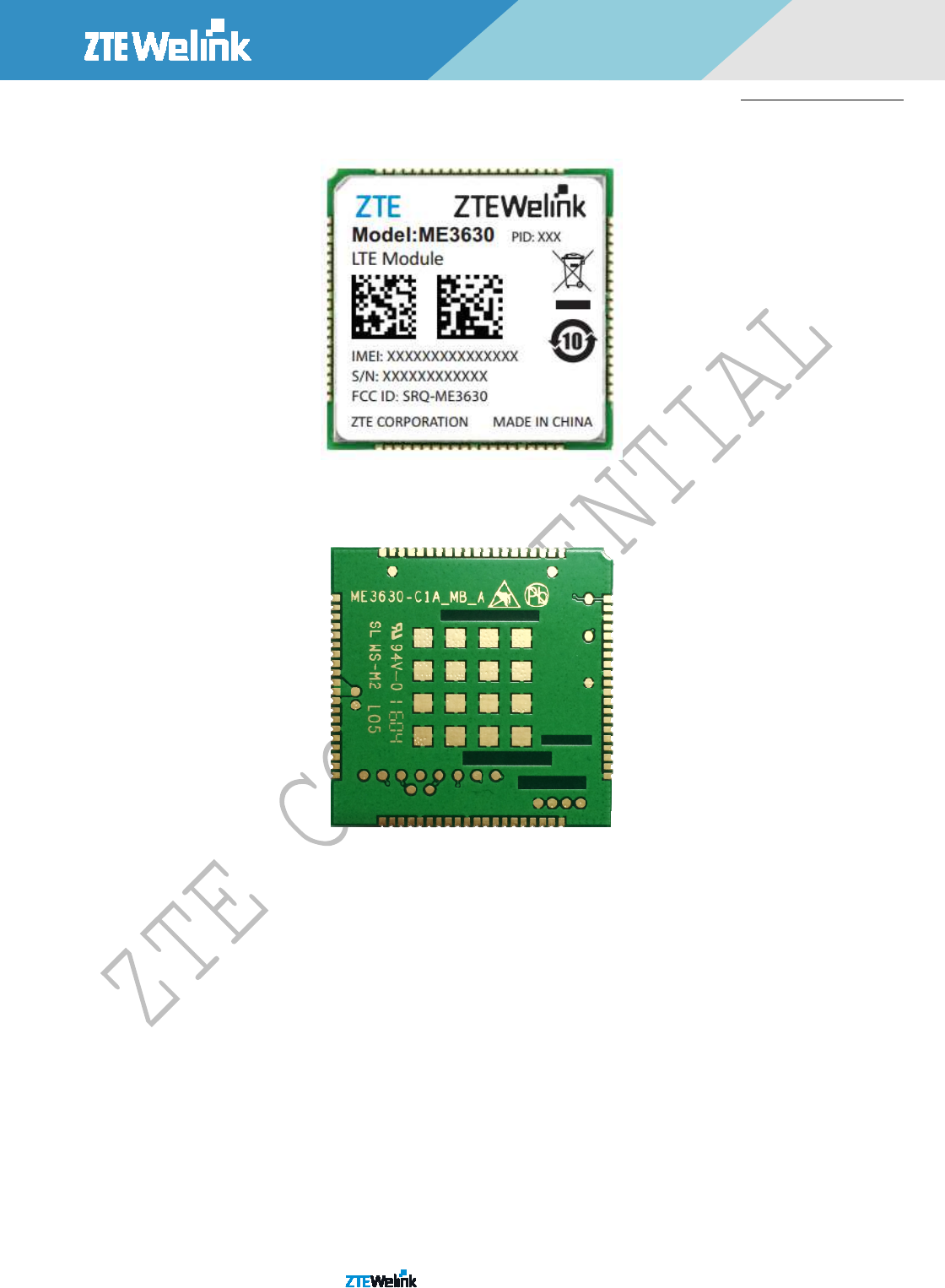
All Rights reserved, No Spreading abroad without Permission 32
ME36
3
0
Hardware Development Guide
5.3. T
OP
V
IEW OF THE
M
ODULE
Figure 5-5 Top View of the Module
5.4. B
OTTOM
V
IEW OF THE
M
ODULE
Figure 5-6 Bottom View of the Module
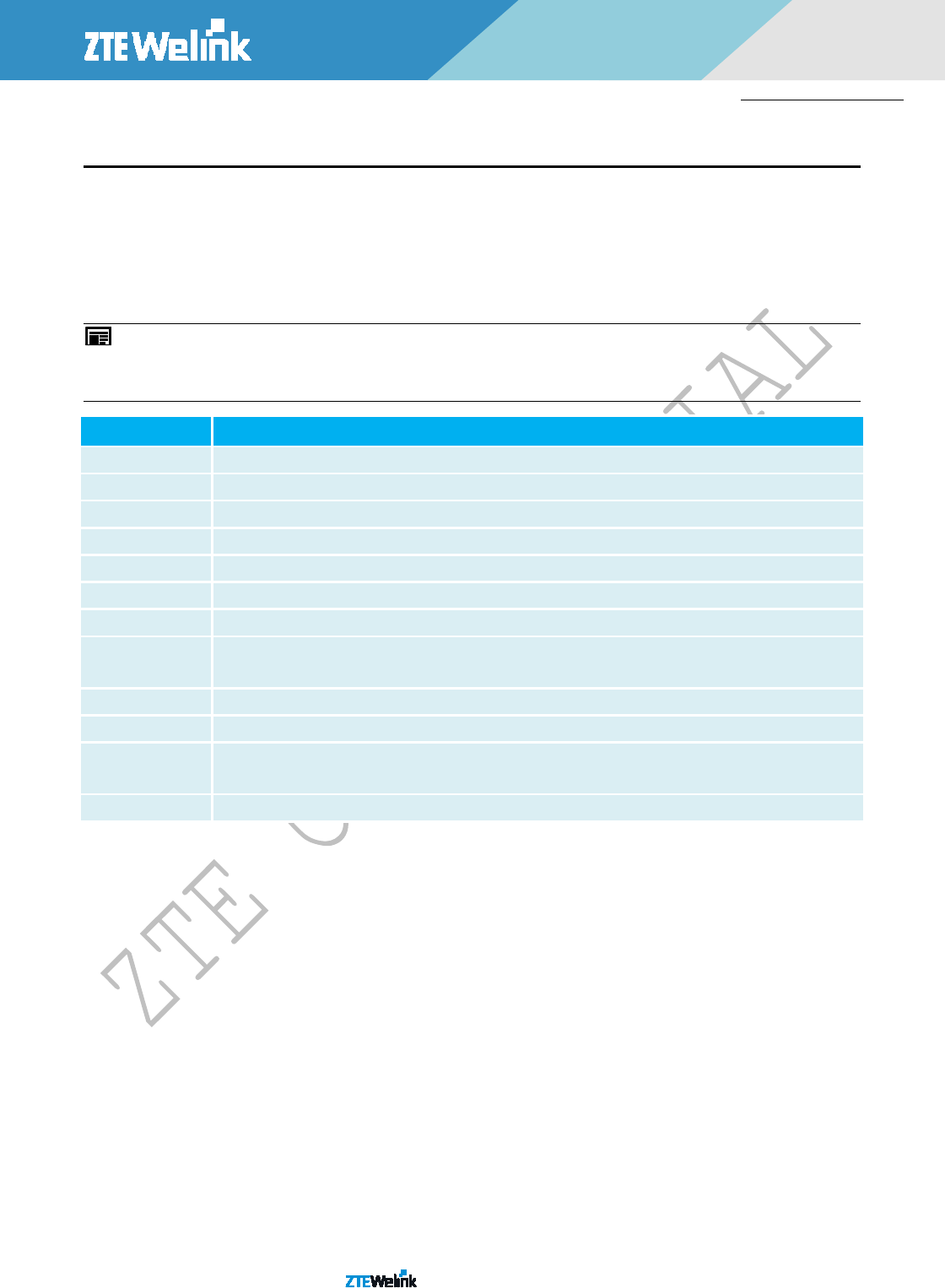
All Rights reserved, No Spreading abroad without Permission 33
ME36
3
0
Hardware Development Guide
6. R
ELATED
T
EST
&
T
EST
S
TANDARD
6.1. T
ESTING
R
EFERENCE
The related tests of MODULE comply with the IEC standard, including the equipment running under high/low temperature,
storage under high/low temperature, temperature shock and EMC. Table 6-1 is the list of testing standard, which includes the
related testing standards for MODULE.
Table 6-1 Testing Standard
NOTE:
IEC: International Electro technical Commission;
GB/T: Recommended national standard
Test Standard Document Reference
IEC6006826 Environmental testing-Part2.6: Test FC: Sinusoidal Vibration
IEC60068234 Basic environment testing procedures part2.
IEC60068264 Environmental testing-part2-64: Test FH: vibration, broadband random and guidance.
IEC60068214 Environmental testing-part 2-14: Test N: change of temperature
IEC60068229 Basic environmental testing procedures-part2: Test EB and guidance.
IEC6006822 Environmental testing-part2-2: Test B:dry heat
IEC6006821 Environment testing-part2-1: Test A: cold.
GB/T 15844.2 MS telecommunication RF wireless phone-set environment requirement & experimental method – part 4: Strict level of
experimental condition
GB/T 2423.17 Basic environment experiment of electronic products-Experiment Ka: Salt mist experiment method
GB/T 2423.5 Basic environment experiment of electronic products-Part2: Experiment method Try Ea & Introduction: Shock
GB/T 2423.11 Basic environment experiment of electronic products-Part2: Experiment method Try Fd: Broad frequency band random
vibration (General requirement)
TIA/EIA 603 3.3.5 TIA Standard-part3-5:Shock Stability
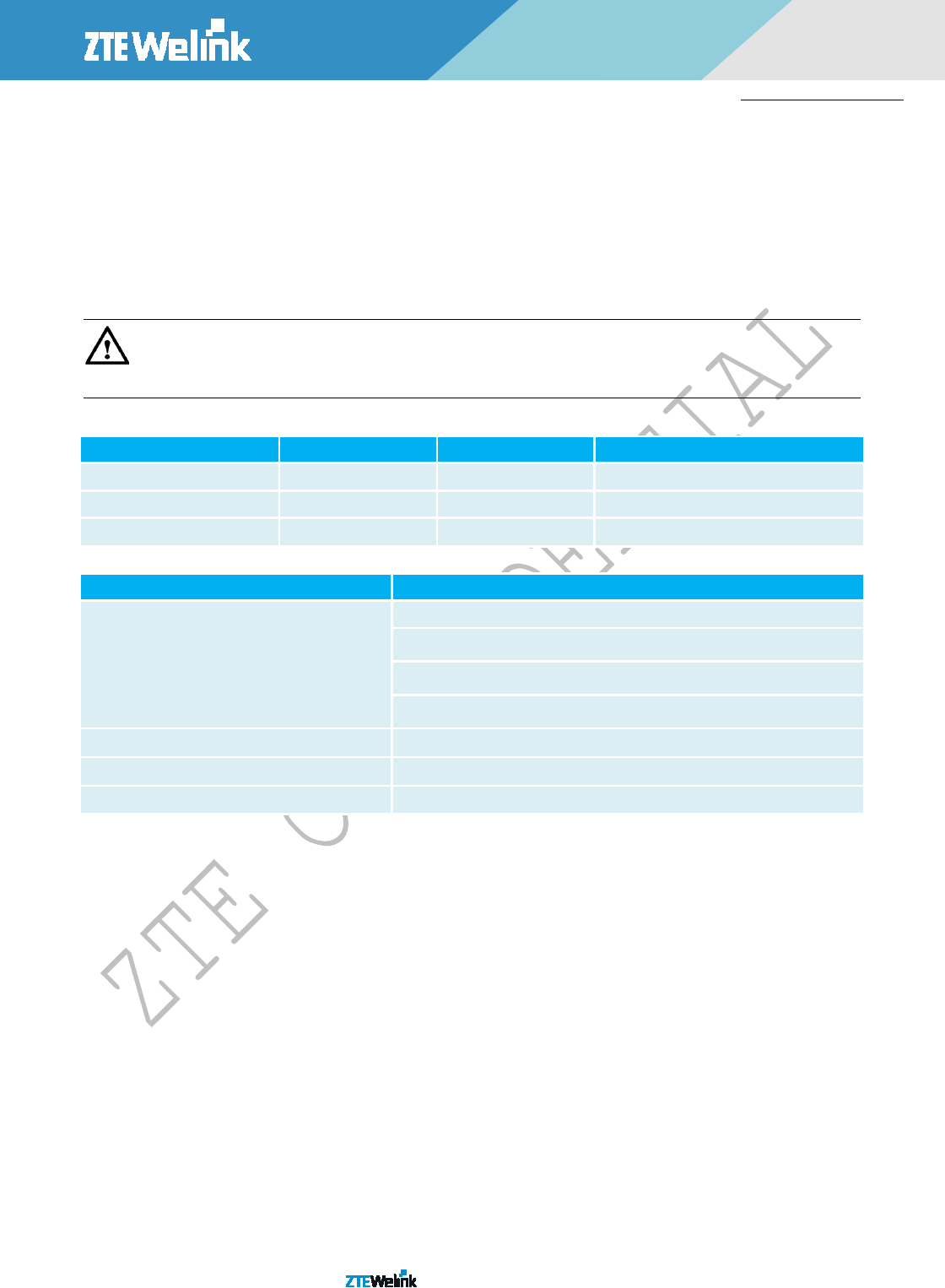
All Rights reserved, No Spreading abroad without Permission 34
ME36
3
0
Hardware Development Guide
6.2. D
ESCRIPTION OF
T
ESTING
E
NVIRONMENT
The working temperature range of MODULE is divided into the normal working temperature range and the extreme working
temperature range. Under the normal working temperature range, the testing result of RF complies with the requirements of 3GPP
specifications, and its function is normal. Under the extreme temperature range, the RF index basically complies with the 3GPP
specifications, and the quality of data communication is affected to a certain extent, but its normal function is not affected. MODULE
has passed the EMC test. Table 6-2 is the requirement for the testing environment, and Table 6-3 lists out the instruments and
devices that might be used during the test.
WARNING: Table 6-2 lists the extreme working conditions for the Module. Using the Module beyond these conditions may result in
permanent damage to the module.
Table 6-2 Testing Environment
Working Condition Min Temperature Max Temperature Remark
Normal working condition -30°C 75°C All the indexes are good.
Extreme working condition -40~ -30°C 75~85°C Some indexes become poorer.
Storage -40°C 85°C Storage environment of module
Table 6-3 Testing Instrument & Device
Testing Item Instrument & Device
RF test Comprehensive testing device
RF cable
Tower antenna
Microwave darkroom
High/Low-temperature running & storage test High/Low-temperature experimental box
Temperature shock test Temperature shock experimental box
Vibration test Vibration console
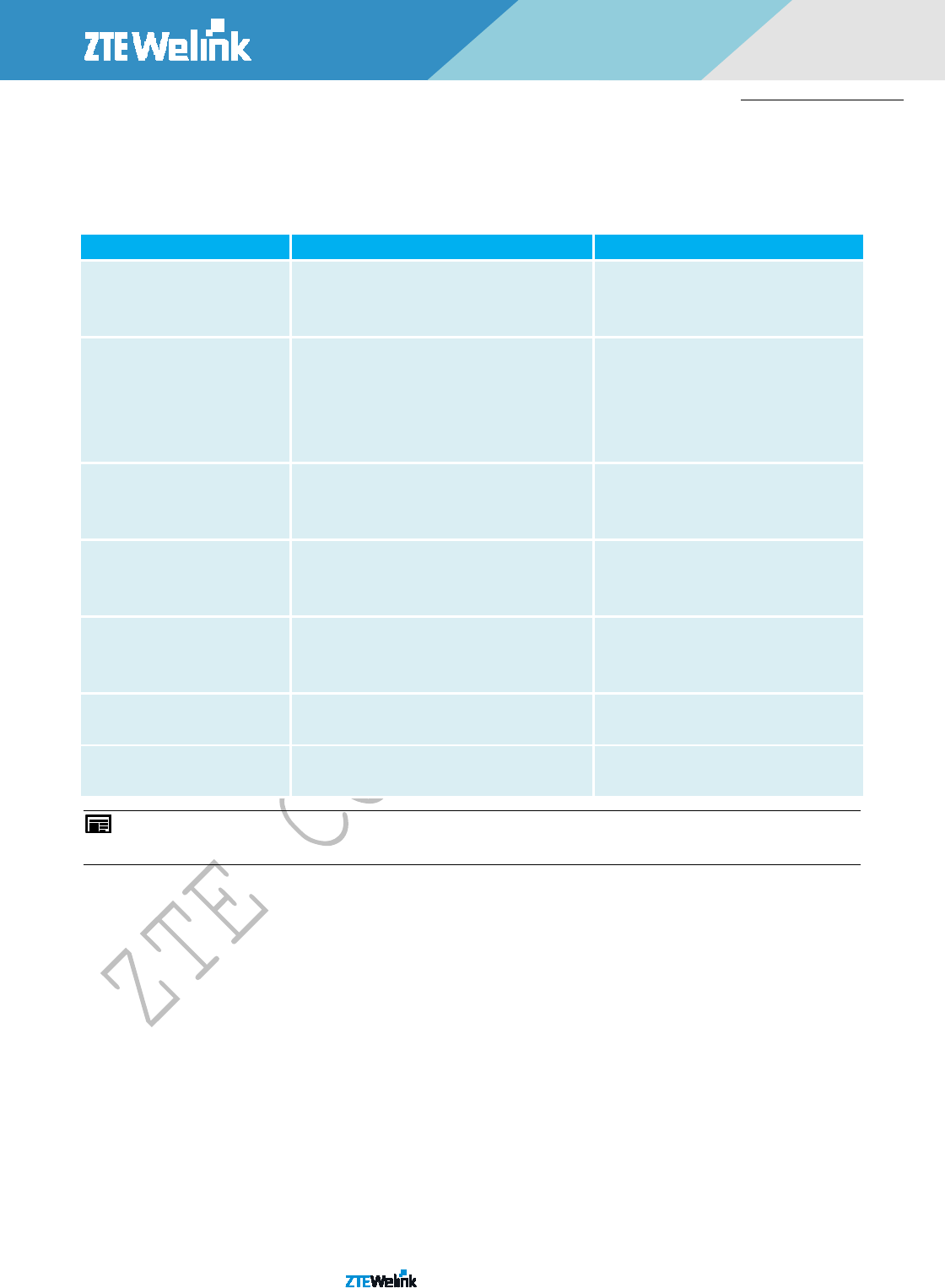
All Rights reserved, No Spreading abroad without Permission 35
ME36
3
0
Hardware Development Guide
6.3. R
ELIABILITY
T
ESTING
E
NVIRONMENT
The reliability test includes the vibration test, high/low-temperature running, high/low-temperature storage and temperature
shock experiment test. Refer to Table 6-4 for the specific parameters.
Table 6-4 Reliability Features
Test Item Test Condition Test Standard
Random vibration Frequency range: 5-20Hz, PSD: 1.0m2/s3
Frequency range: 20-200Hz, -3dB/oct
3 axis, 1 hour for each axis
IEC 68-2-6
Temperature shock Low temperature: -40°C ± 2°C
High temperature: +80°C ± 2°C
Temperature changing period: less than 30s
Test duration: 2 hours
Cycle: 10
IEC 68-2-14 Na
High-temperature running Normal high temperature: 75 °C
Extreme high temperature: 85°C
Duration: 24 hours
ZTE standard
Low-temperature running Normal low temperature: -30°C
Extreme low temperature: -40°C
Duration: 24 hours
ZTE standard
High temperature & high humidity Temperature: +60°C
Humidity: 95%
Duration: 48 hours
ZTE standard
High temperature storage Temperature: 85°C
Duration: 24 hours
IEC 68-2-1 Ab
Low temperature storage Temperature: -40°C
Duration: 24 hours
IEC 68-2-2 Bb
NOTE: When the Module works at the normal temperature, all its RF indexes comply with the 3GPP specifications. When the Module works
at extreme temperature, certain RF indexes do not comply with the 3GPP specifications.
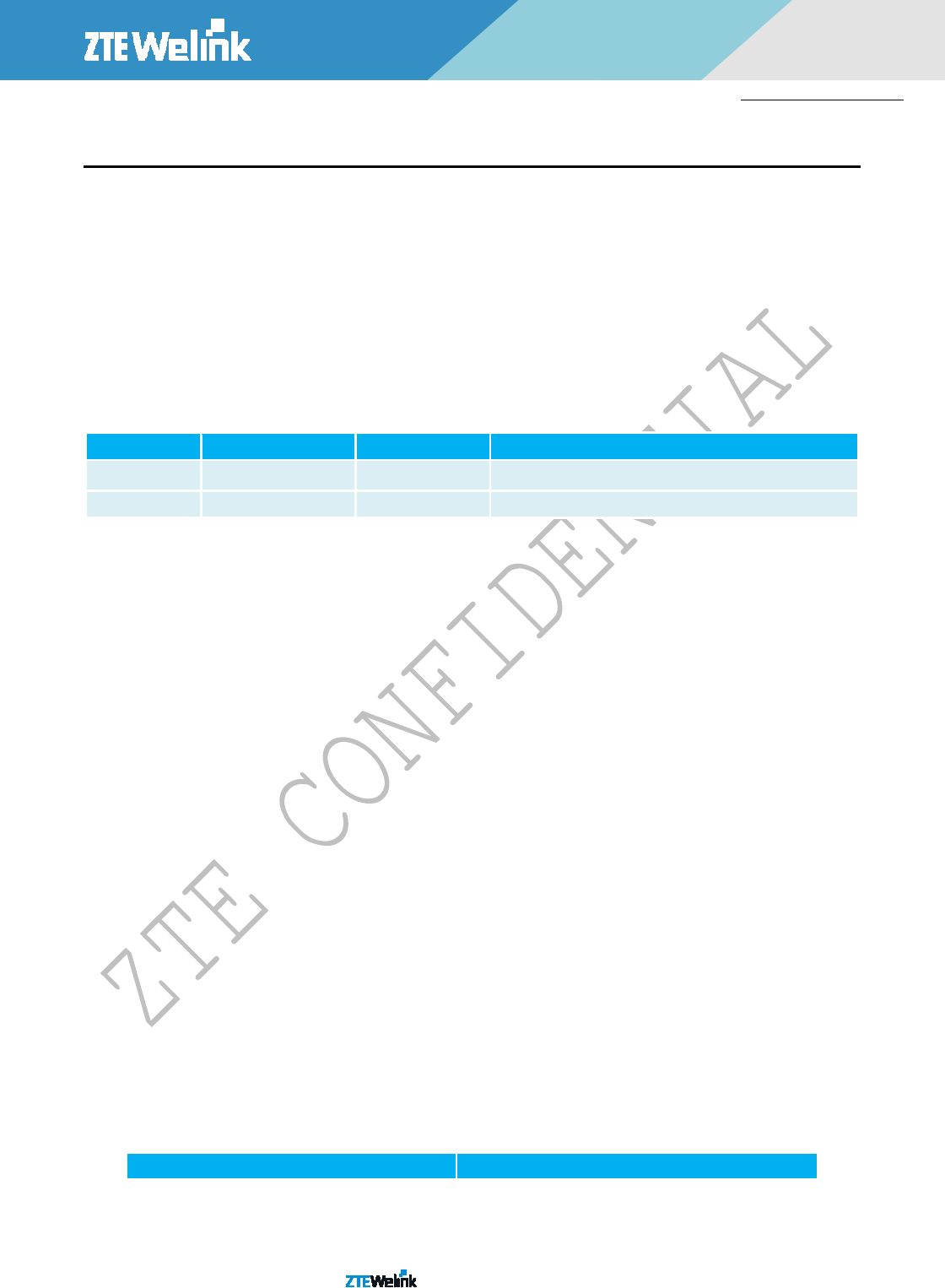
All Rights reserved, No Spreading abroad without Permission 36
ME36
3
0
Hardware Development Guide
7. SMT
P
ROCESS AND
B
AKING
G
UIDE
This chapter describes module’s storage, PAD design, SMT process parameters, baking requirements, etc., and it is applicable
for the process guide to second-level assembly of LCC encapsulation module.
7.1. S
TORAGE
R
EQUIREMENTS
Storage conditions: temperature<40℃, relative humidity<90% (RH), 12 months weld ability guaranteed under this
circumstances of excellent sealing package.
The Moisture sensitivity level for all modules is level 3 (Conforming to IPC/JEDEC J-STD-020). After opening the package, mount
within 168 hours under the environment conditions of temperature<30℃, relative humidity<60% (RH). If it doesn’t meet the above
requirements, perform the baking process. See the baking parameters in Table below:
Table 7-1 Baking parameters
Temperature Baking conditions Baking time Remarks
125± 5℃ Moisture: ≤60%RH 8 hours The accumulated baking time must be less than 96 hours
45± 5℃ Moisture: ≤5%RH 192 hours
The product’s transportation, storage and processing must conform to IPC/JEDEC J-STD-033
When in the process of PAD designing of module, refer to IPC-SM-782A and the chapter 6.2 below.
7.2. M
ODULE
P
LAINNESS
S
TANDARD
Plainness of the module is required to be less than 0.15mm.
Measurement method: put the module on the marble plane, use the feeler gage to measure the gap width at the position of
maximum warp, and do not exert force on the module during the measurement.
7.3. P
ROCESS
R
OUTING
S
ELECTION
The modules are manufactured with the lead-free process and meet the ROHS requirements, therefore it’s recommended to
follow the lead-free manufacturing process upon the selection of process routing for module board and main board.
7.3.1. S
OLDER
P
ASTE
S
ELECTION
The solder pastes with metal particle TYPE3 and TYPE4 can fulfill the welding requirements. It is accordingly recommended to
use the no-clean solder paste. If the solder paste which needs cleaning is used, we cannot guarantee the components on the module
board could withstand the washing of the cleaning solvents. This might cause the functional problems of such components and affect
the appearance of the module. During the printing process, make sure the solder paste’s thickness at the position of module’s PAD is
within 0.18mm~0.20mm.
7.3.2. D
ESIGN OF MODULE
PAD’
S STEEL MESH OPENING ON MAIN BOARD
The thickness of the steel mesh on main board is selected according to the encapsulation type of components on the main
board. Pay attention to the following requirements:
Make sure to design the module PAD on main board according to chapter 5.
The thickness of steel mesh is 0.15mm or 0.18mm, but the thickness at the position of module pad can be increased to
0.18~0.20mm or the thickness of steel mesh is directly 0.18mm~0.20mm on main board.
Requirements on the thickness of solder paste: control the thickness between 0.18mm and 0.20mm.
See the LCC module PAD’s steel mesh opening in the following table:
Table 7-2 LCC module PAD’s steel mesh opening
Module PAD GAP (G)=Center Distance (e)-PAD width (X) Steel mesh opening
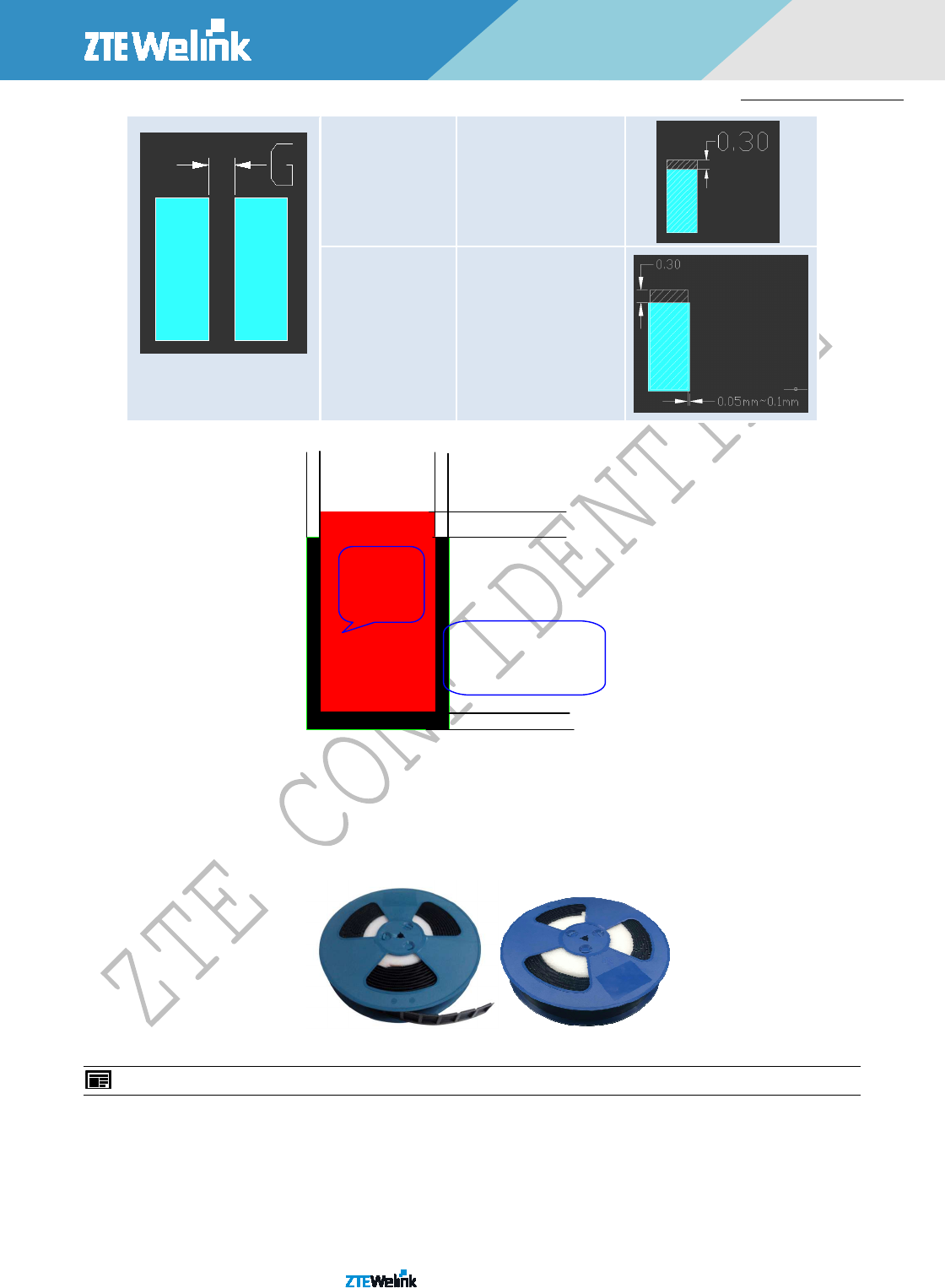
All Rights reserved, No Spreading abroad without Permission 37
ME36
3
0
Hardware Development Guide
G≥0.5mm Drill holes at 100% scale in
the direction of width;
extend 0.3mm outward in
the direction of length
G<0.5mm Contract 0.05~0.1mm in the
direction of width;
Contract 0.05~0.1mm inward
in the direction of length,
extend 0.5mm outward in
the direction of length.
Figure 7-1 Module Board’s Steel Mesh Diagram
7.3.3. M
ODULE
B
OARD
’
S
SMT
PROCESS
1) SMT Tape Reel:
The tape reels, which are suitable for SMT, have been made for most ZTE modules. If the module has provided the tape reel
itself and meets the SMT requirements, customers can directly use it for module SMT.
Figure 7-2 Material Module Pallet
NOTE: Figure7-3 is just for reference, it doesn’t represent the actual Material Module Tape Reel.
Otherwise, customers need make a loading tool similar to the tape reel. Customers can take out the module from the
packaging box, put them into the tape according to the sequence and direction, and then start SMT.
2) Tape Reel Dimension (unit: mm):
The following picuture is the tape reel specific dimension for your reference:
0.1mm 0.1mm
0.5mm
0.1mm
Steel
mesh
opening
Module PAD on PCB
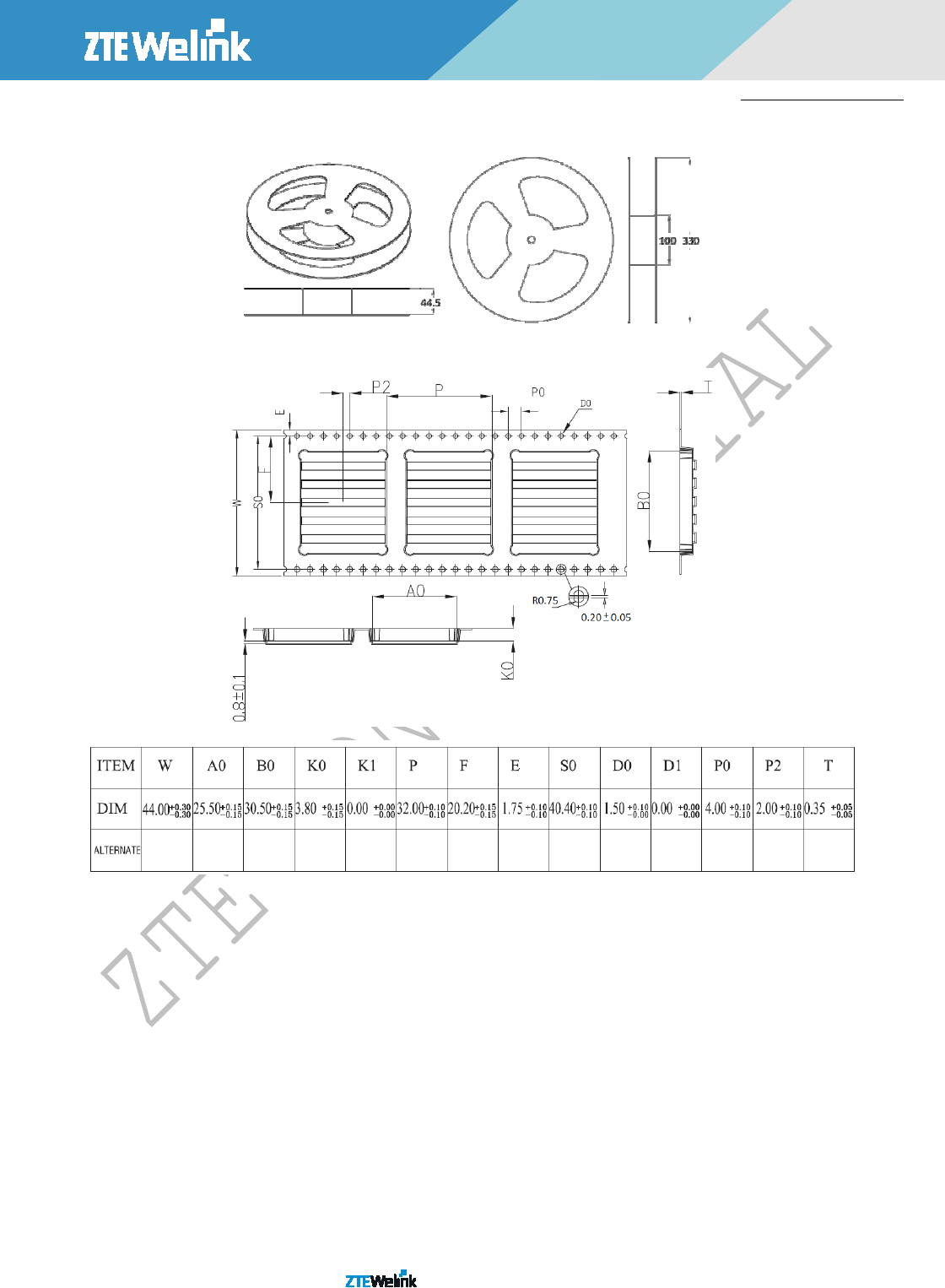
All Rights reserved, No Spreading abroad without Permission 38
ME36
3
0
Hardware Development Guide
A: Whole dimension:
B: Detailed dimension:
Figure 7-3 Tape Reel Dimension
3) Mounting Pressure:
In order to ensure a good contact between the module and the solder paste on main board, the pressure of placing the module
board on main board should be 2-5N according to our experiences. Different modules have different numbers of pads, therefore the
pressure selected are different. Customers can select proper pressure based on their own situations to suppress the module paste as
little as possible, in order to avoid the surface tension of the solder paste melts too much to drag the module during reflow.
7.3.4. M
ODULE
S
OLDERING
R
EFLOW
C
URVE
Module soldering furnace temperature curve is:
Peak value: 245+0/-5℃
≥217℃: 30〜〜60S
150〜200℃: 60〜〜120S
Temperature rise slope: <3℃/S
Temperature drop rate: -2〜-4℃/S
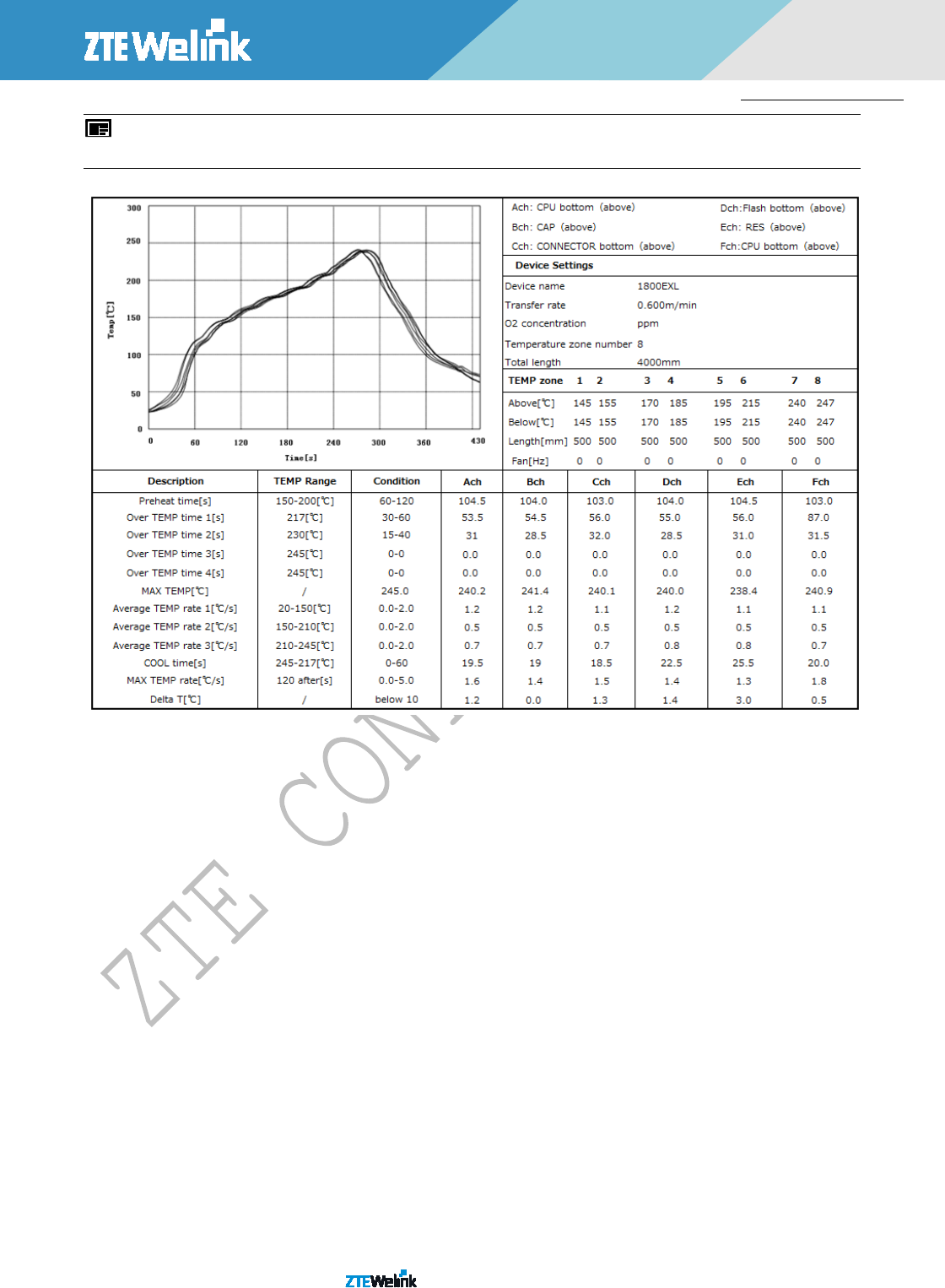
All Rights reserved, No Spreading abroad without Permission 39
ME36
3
0
Hardware Development Guide
NOTE: The test board of furnace temperature must be the main board with the module board mounted on, and there must be testing points
at the position of module board.
Figure 7-4
Module Furnace Temperature Curve Reference Diagram
7.3.5. R
EFLOW METHOD
If the main board used by customers is a double-sided board, it is recommended to mount the module board at the second
time. In addition, it is preferable for the main board to reflow on the mesh belt when mounting at the first time and the second time.
If such failure is caused by any special reason, the fixture should be also used to make such main board reflow on the track so as to
avoid the deformation of PCB during the reflow process.
7.3.6. M
AINTENANCE OF DEFECTS
If poor welding occurs to the module board and main board, e.g., pseudo soldering of the module board and main board, the
welder can directly use the soldering iron to repair welding according to the factory’s normal welding parameters.
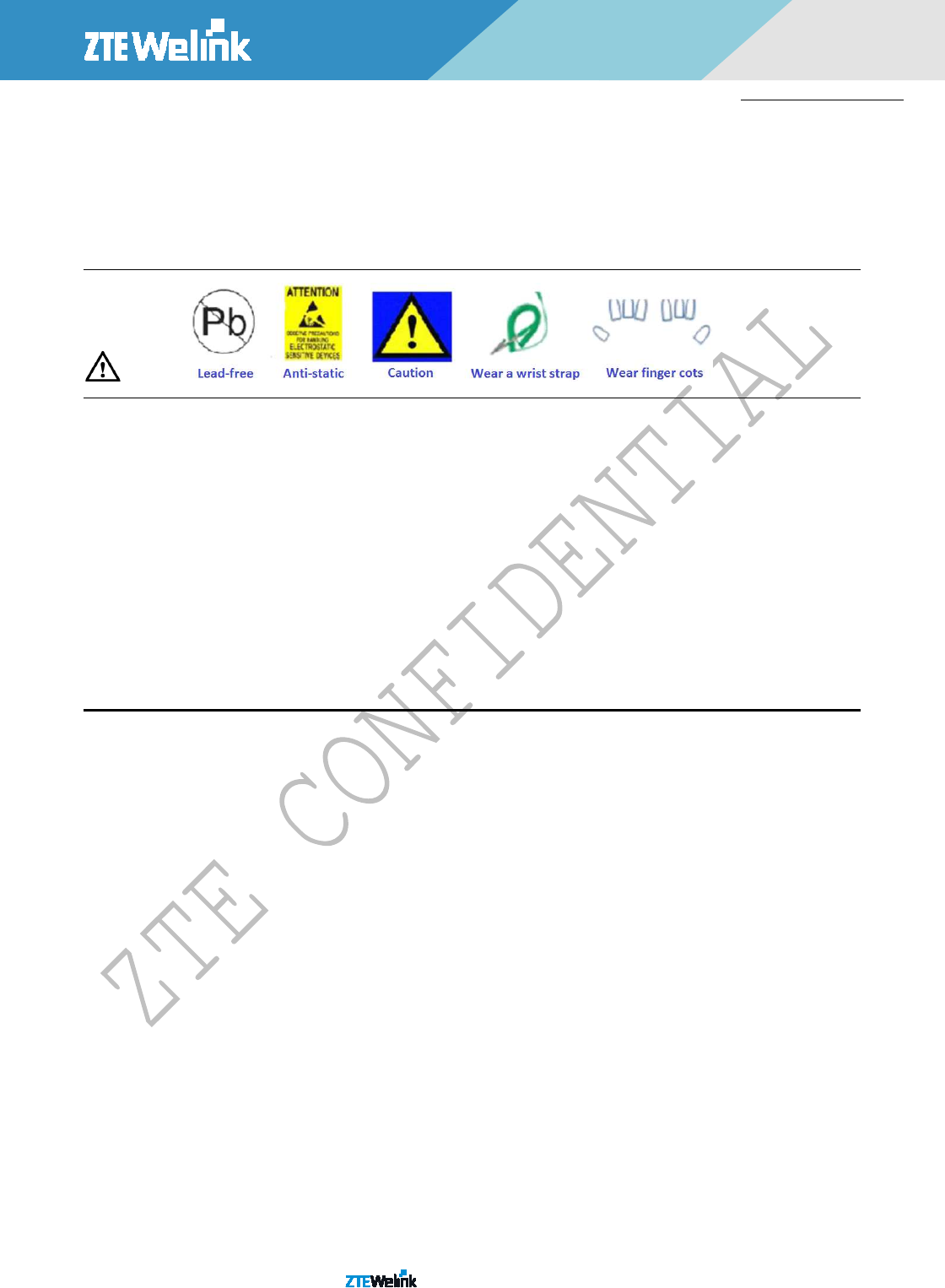
All Rights reserved, No Spreading abroad without Permission 40
ME36
3
0
Hardware Development Guide
7.4. M
ODULE
’
S
B
AKING
R
EQUIREMENTS
The module must be baked prior to the second reflow.
7.4.1. M
ODULE
’
S
B
AKING
E
NVIRONMENT
The operators must wear dust-free finger cots and anti-static wrist strap under the lead-free and good static-resistant
environment. Refer to the following environment requirements:
WARNING:
The product’s transportation, storage and processing must conform to IPC/JEDEC J-STD-033.
7.4.2. B
AKING DEVICE AND OPERATION PROCEDURE
Baking device: Any oven where the temperature can rise up to 125°C or above.
Precautions regarding baking: during the baking process, the modules should be put in the high-temperature resistant pallet
flatly and slightly to avoid the collisions and frictions between the modules. During the baking process, do not overlay the modules
directly because it might cause damage to the module’s chipset.
7.4.3. M
ODULE
B
AKING
C
ONDITIONS
See the baking parameters in Table 7-1.
8. F
EDERAL
C
OMMUNICATION
C
OMMISSION
I
NTERFERENCE
S
TATEMENT
This device complies with Part 15 of the FCC Rules. Operation is subject to the following two conditions: (1) This
device may not cause harmful interference, and (2) this device must accept any interference received, including
interference that may cause undesired operation.
This equipment has been tested and found to comply with the limits for a Class B digital device, pursuant to Part
15 of the FCC Rules. These limits are designed to provide reasonable protection against harmful interference in a
residential installation. This equipment generates, uses and can radiate radio frequency energy and, if not installed
and used in accordance with the instructions, may cause harmful interference to radio communications. However,
there is no guarantee that interference will not occur in a particular installation. If this equipment does cause harmful
interference to radio or television reception, which can be determined by turning the equipment off and on, the user
is encouraged to try to correct the interference by one of the following measures:
● Reorient or relocate the receiving antenna.
● Increase the separation between the equipment and receiver.
● Connect the equipment into an outlet on a circuit different from that to which the receiver is connected.
● Consult the dealer or an experienced radio/TV technician for help.
FCC Caution:
Any changes or modifications not expressly approved by the party responsible for compliance could void the
user's authority to operate this equipment.
This transmitter must not be co-located or operating in conjunction with any other antenna or transmitter.
Radiation Exposure Statement:
This equipment complies with FCC radiation exposure limits set forth for an uncontrolled environment. This
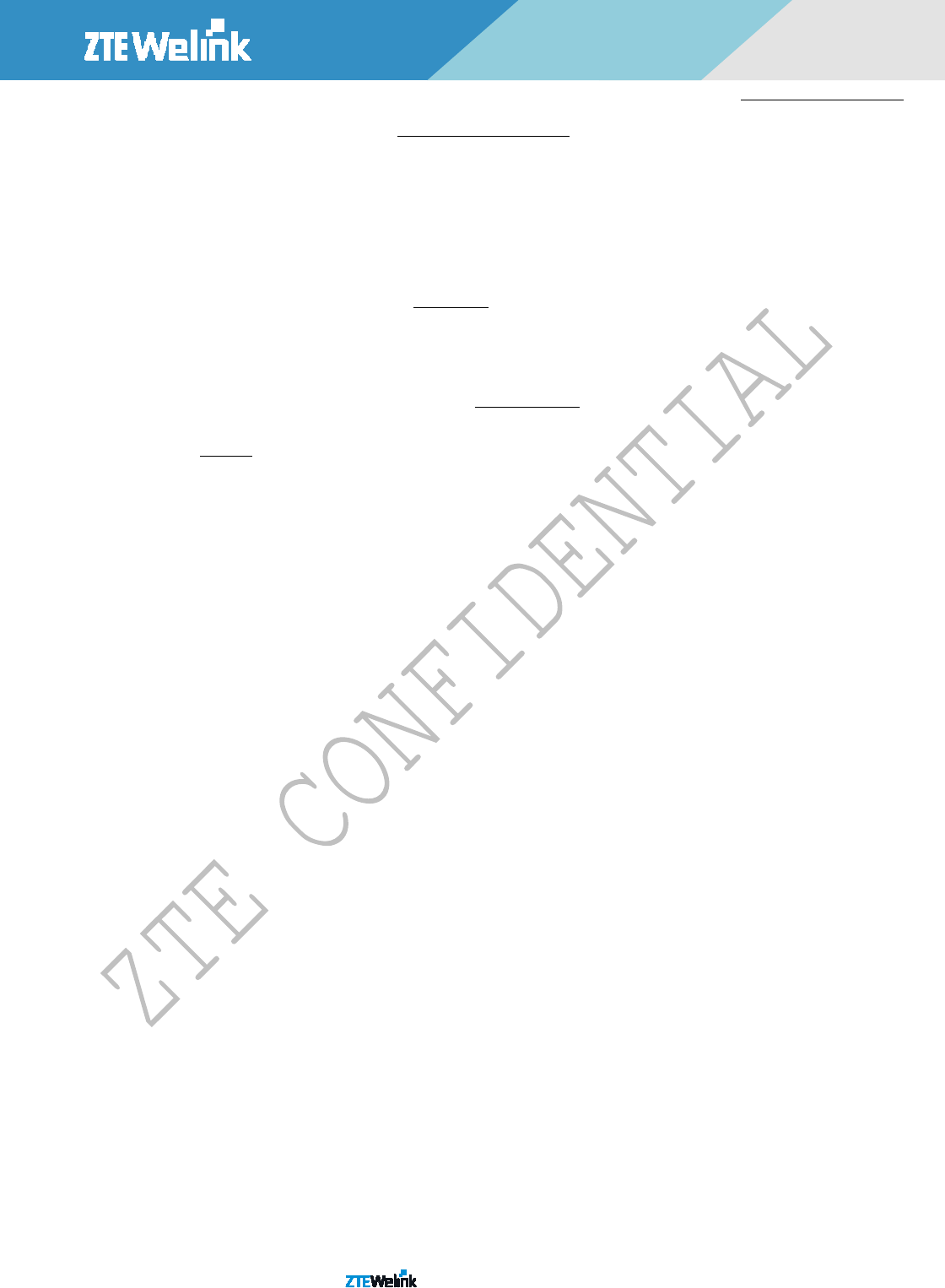
All Rights reserved, No Spreading abroad without Permission 41
ME36
3
0
Hardware Development Guide
equipment should be installed and operated with minimum distance 20cm between the radiator & your body.
This device is intended only for OEM integrators under the following conditions:
1) The antenna must be installed such that 20 cm is maintained between the antenna and
users, and the maximum antenna gain allowed for use with this device is 4.8 dBi.
2) The transmitter module may not be co-located with any other transmitter or antenna.
As long as 2 conditions above are met, further transmitter test will not be required. However, the OEM
integrator is still responsible for testing their end-product for any additional compliance requirements required
with this module installed
IMPORTANT NOTE: In the event that these conditions can not be met (for example certain laptop
configurations or co-location with another transmitter), then the FCC authorization is no longer considered valid
and the FCC ID can not be used on the final product. In these circumstances, the OEM integrator will be
responsible for re-evaluating the end product (including the transmitter) and obtaining a separate FCC
authorization.
End Product Labeling
This transmitter module is authorized only for use in device where the antenna may be installed such that 20
cm may be maintained between the antenna and users. The final end product must be labeled in a visible area
with the following: “Contains FCC ID:SRQ-ME3630”. The grantee's FCC ID can be used only when all FCC
compliance requirements are met.
Manual Information To the End User
The OEM integrator has to be aware not to provide information to the end user regarding how to install or
remove this RF module in the user’s manual of the end product which integrates this module. The end user
manual shall include all required regulatory information/warning as show in this manual.